B-29 Doc at Lone Star Flight Museum - May 5th, 2021
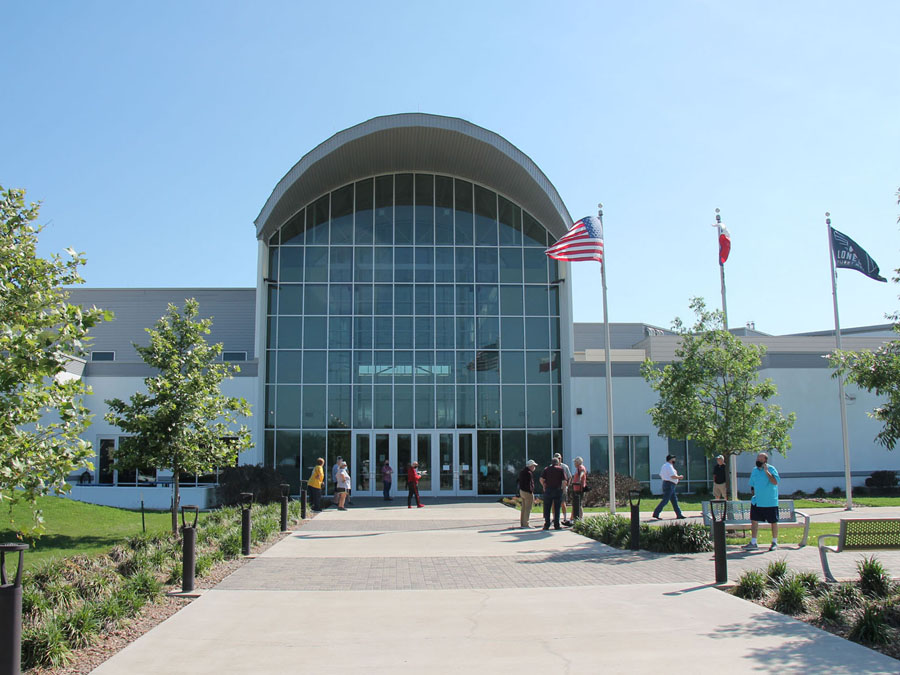
The B-29 known as Doc visits the Lone Star Flight Museum at Ellington Field May 5-9, 2021
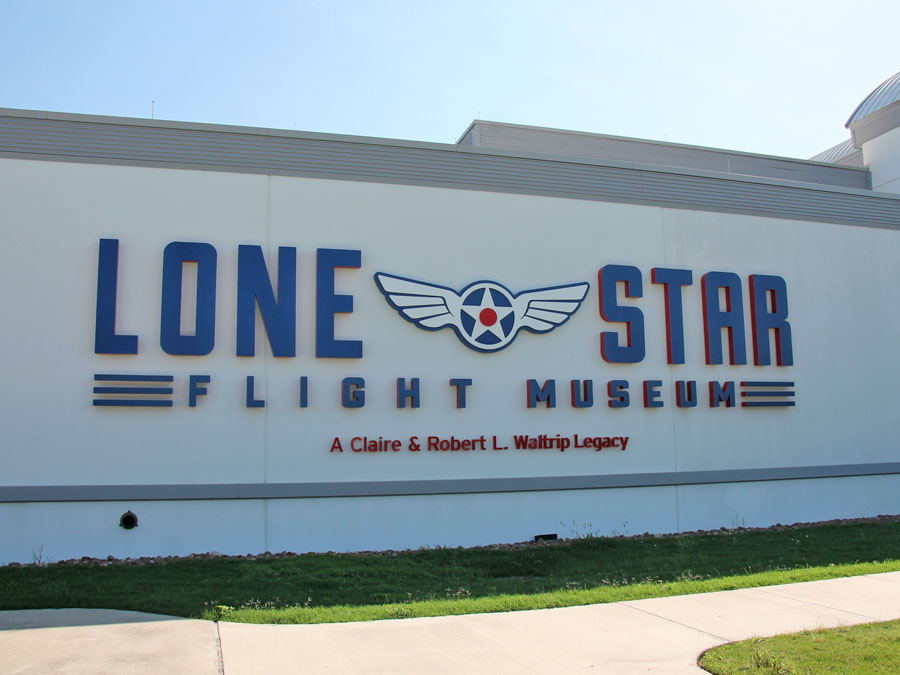
LSFM moved to Ellington after Hurricane Ike and had its grand opening on September 16, 2017
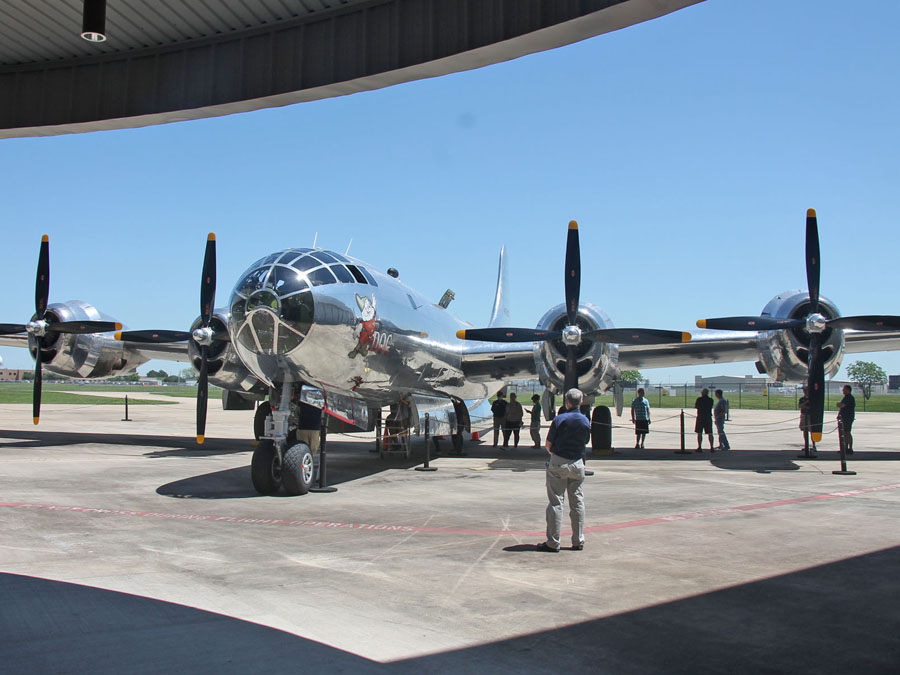
"Doc" was built at Wichita, KS in March of 1945, B-29 No. 44-69972, one of only two air worthy B-29s

"Doc" never saw combat, was based at Griffiss AFB, NY as a radar calibration aircraft in 1951
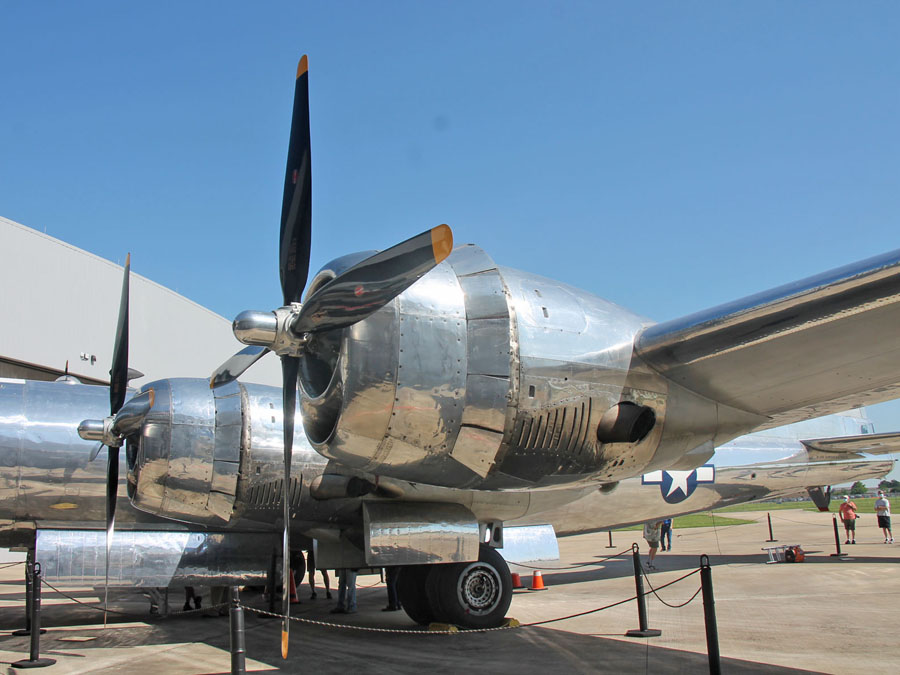
Griffiss squadrons members named their B-29s after Snow White and the Seven Dwarfs characters
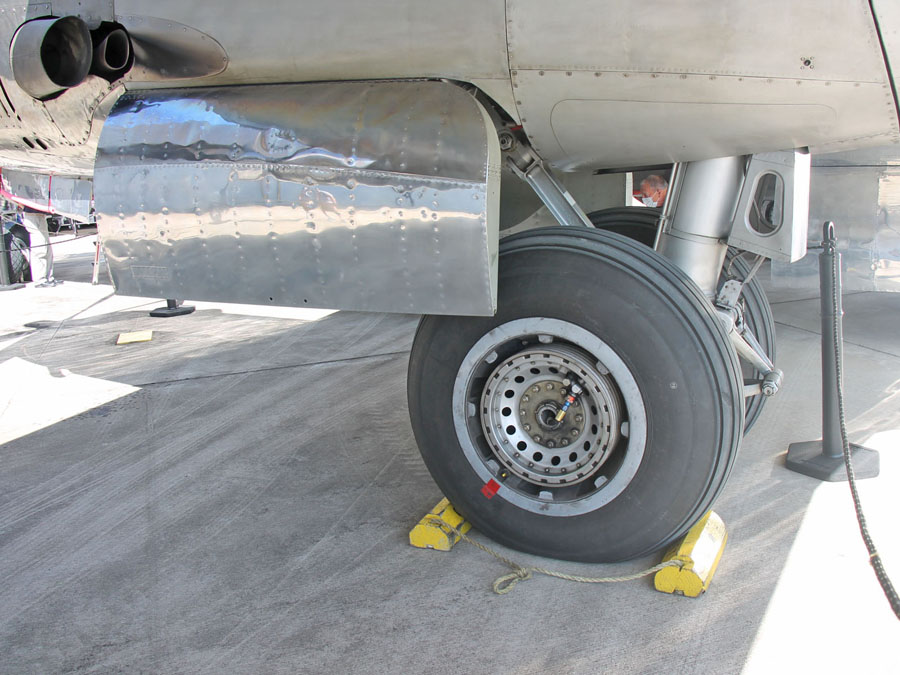
The aircraft was moved to Yuma County Airport in Arizona in 1955 to be used as a target tug
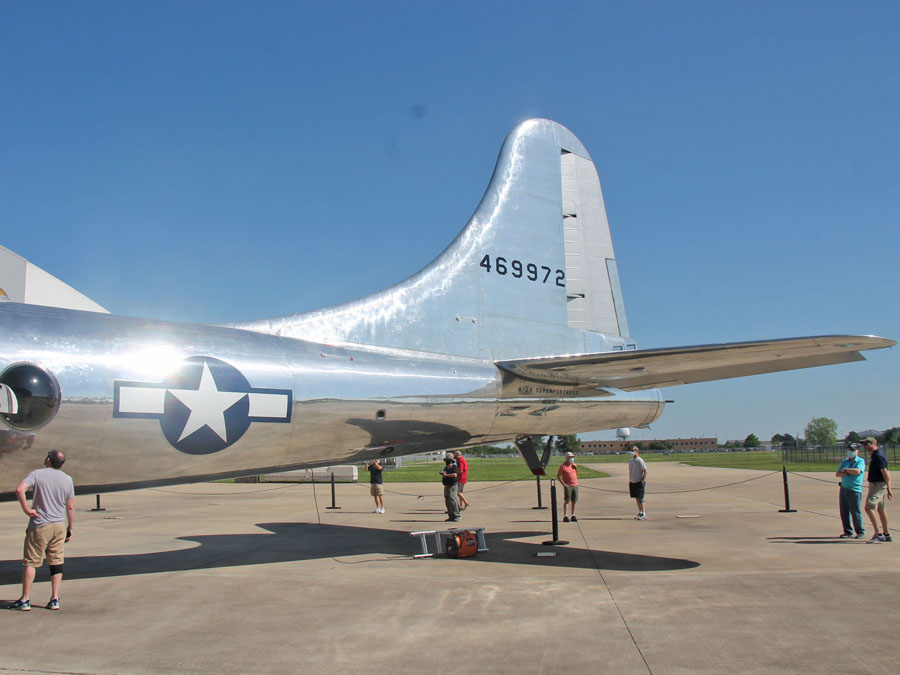
Retired in 1956 and sent to the Naval Air Weapons Station China Lake as a ballistic missile target
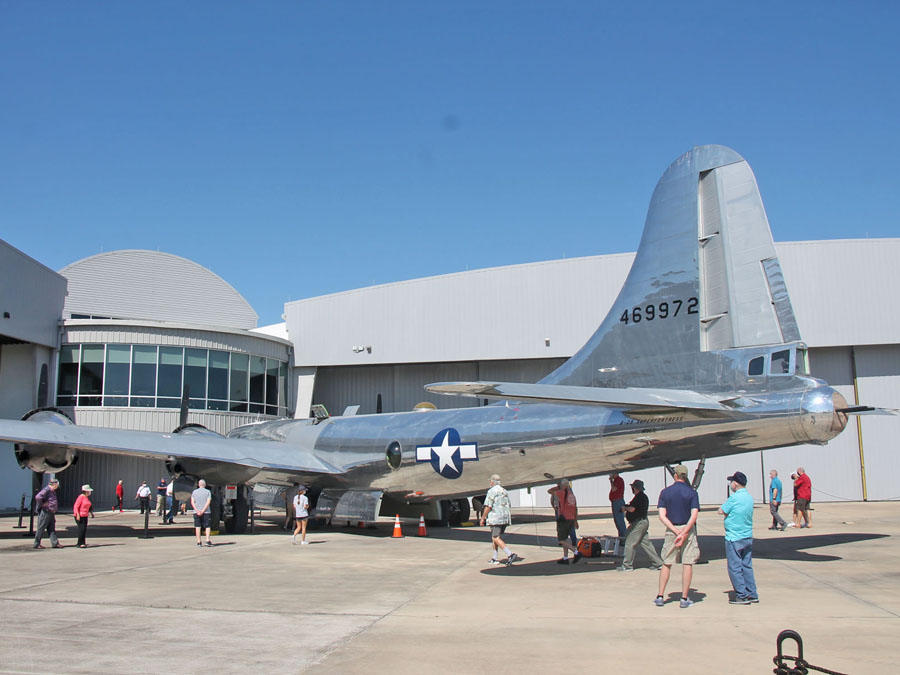
Doc sat in the Mojave Desert for 42 years serving as a target for the U.S. Navy
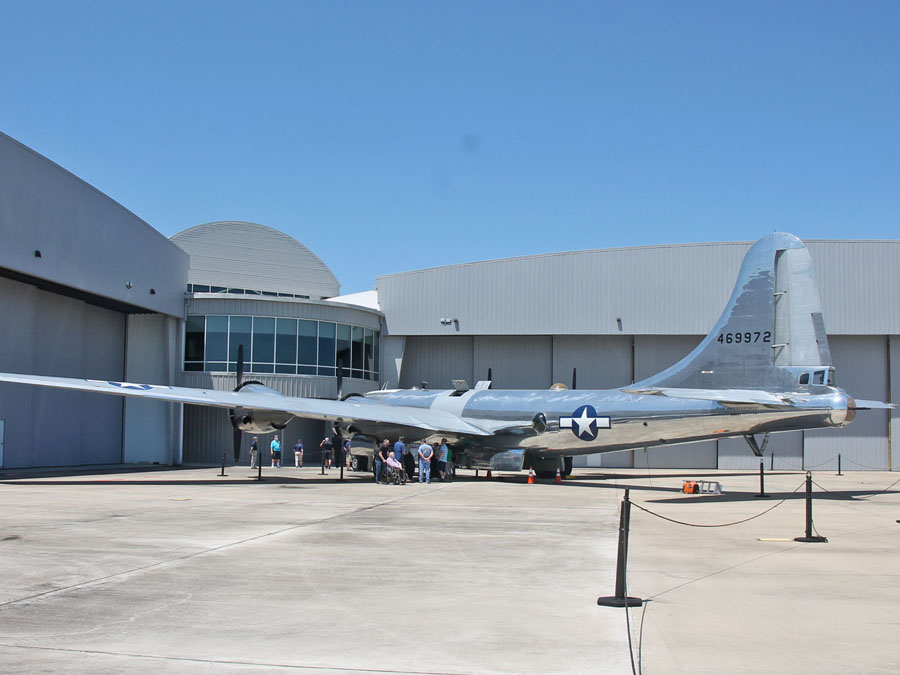
Tony Mazzolini found "Doc" in 1987 and began plans to remove and restore the B-29 to flying status
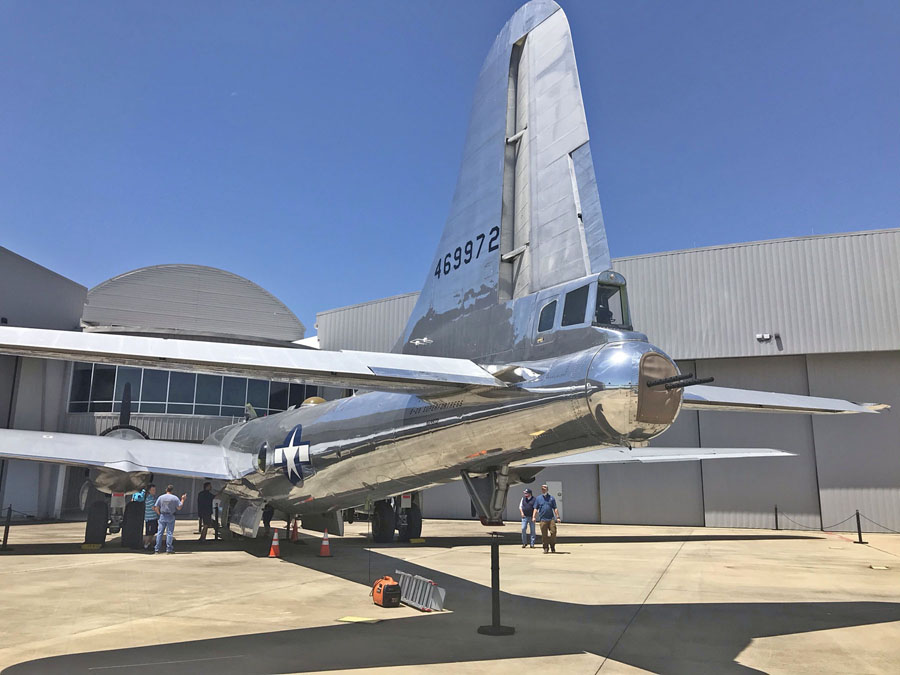
It would take 12 years before Mazzolini wwould take possession of the airplane from the US Govt.
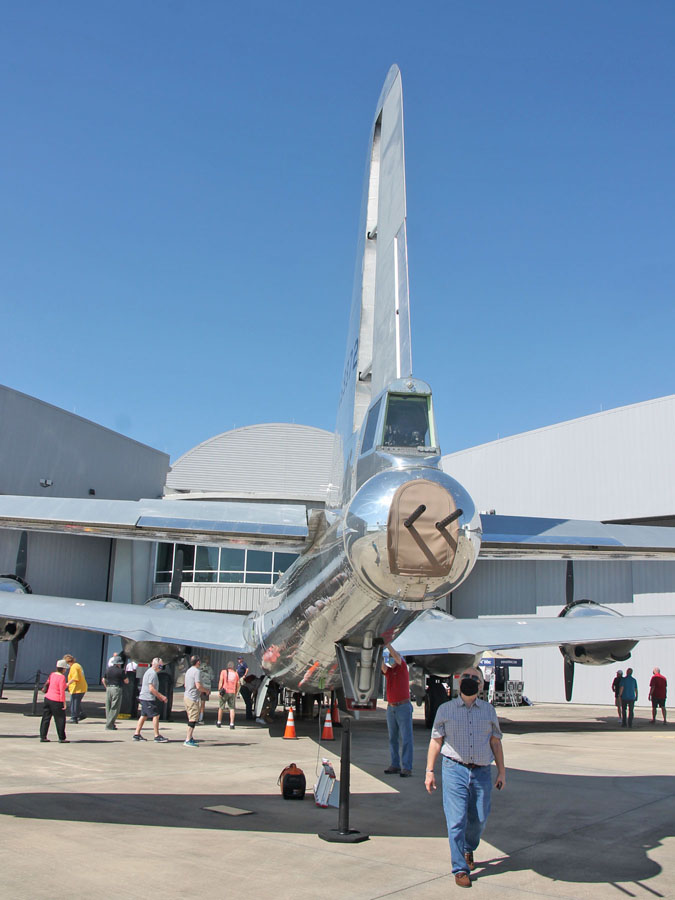
Doc returned to Wichita in sections on flatbed trailers in May of 2000
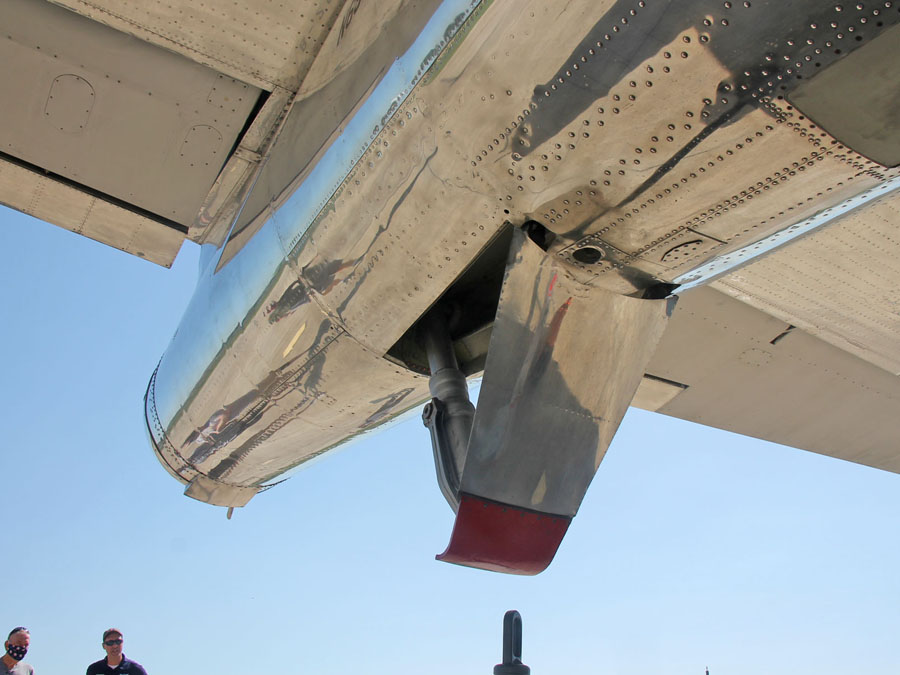
The Landing/Takeoff skid plate keeps the tail from dragging on the runway
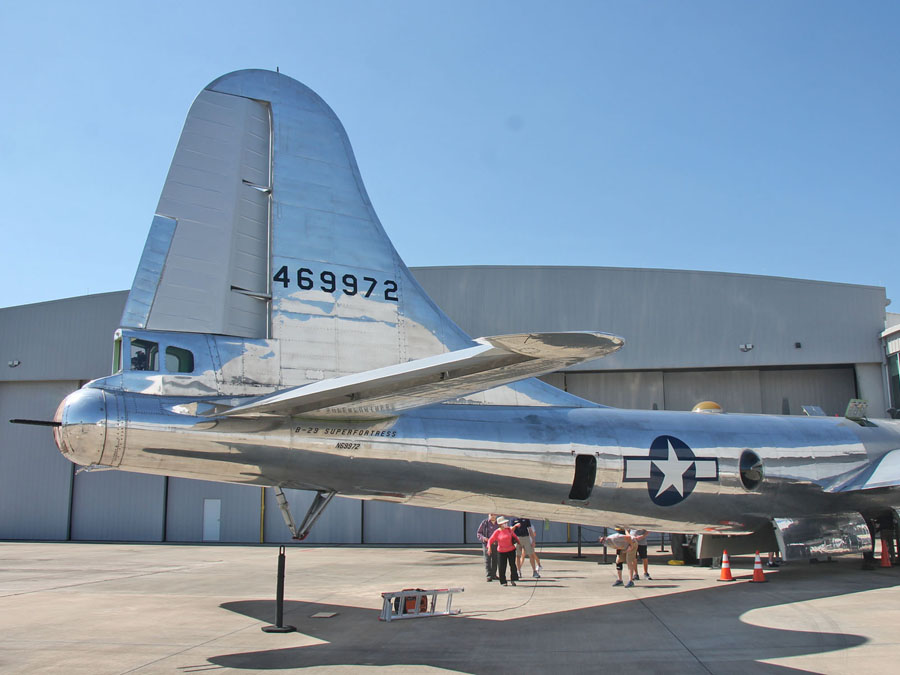
Proceed to the open crew entry door behind the US Star emblem
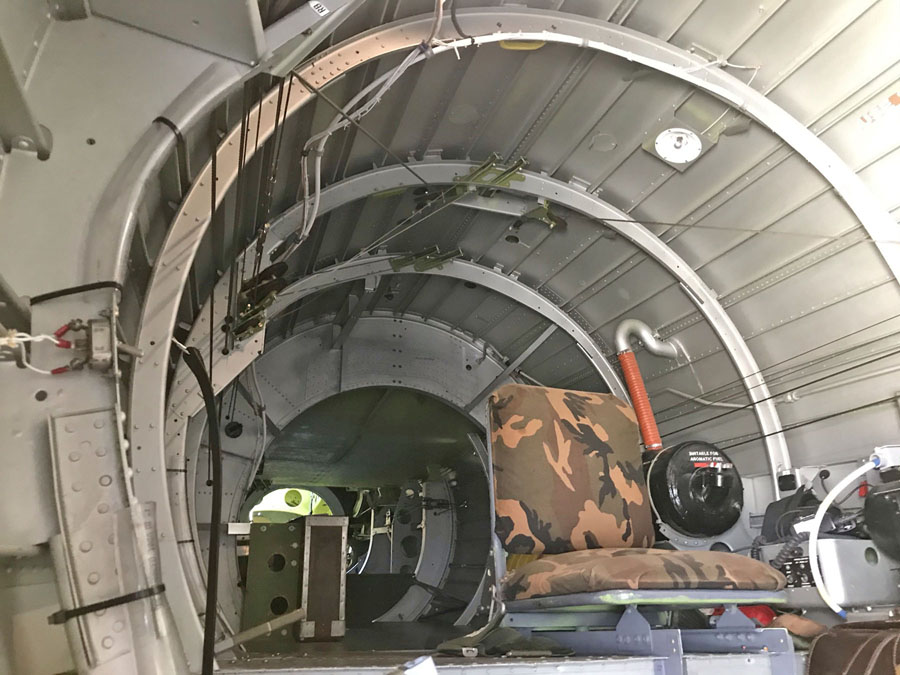
Look inside the crew entry door opening toward the tail
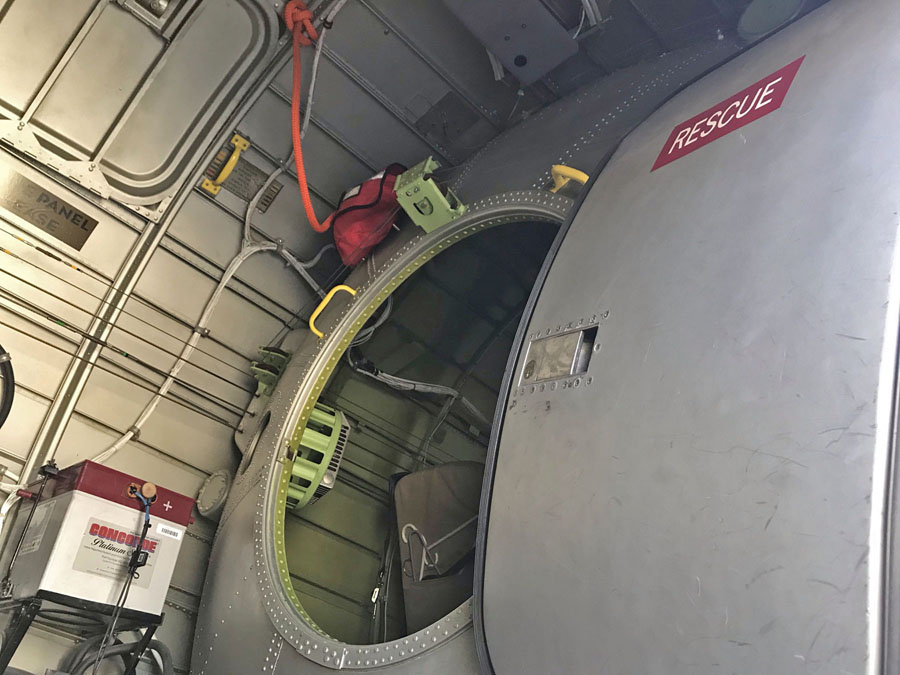
Looking right at the open pressure bulkhead access door that leads forward
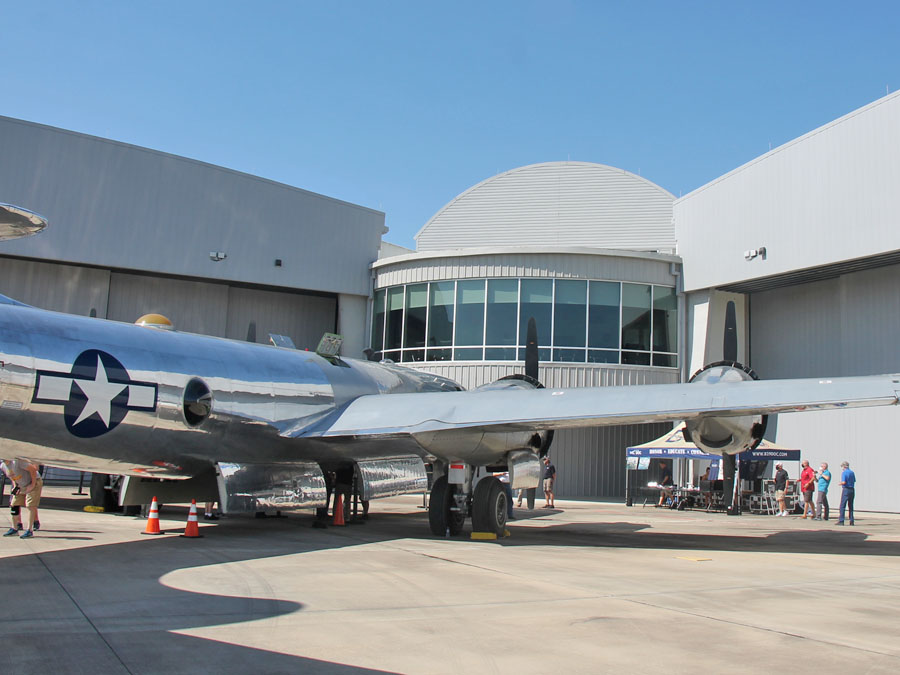
Visitors enter the cockpit area from the forward bomb bay opening
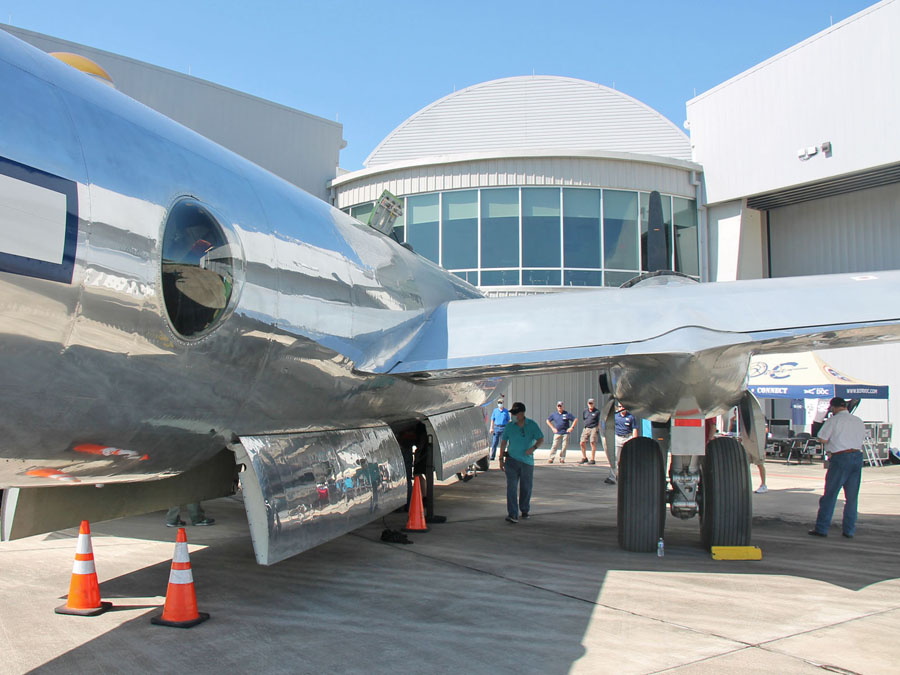
Move forward and next peek inside the gun aiming side blister window

See upper gunner's seat and openings to the bomb bay and pressurized tunnel to the front cabin
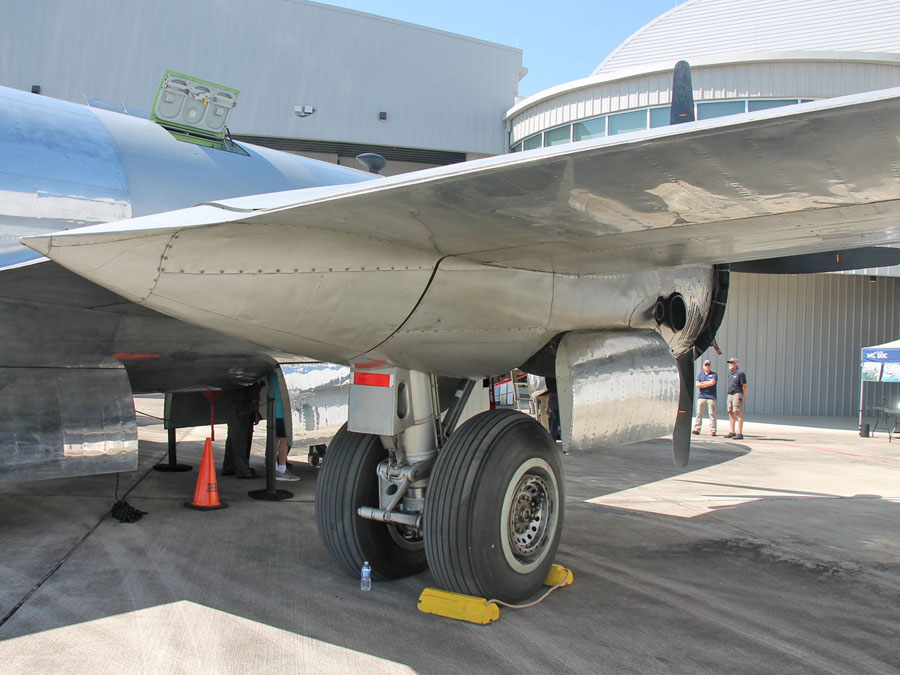
Volunteers reassembled the B-29 in 2000 and drew up plans to restore the historic warbird
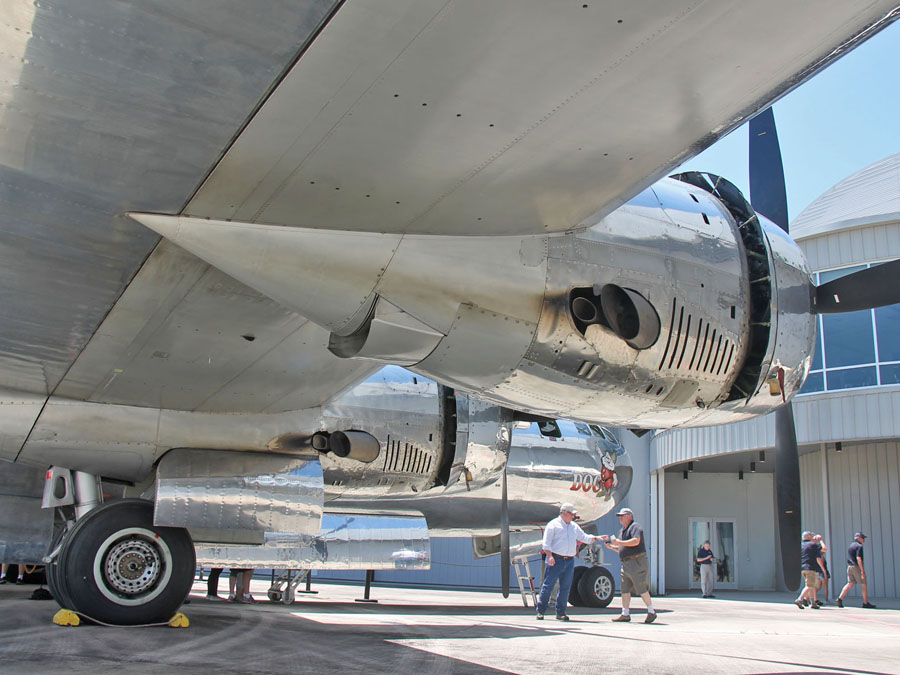
Doc’s Friends was formed in 2013, a non-profit board, to manage and complete its restoration
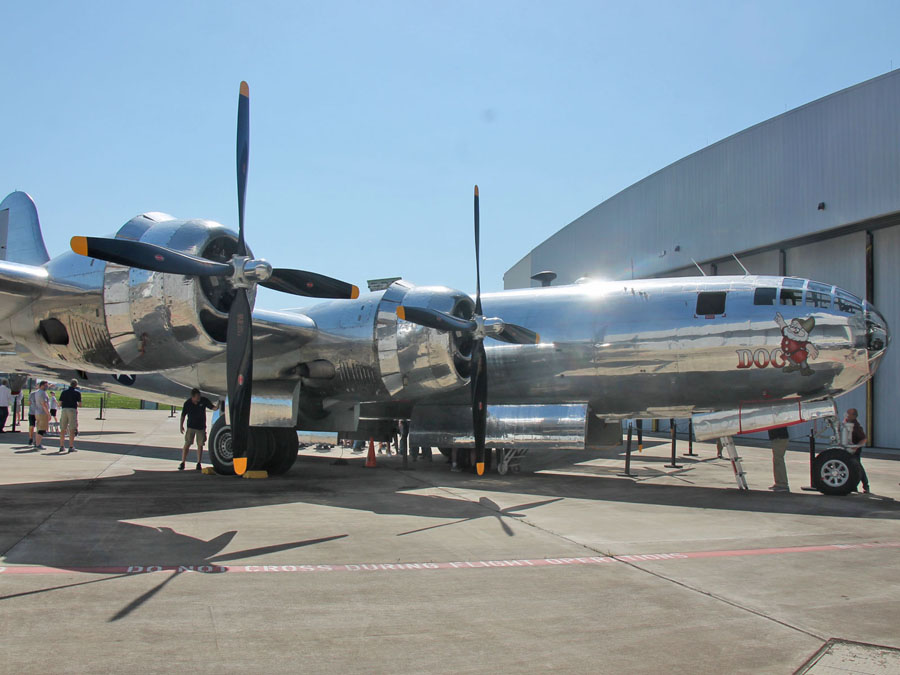
Doc was declared airworthy in June 2016 and made its first flight July 17, 2016
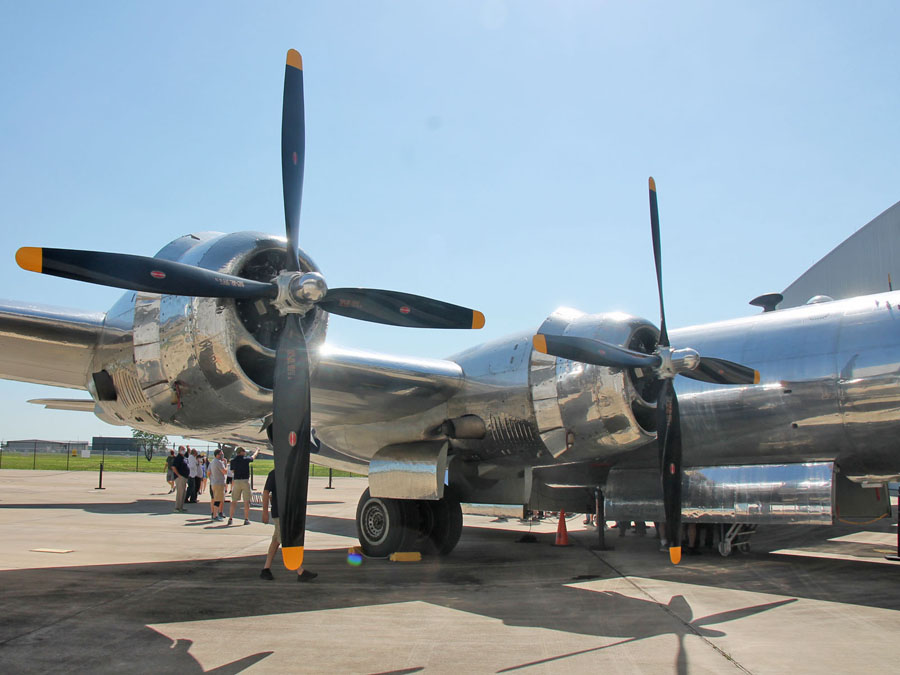
Doc attended eight air shows in four states in 2017 attracting record crowds
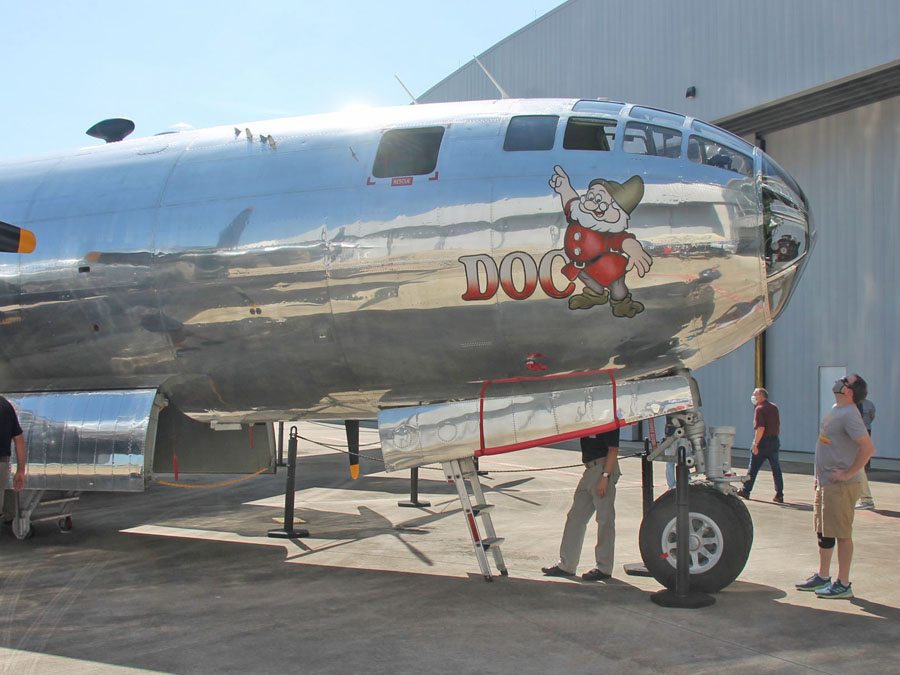
Construction began on Doc's KS home 3/2018, completed 11/2018 & opened to the public in 1/2019
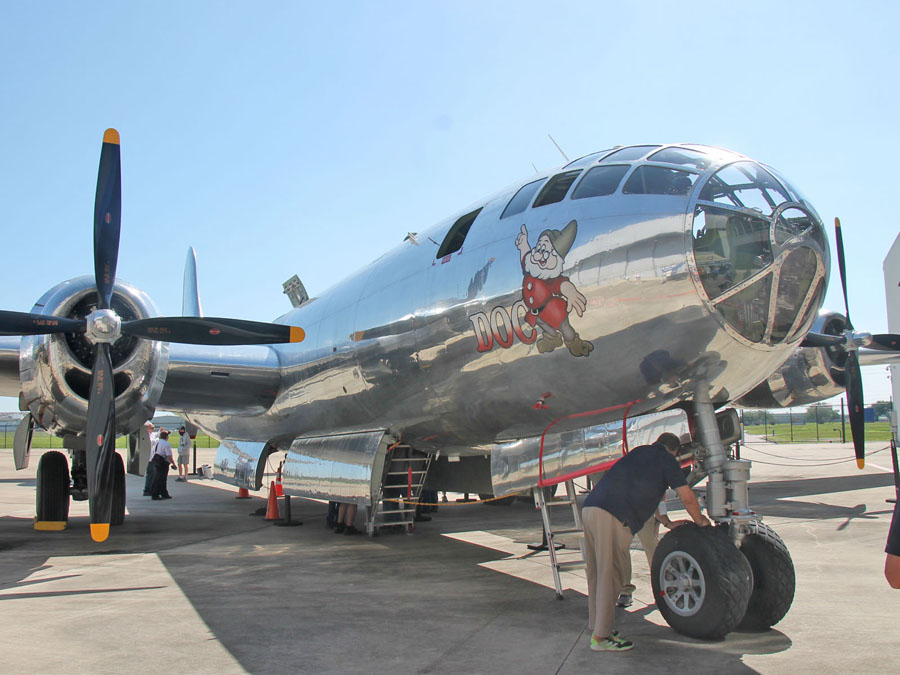
Time to take a peak inside by entering through the forward bomb bay
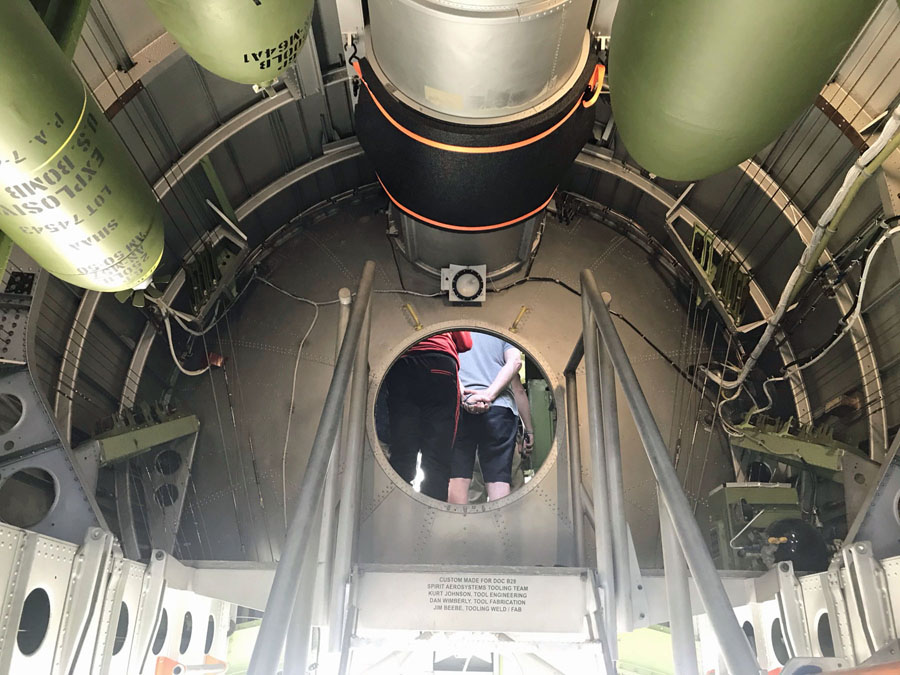
Stand up in the bomb bay and will enter through the forward cabin rear pressure bulkhead
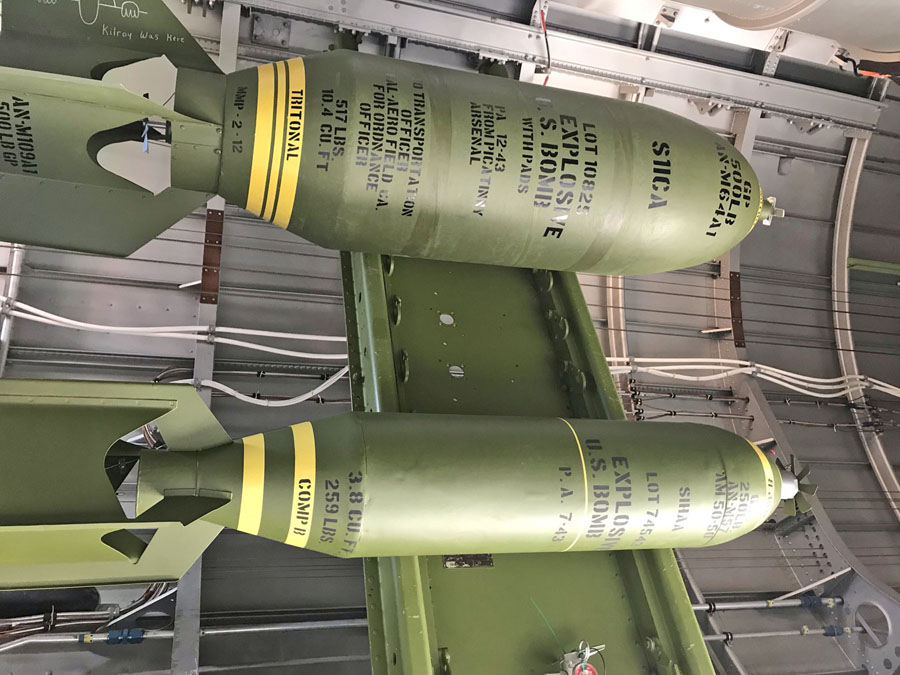
Check out the sample bombs to the left while waiting, a 500 pound and 250 pound bomb
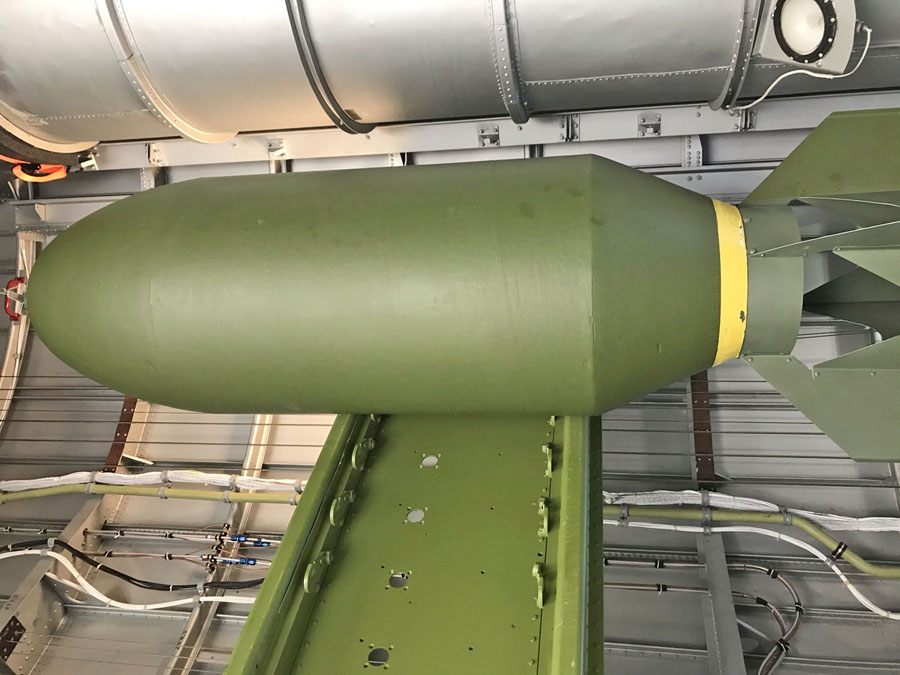
Bigger bomb to the right but no writing identifying it
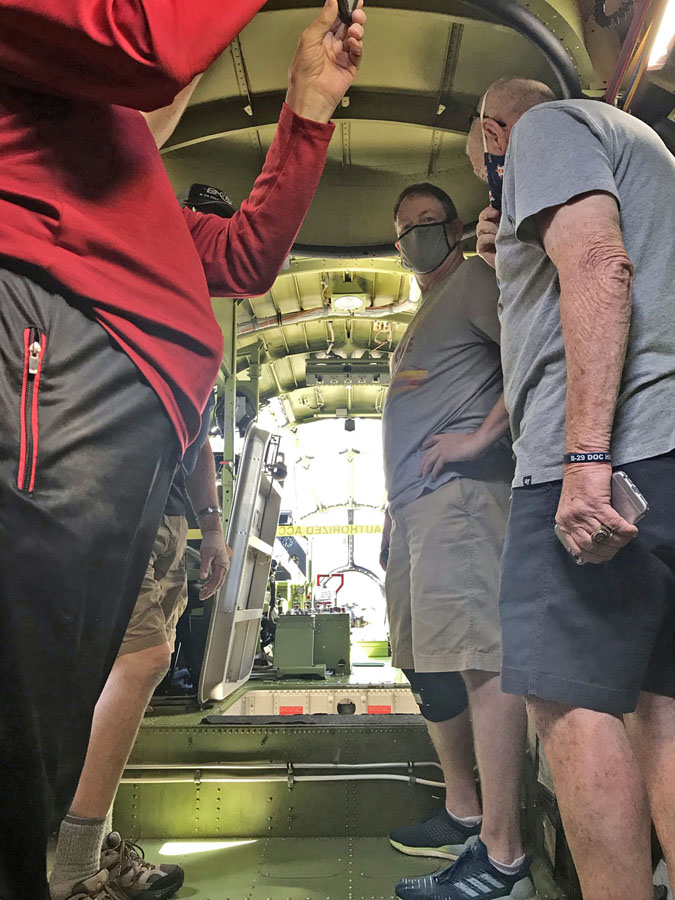
Wait while a crewman discusses the bomber with 3 guests who'll exit through the forward hatch
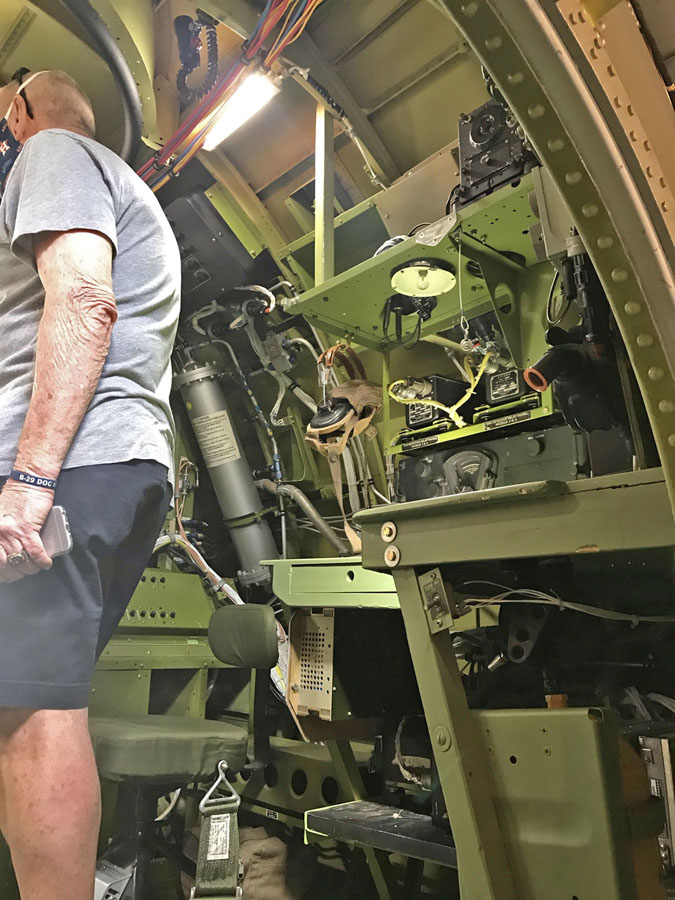
View the radio operator's seat in the rear left before entering the front crew cabin
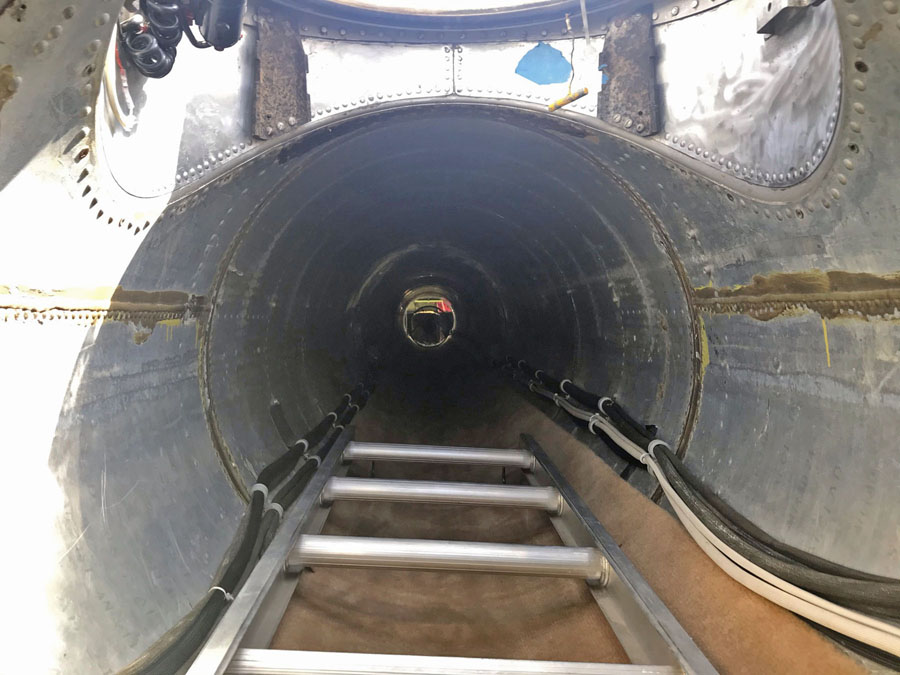
Step inside and look down the pressurized tunnel connecting the front and rear crew cabins
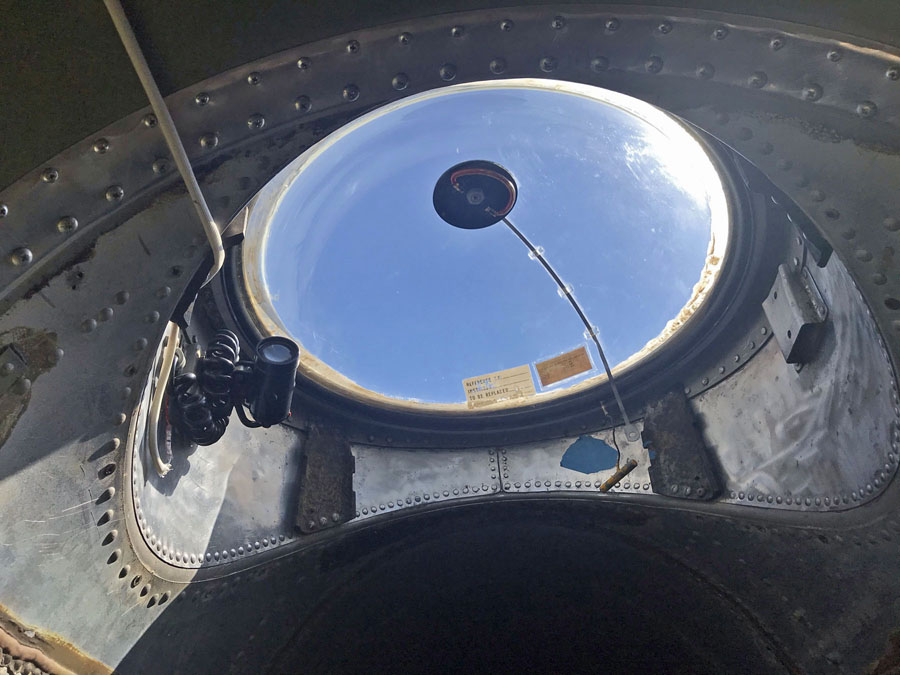
Observation window directly above the entrance to the pressurized tunnel
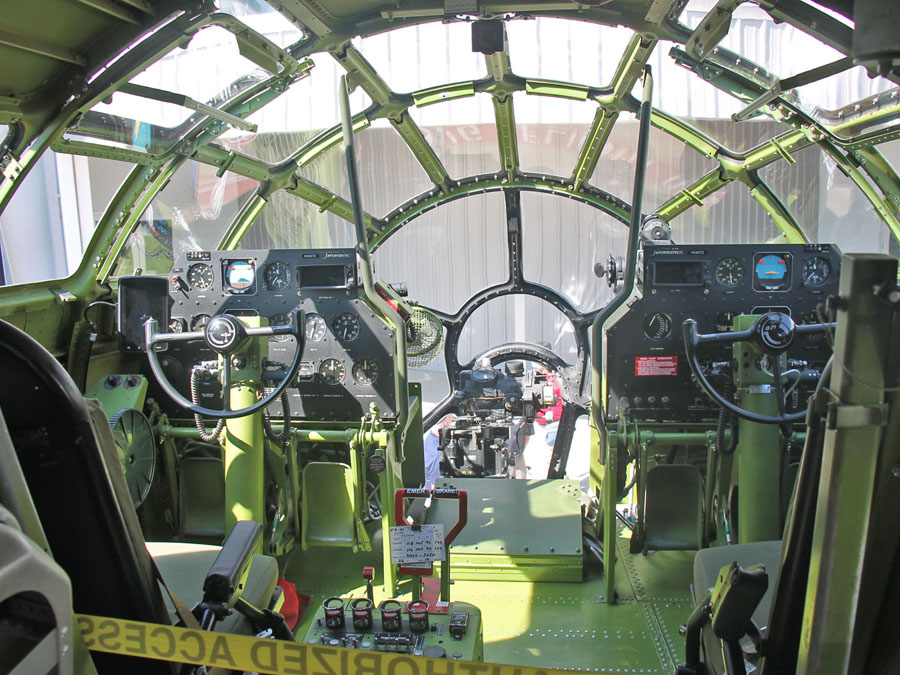
Turn around and view the pilot's seat left, bombardier station forward and copilot's seat on the right
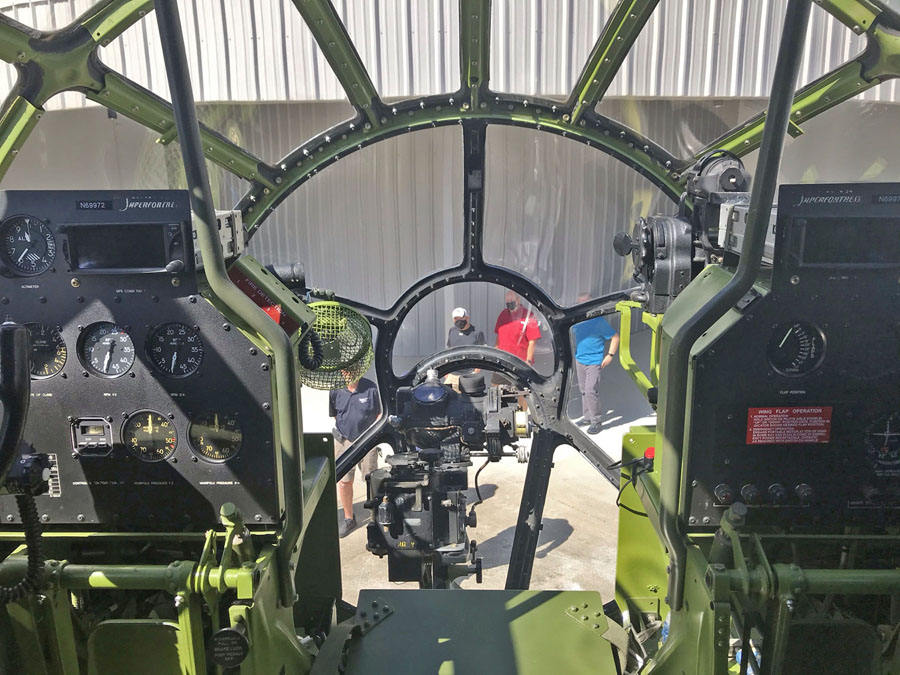
Zoom toward the bombardier station forward
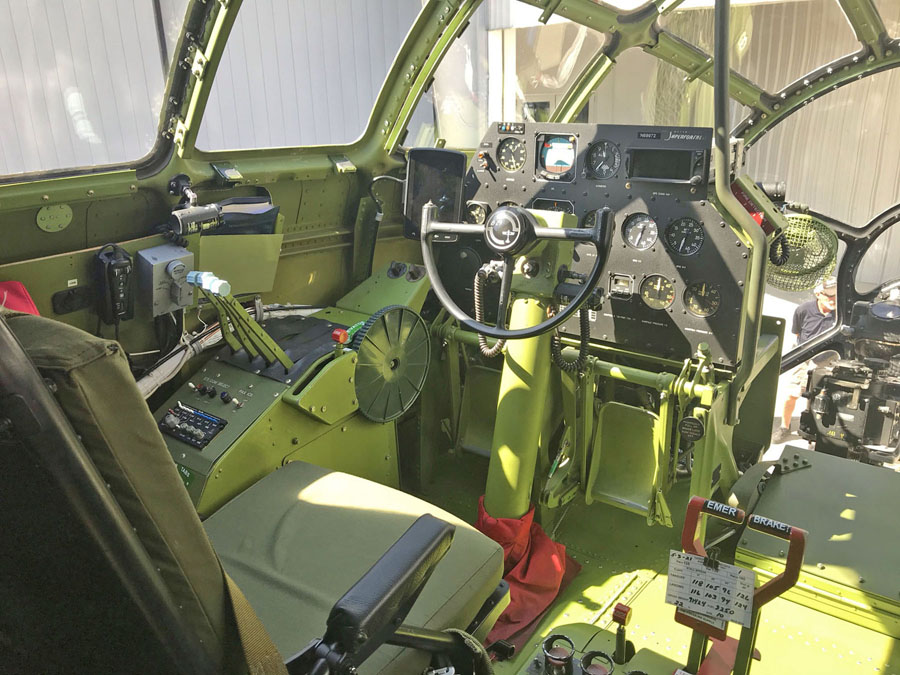
Zoom in on the controls at the pilot's station
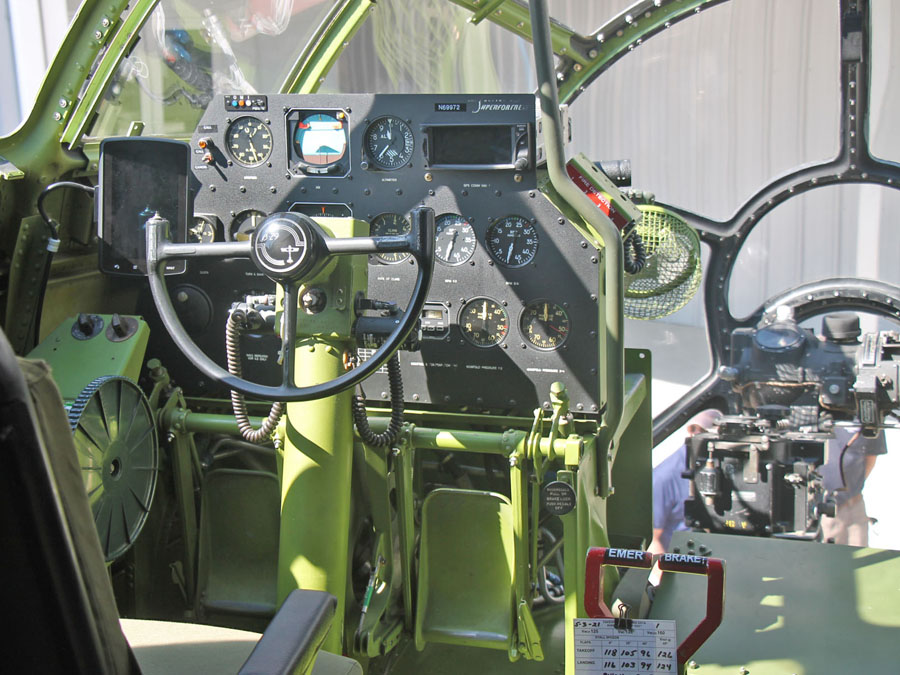
Tail number and Superfortress name tag help the pilot remember what he is flying
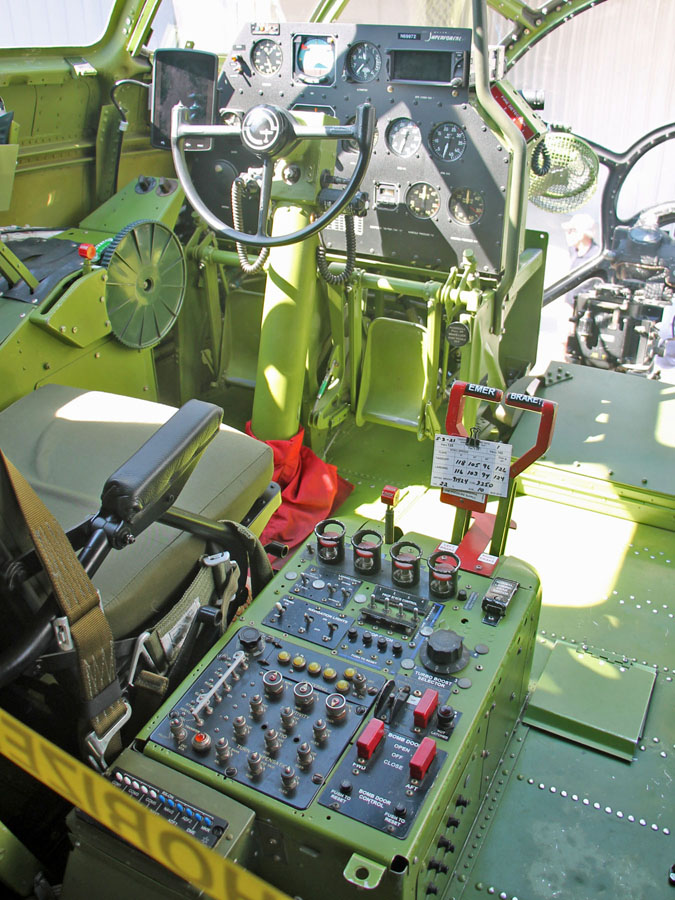
Includ the pilot's right consule controls
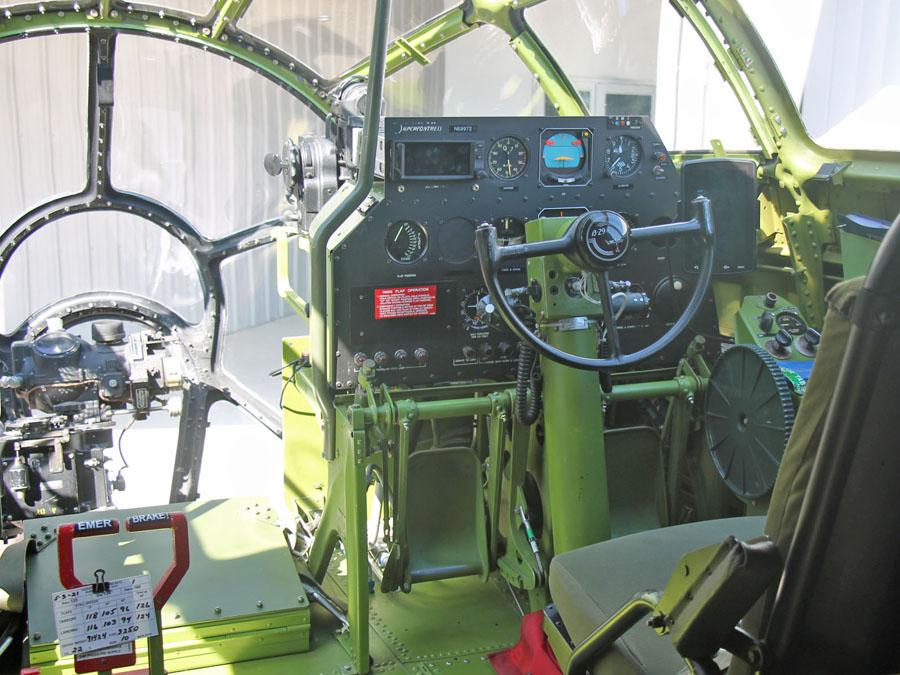
Focus on the copilot's station

Copilot does not have the center console controls the pilot has
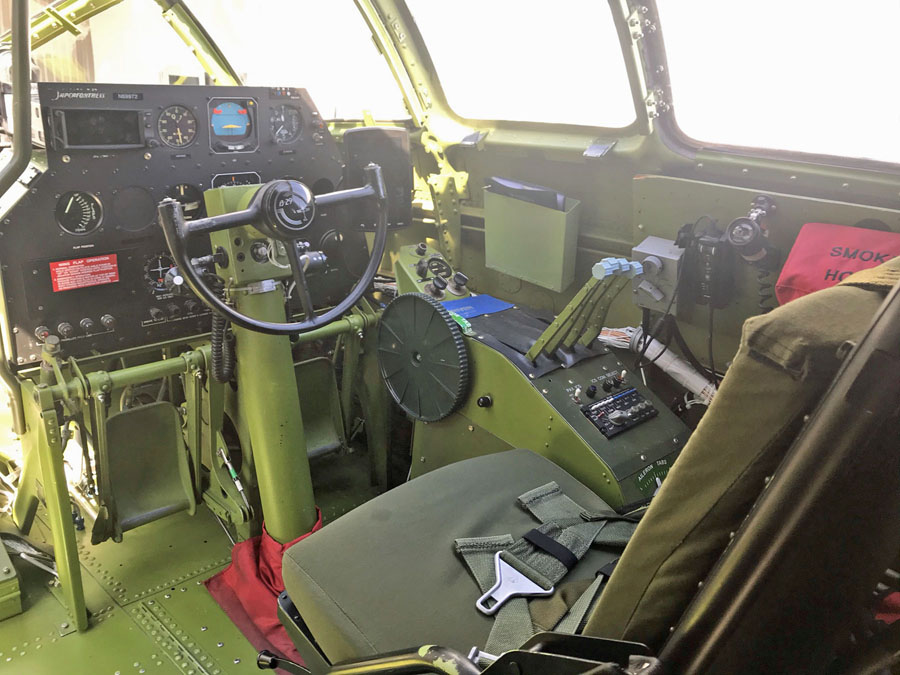
Otherwise the copilot station is a mirror image of the pilot's station
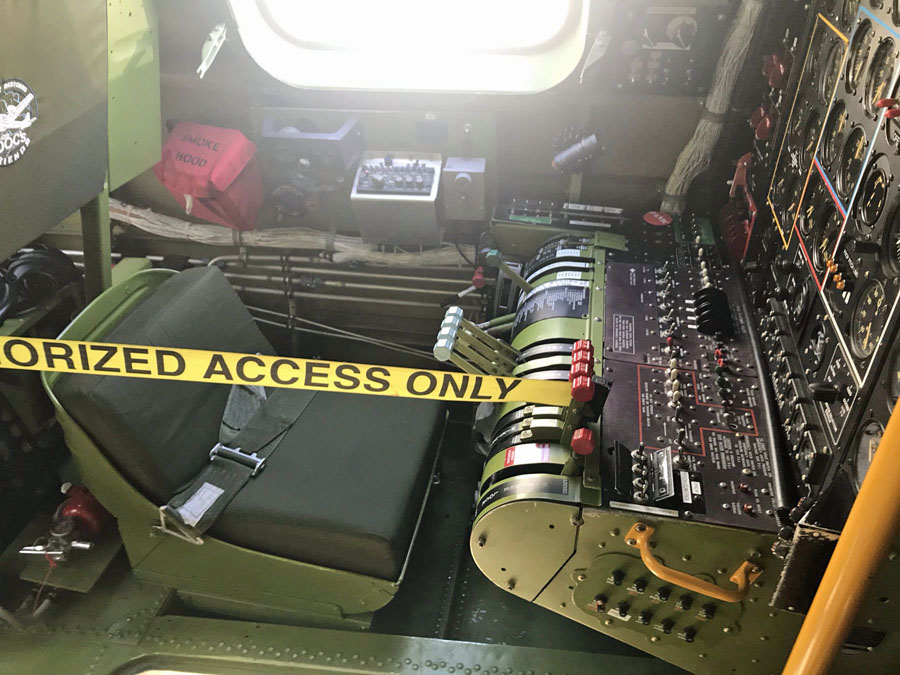
Flight engineer's station
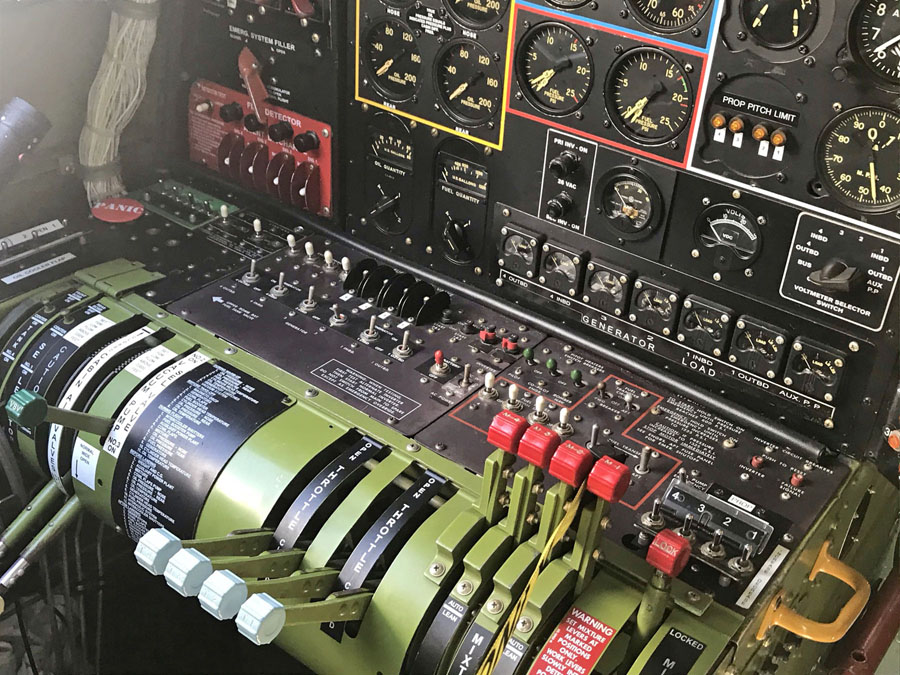
Flight engineer controls cabin pressure, engine throttle and controls the panic button on the left
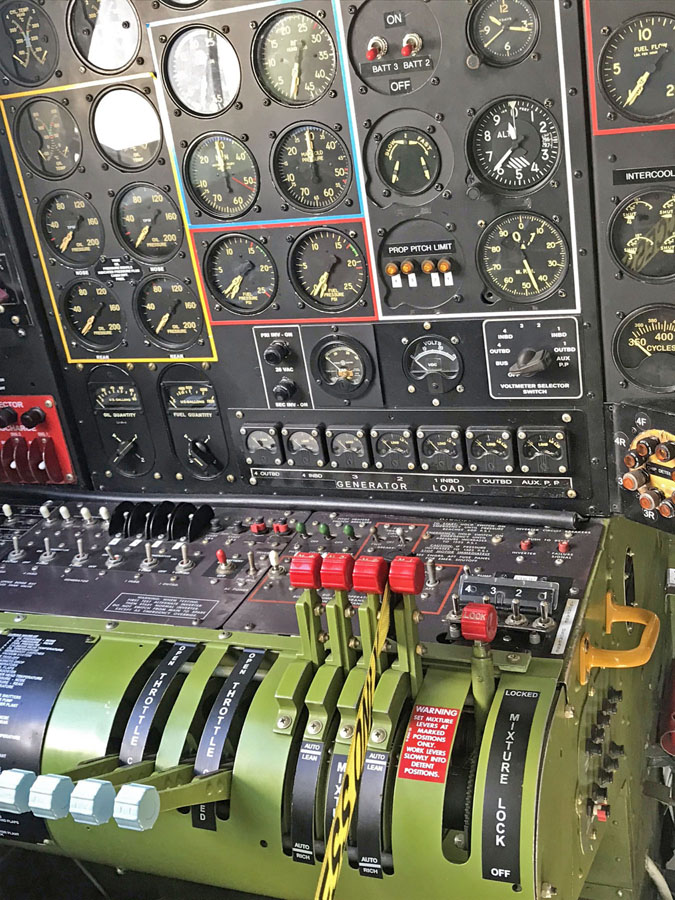
Plenty of gauges at the flight engineer's station
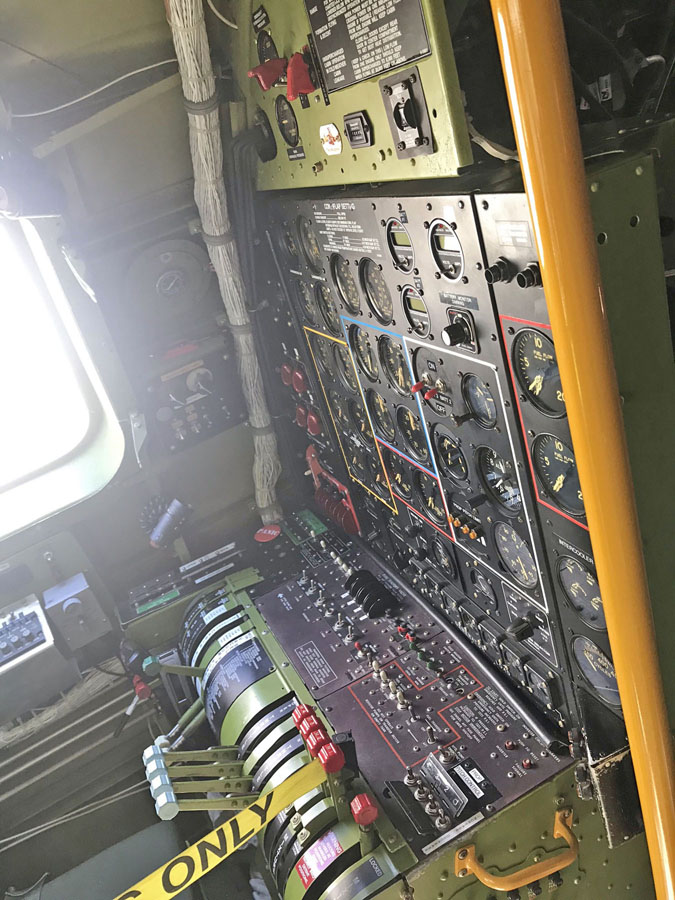
More flight engineer controls
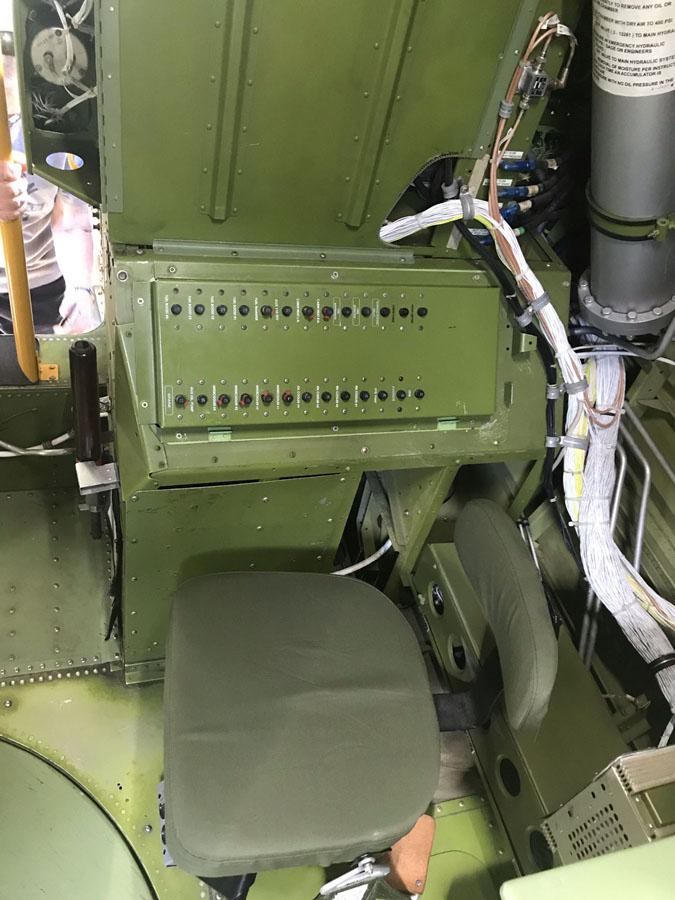
Radio Operator's station
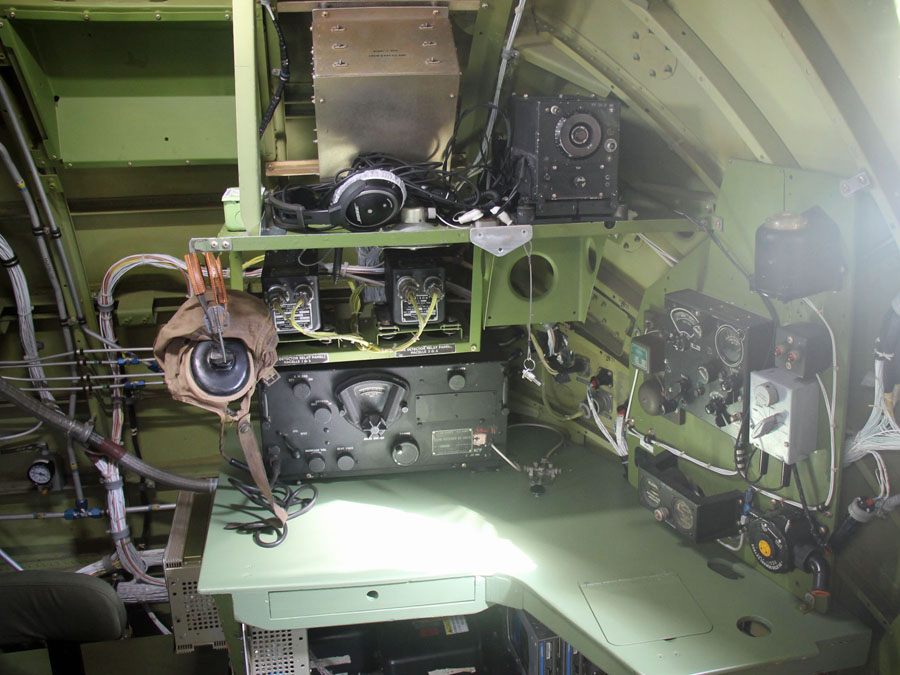
Radio Operator's must have a radio!
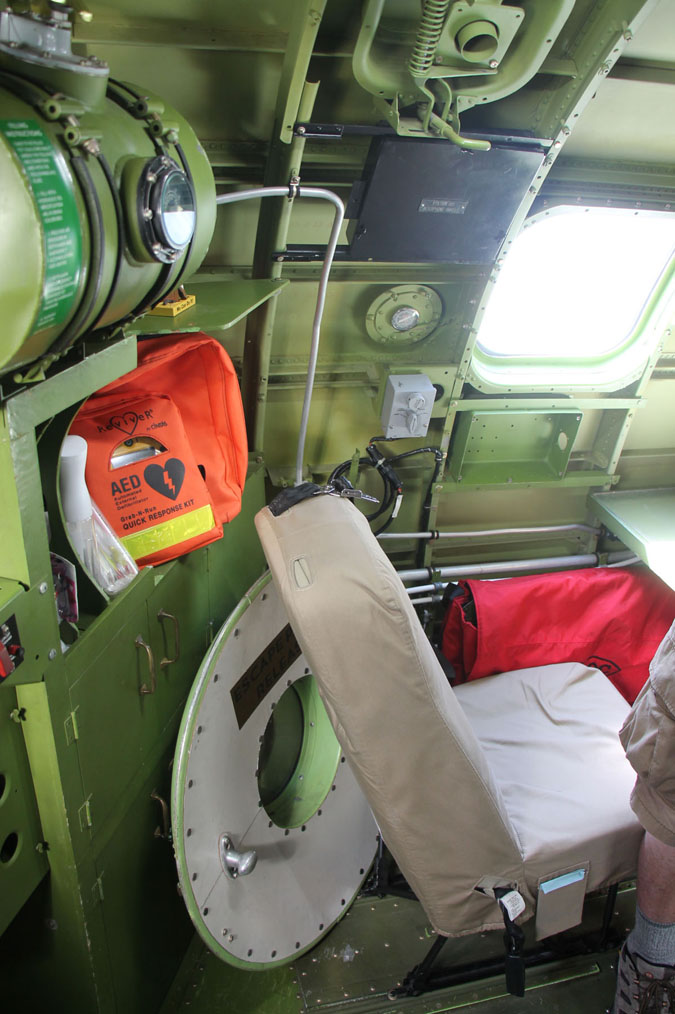
Navigator's seat with bomb bay pressurized hatch door
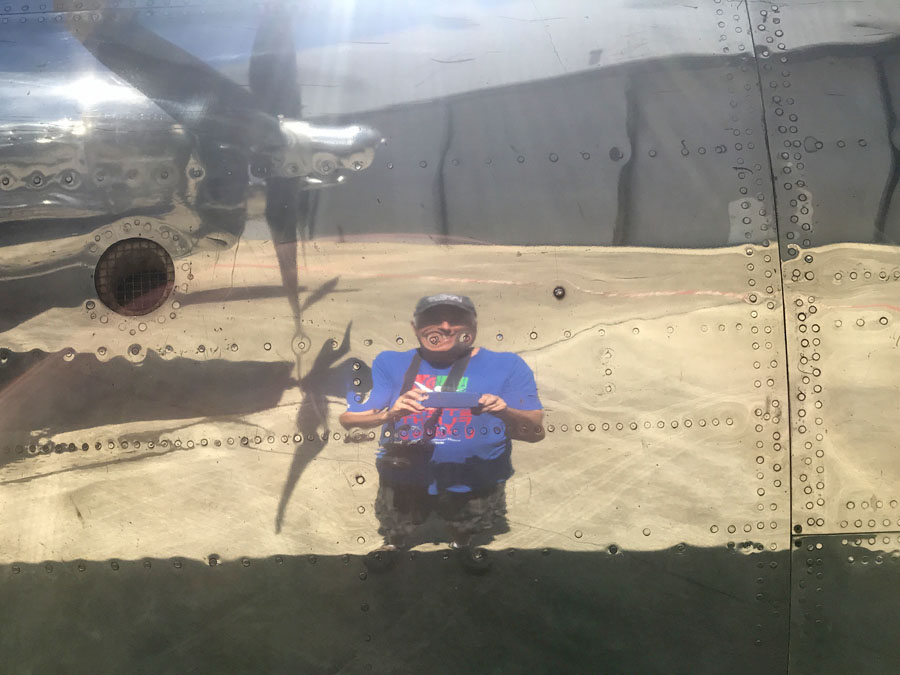
Only goobers take selfies in mirrors but it's deemed acceptable when using a B-29 fuselage
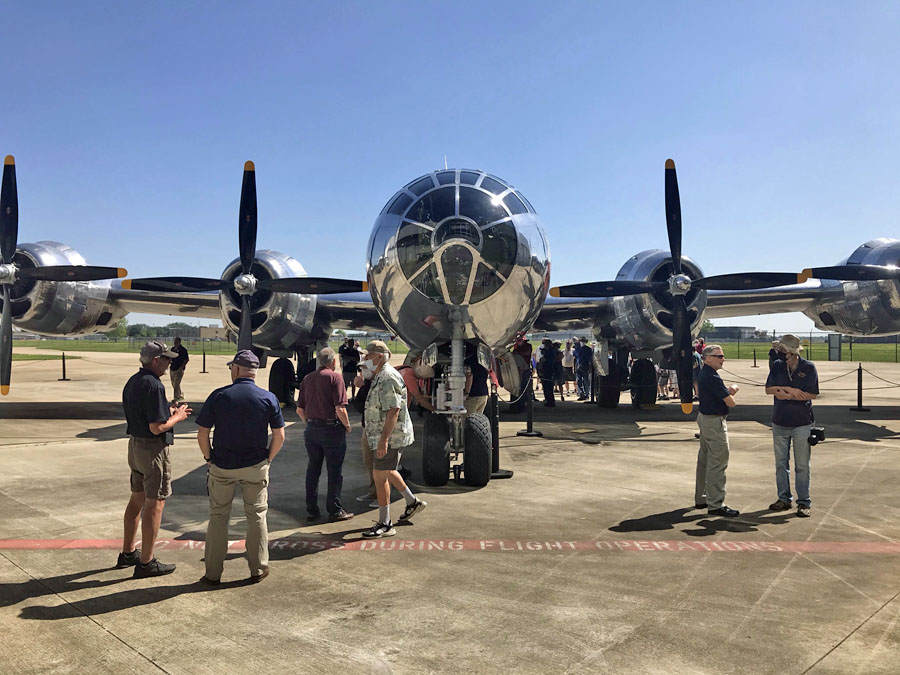
Exit the aircraft and find a large crowd waiting to climb inside after me
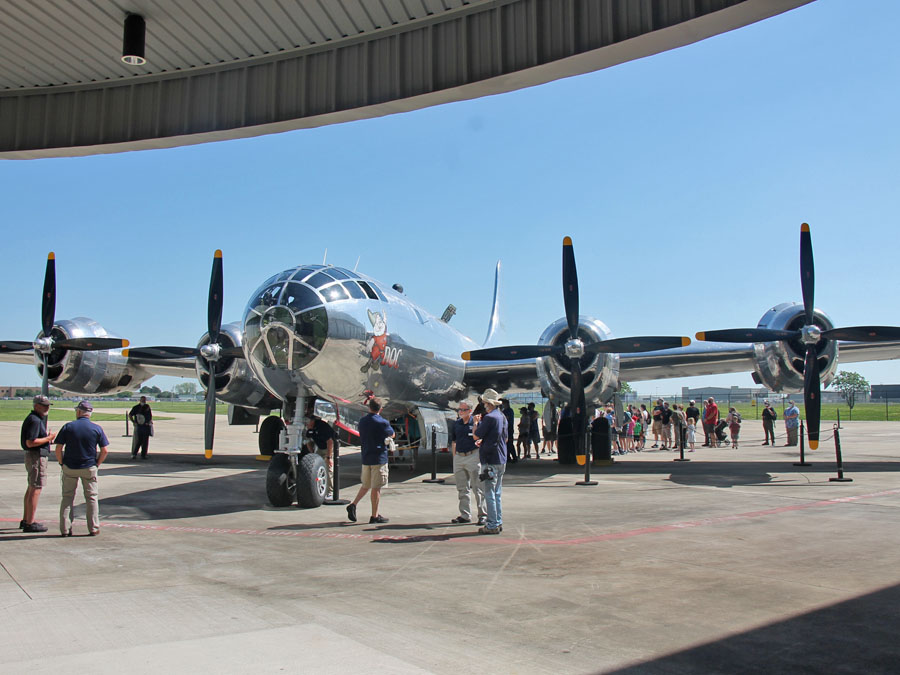
Glad I came when the museum opened to beat the long line to view its insides
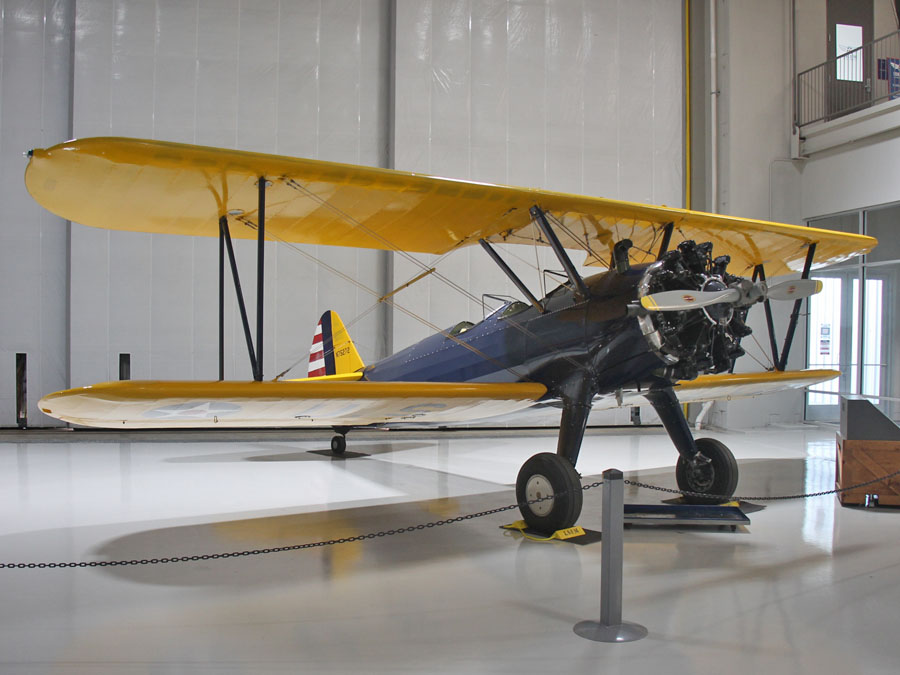
Now visit LSFM's aircraft, first up, a Boeing-Stearman PT-17 Kaydet primary trainer built before 1945
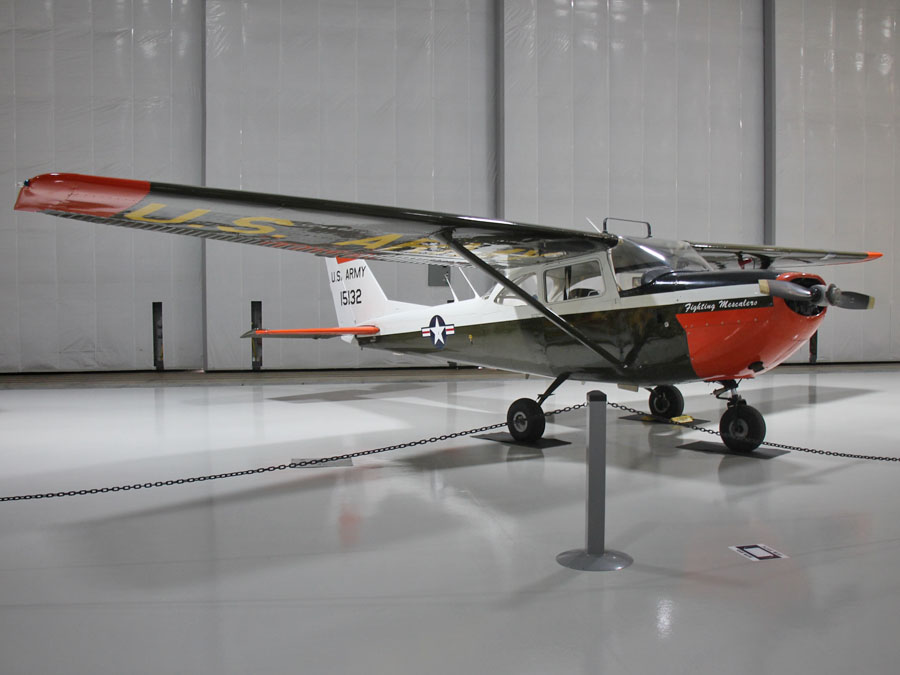
Next is a Cessna T-41 Mescalero, military version of a Cessna 172, built for the US Army in 1967
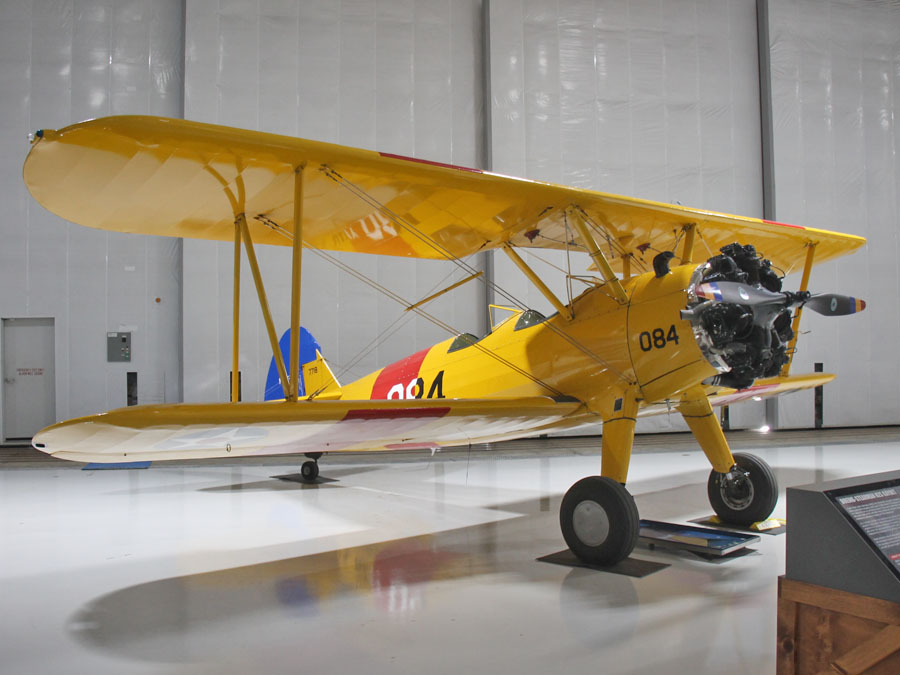
Boeing-Stearman N2S Kaydet, navy version of the Stearman built before 1945
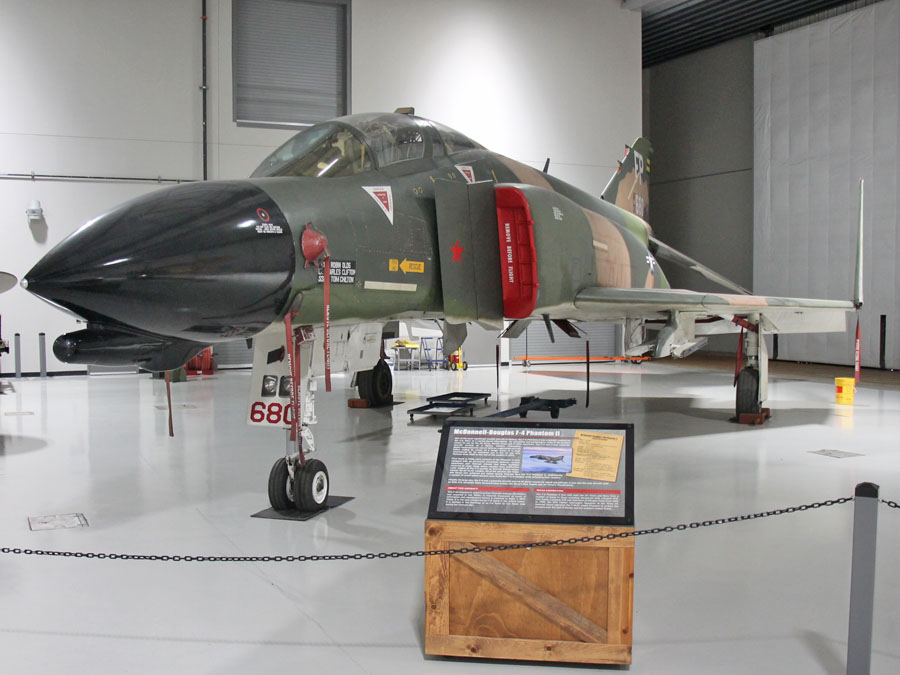
Behold, the only civilian owned McDonnell-Douglas F-4D Phantom II flying in the US
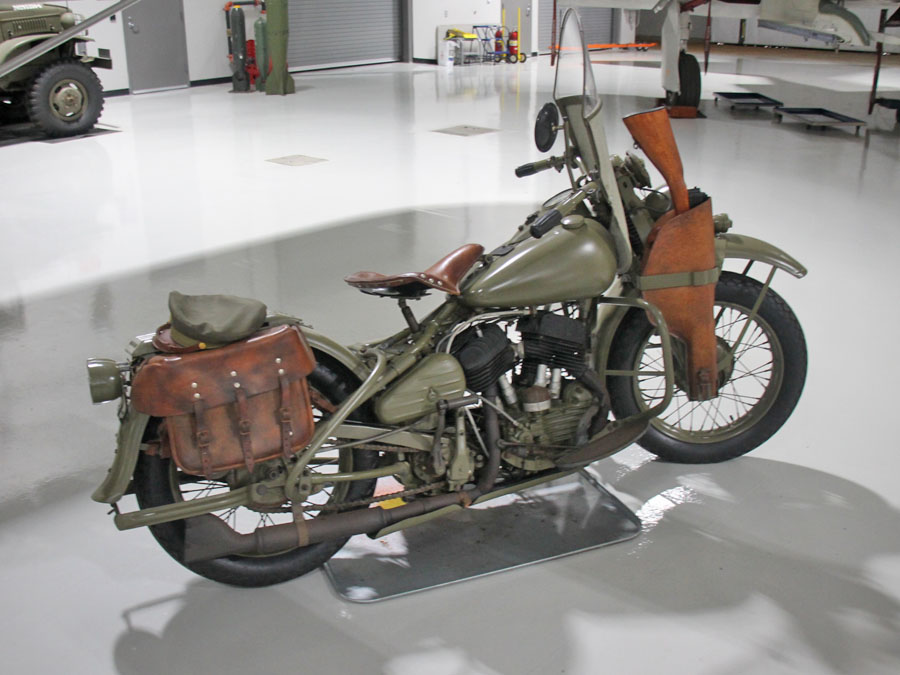
Over 90K Harley-Davidson WLA Military Motorcycles were built during WWII, a third went to Russia
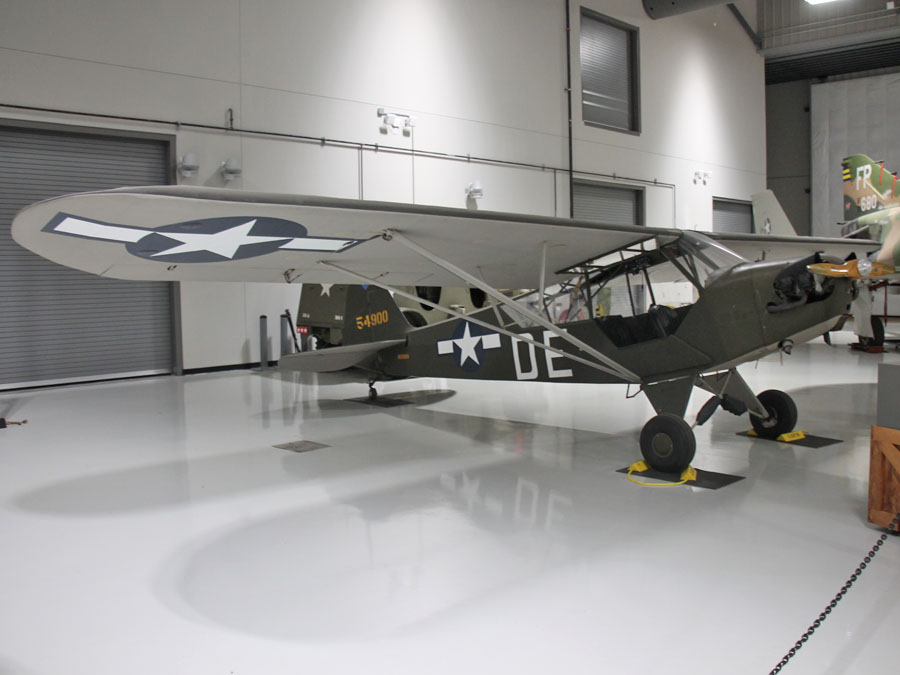
Piper L-4 Grasshopper built during WWII, the civilian version is the Piper J-3 Cub

The last of five built Anderson Greenwood AG-14 two seat pusher aircraft, built in 1953
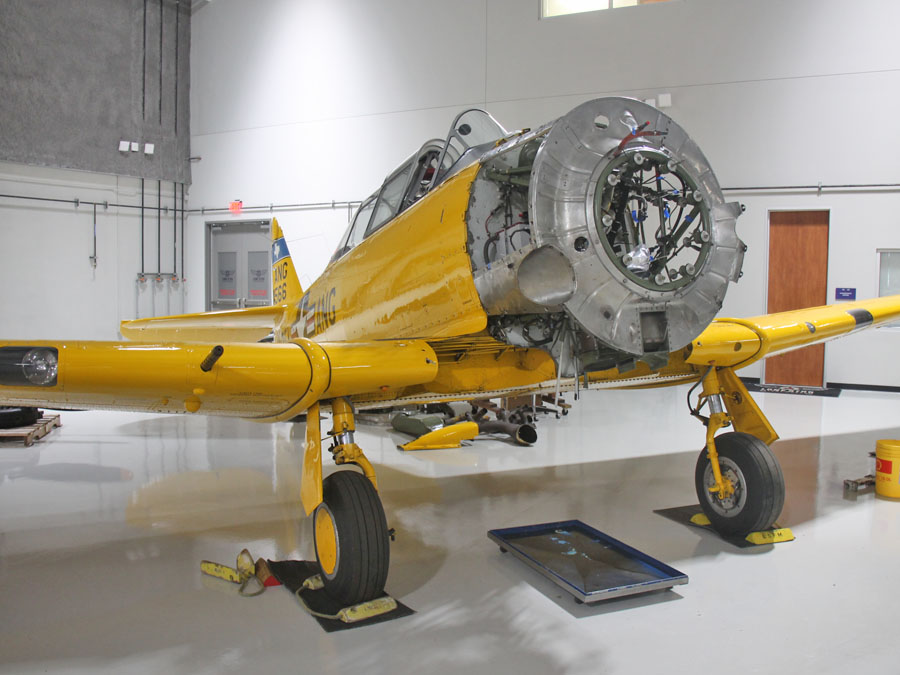
Like the Houston Texans NFL team, this North American SNJ-5 Texan has no go

This SNJ-5 Texan is busy having an engine overhaul & painted in the 1950s color scheme . . .
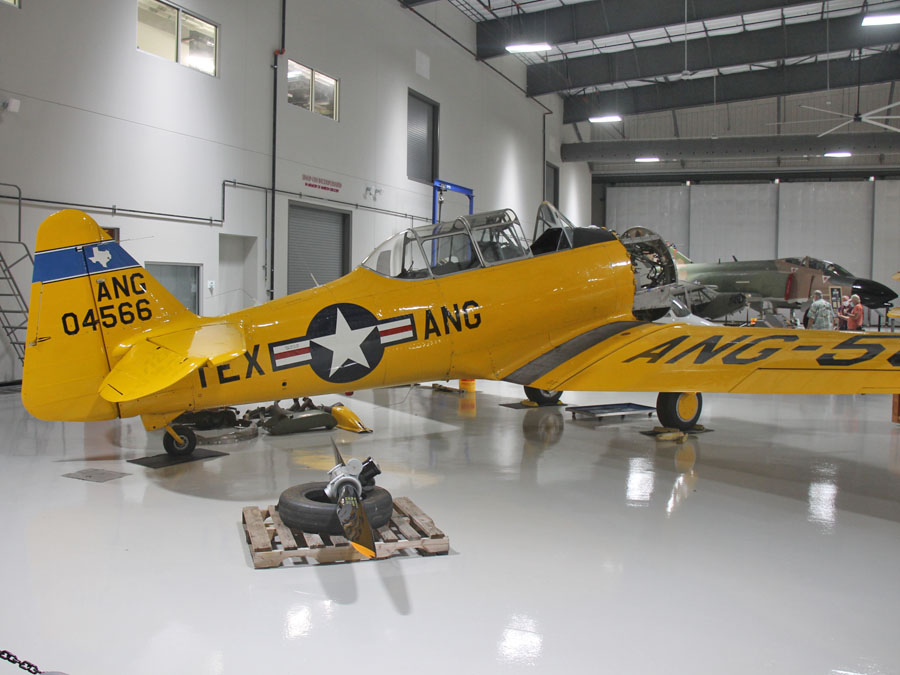
Of the 147th Fighter Group of the Texas Air National Guard based here at Ellington Field
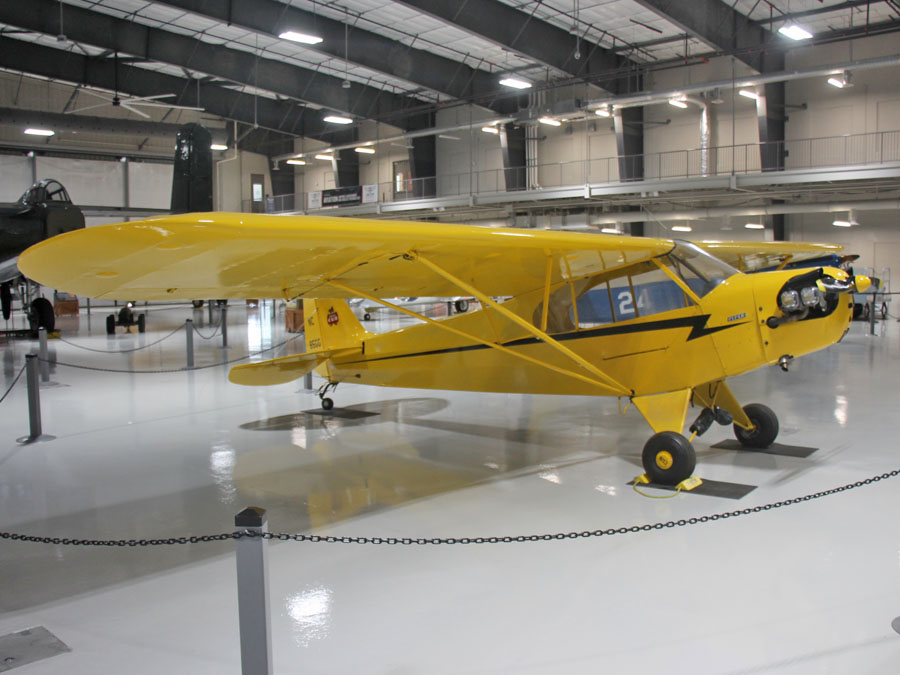
Piper J-3 Cub built in 1940 and owned by the LSFM President and COO
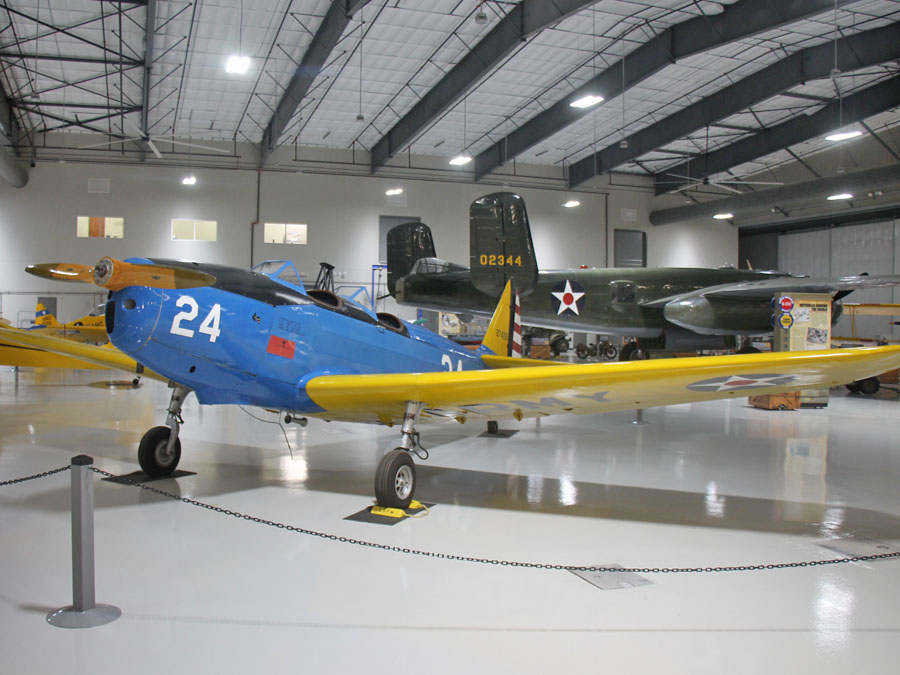
Fairchild PT-19 Cornell monoplane primary trainer built in 1941
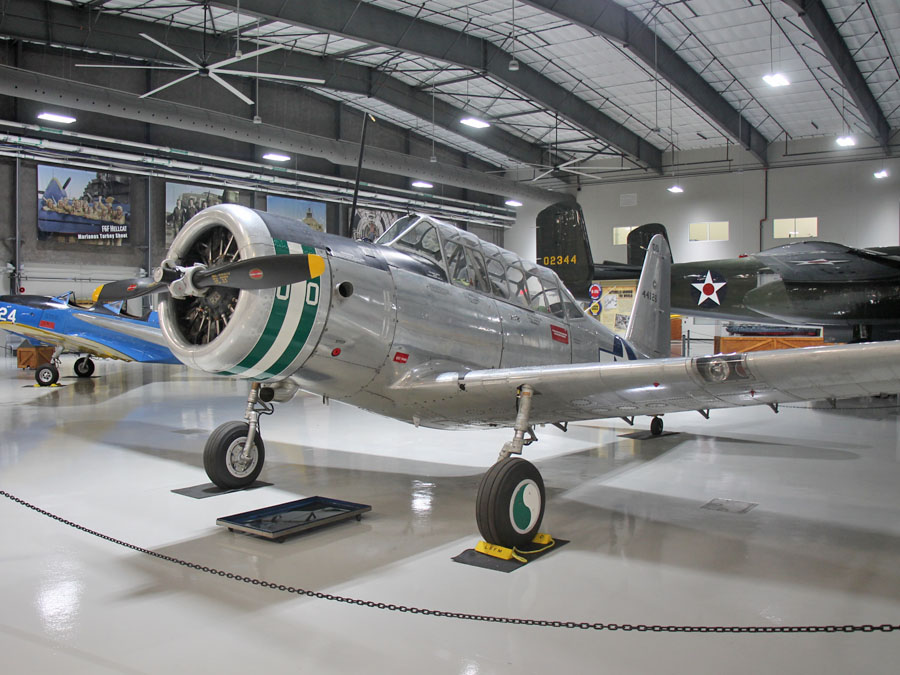
Vultee BT-13 Valiant built in 1944 as SNV-2 to train naval aviators for the US Navy
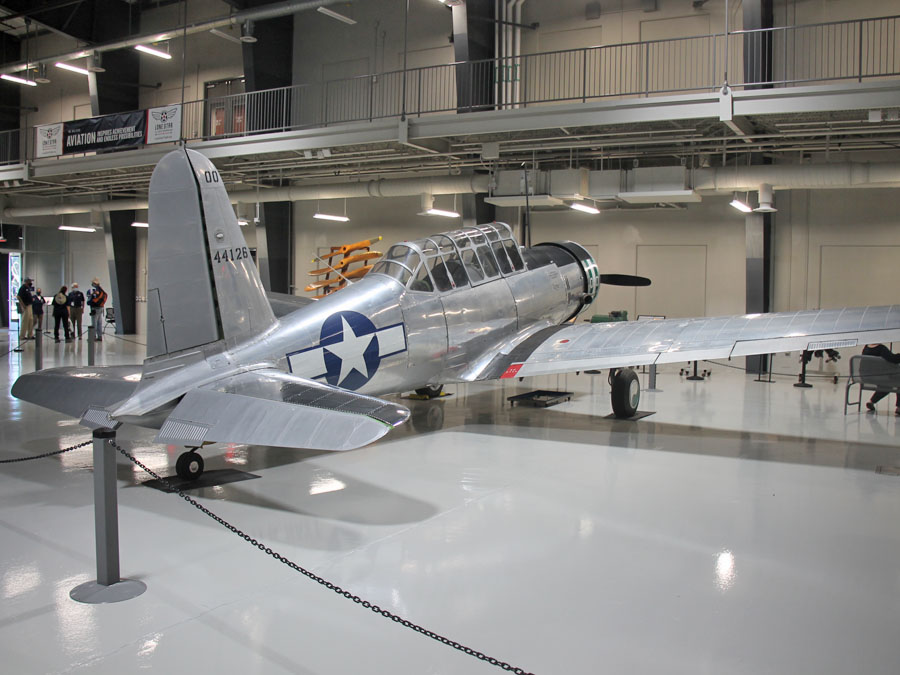
A new arrival as there is no sign identifying the aircraft, so search the internet for the tail number
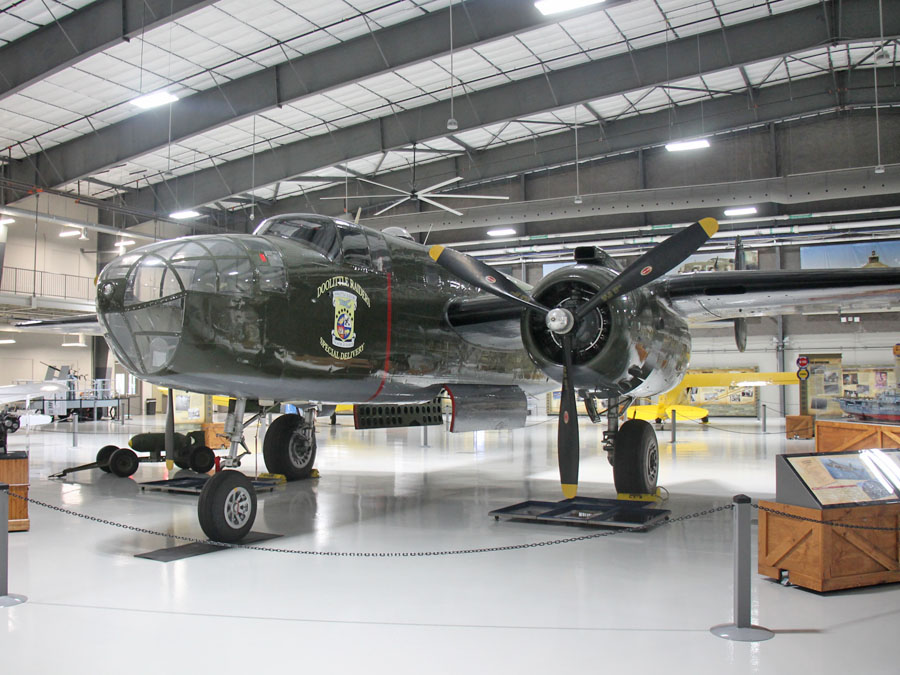
The star of this hangar is the official North American B-25 of the Doolittle Raider Association
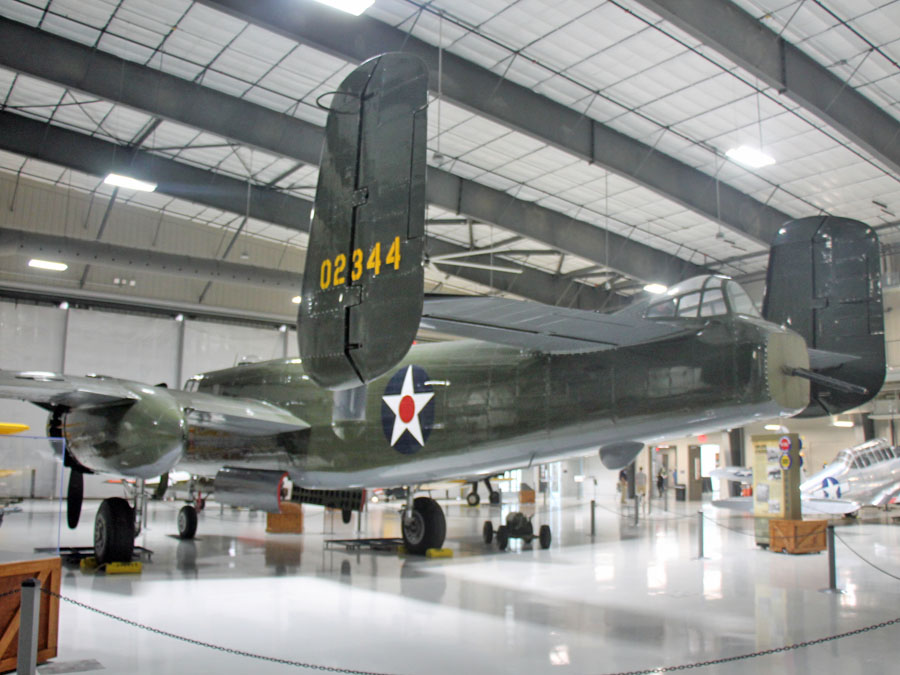
The only flying B-25 painted in the colors of the Doolittle Raiders

This B-25J remained stateside during World War II, a USAF trainer until the late 1950s

Tail number 02344 takes off from the aircraft carrier Hornet on April 18, 1942 on a raid against Japan
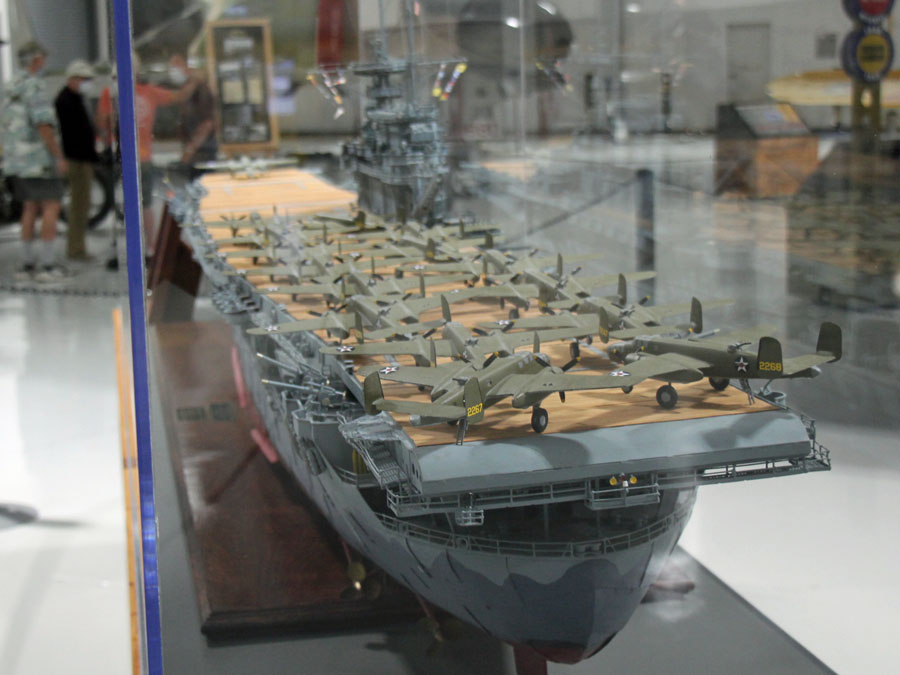
Sixteen B-25 Mitchells launched from the Hornet and 77 of 80 crew members survived the mission
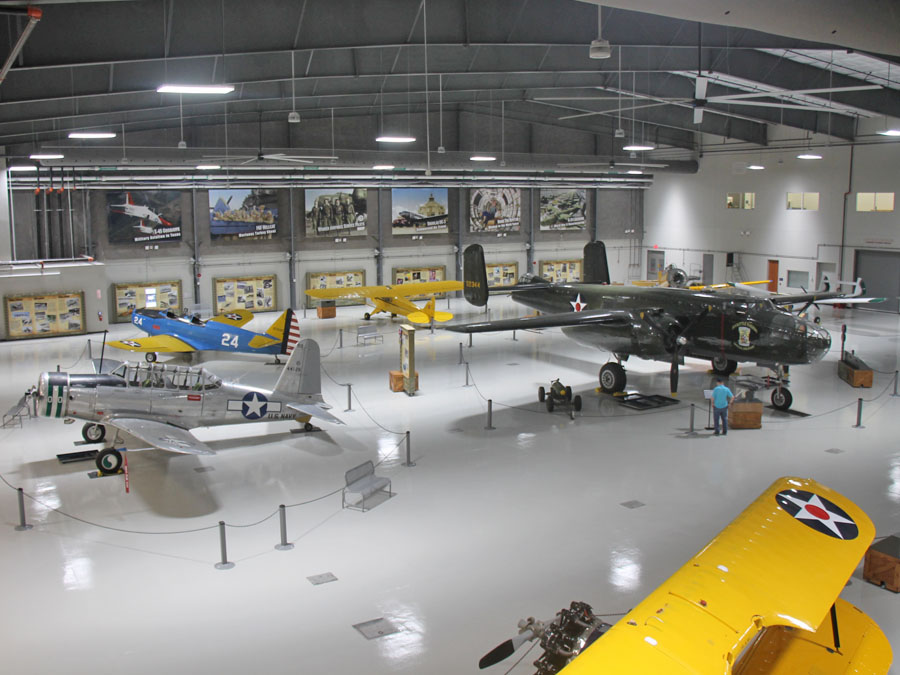
Vultee BT-13 Valiant, Fairchild PT-19 Cornell, Piper J-3 Cub & North American B-25J Mitchell
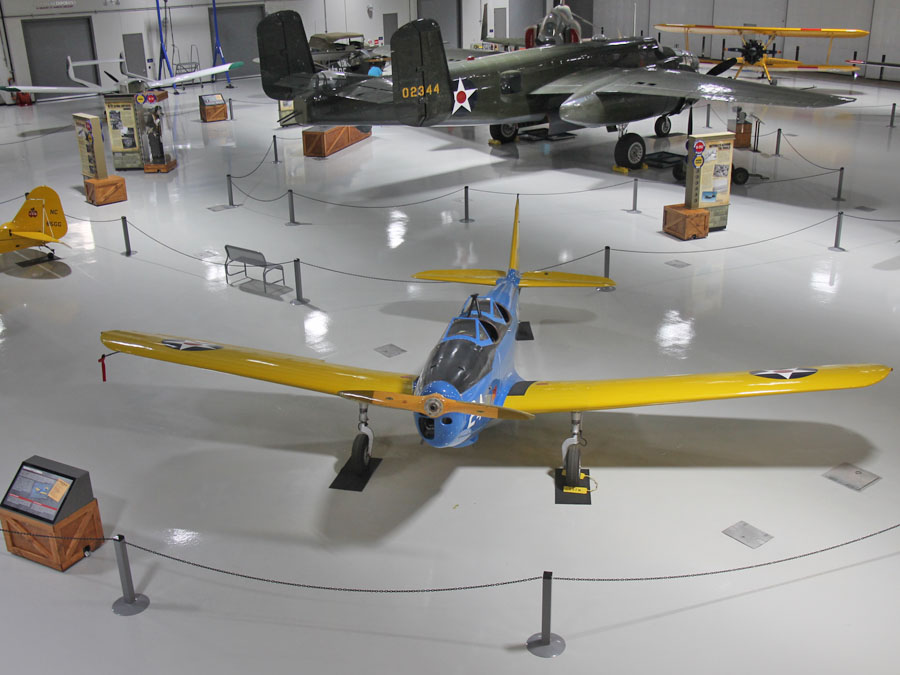
Far corner second floor balcony view of the Fairchild PT-19 Cornell
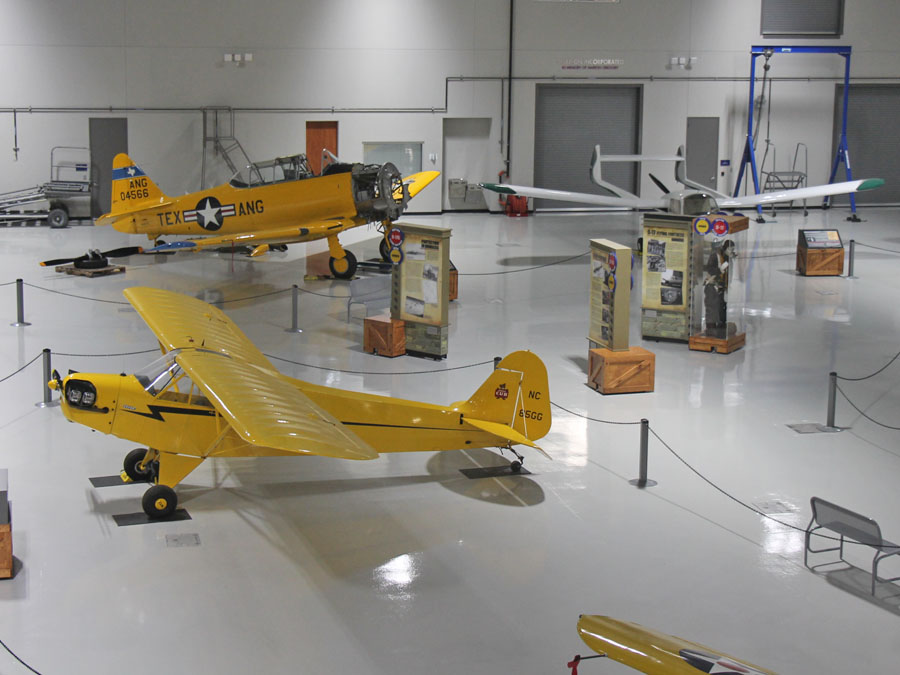
Piper J-3 Cub, North American SNJ-5 Texan and Anderson Greenwood AG-14

Sweet North American B-25J Mitchell painted as a Doolittle Raider
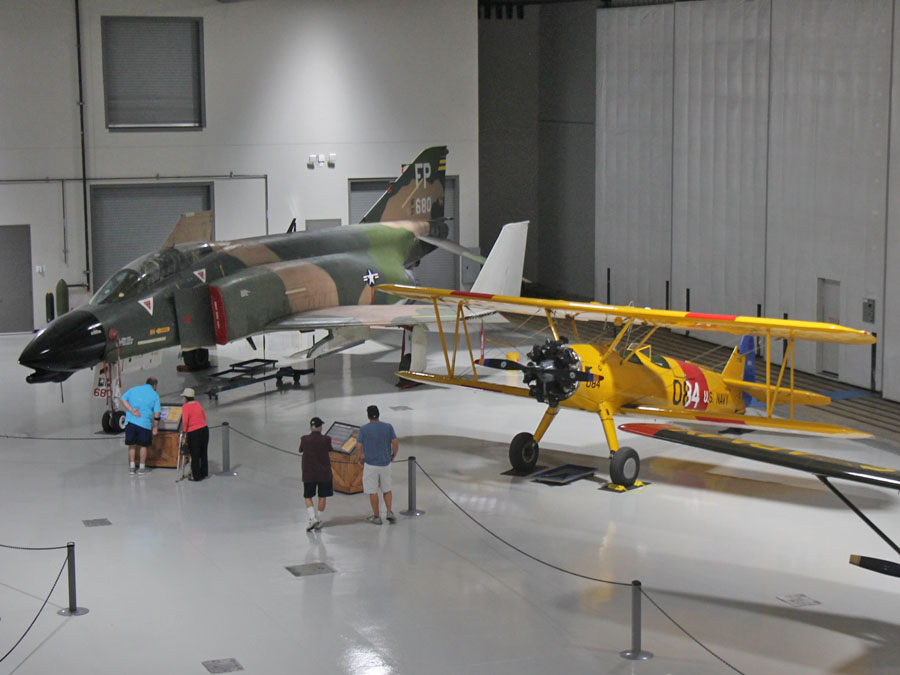
McDonnell-Douglas F-4D Phantom II and a Boeing-Stearman N2S Kaydet
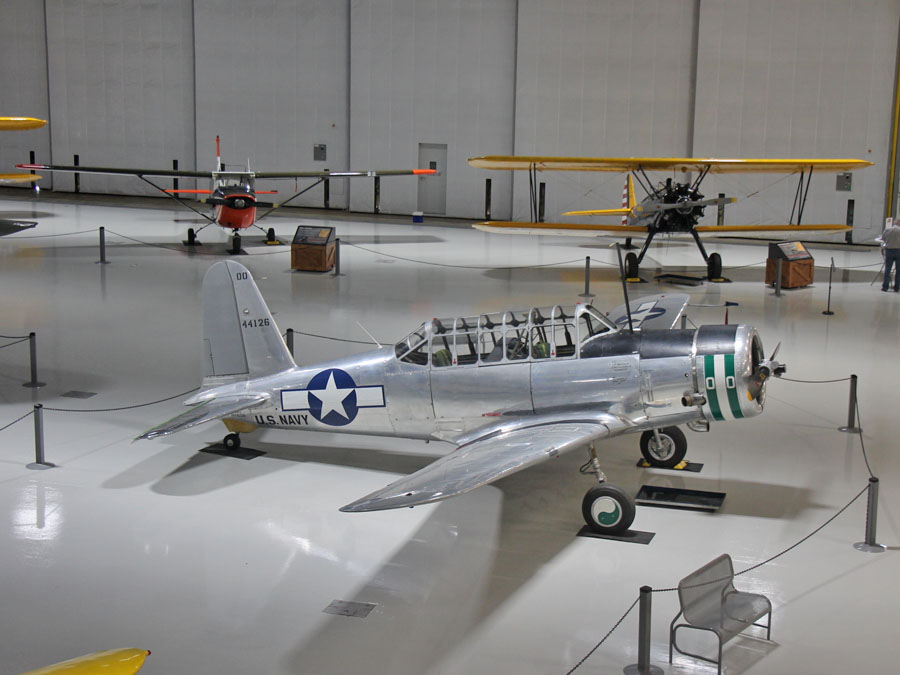
Cessna T-41 Mescalero, Boeing-Stearman PT-17 and Vultee SNV-2 Valiant
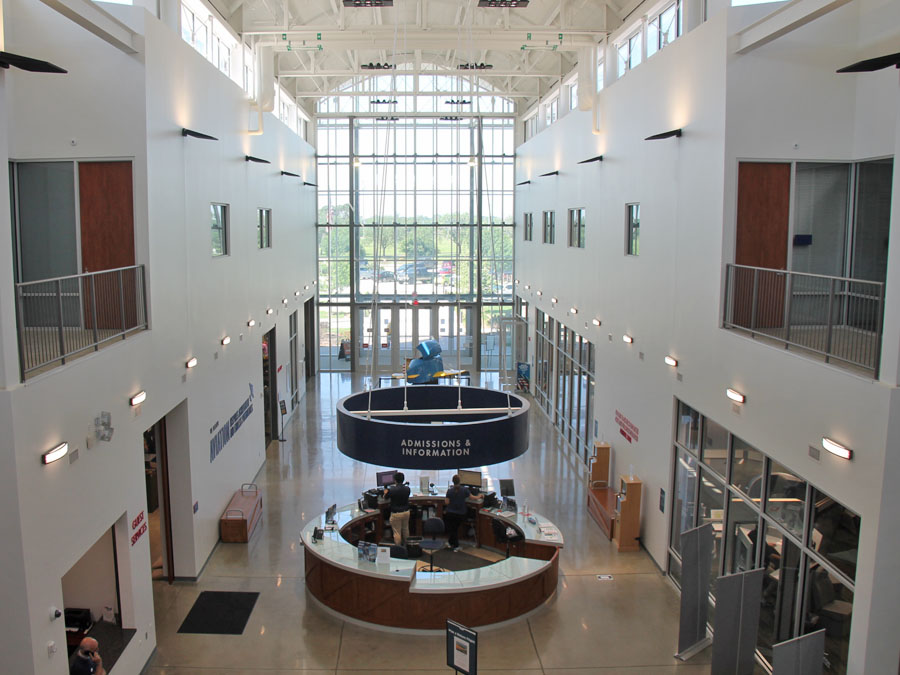
Look down on the museum's grand entry while moving over to the next hangar
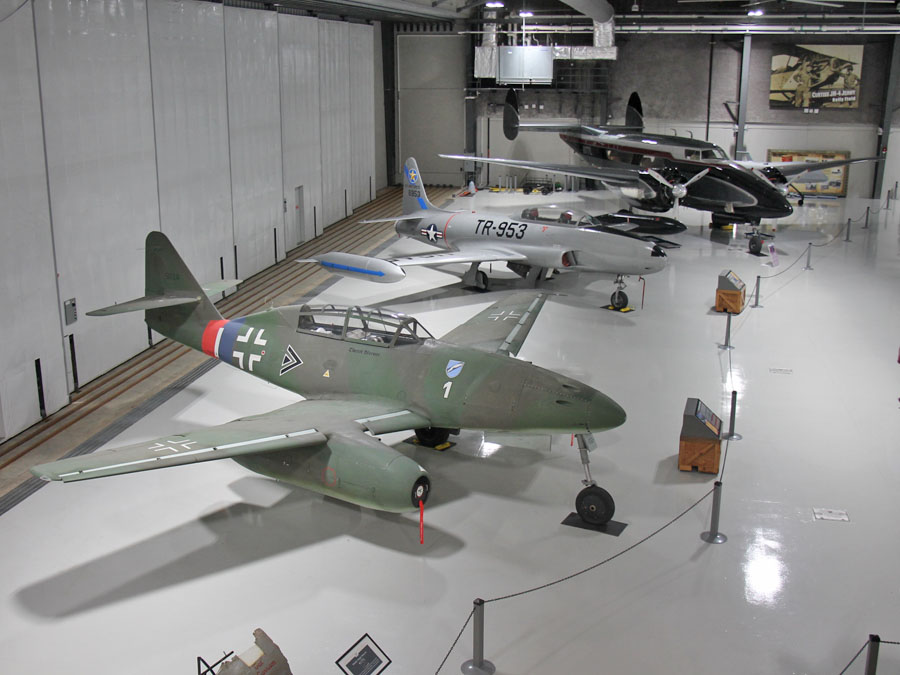
Next hangar, Messerschmitt Me-262 Schwalbe, Lockheed T-33A Shooting Star & Howard 250 Tri-Gear
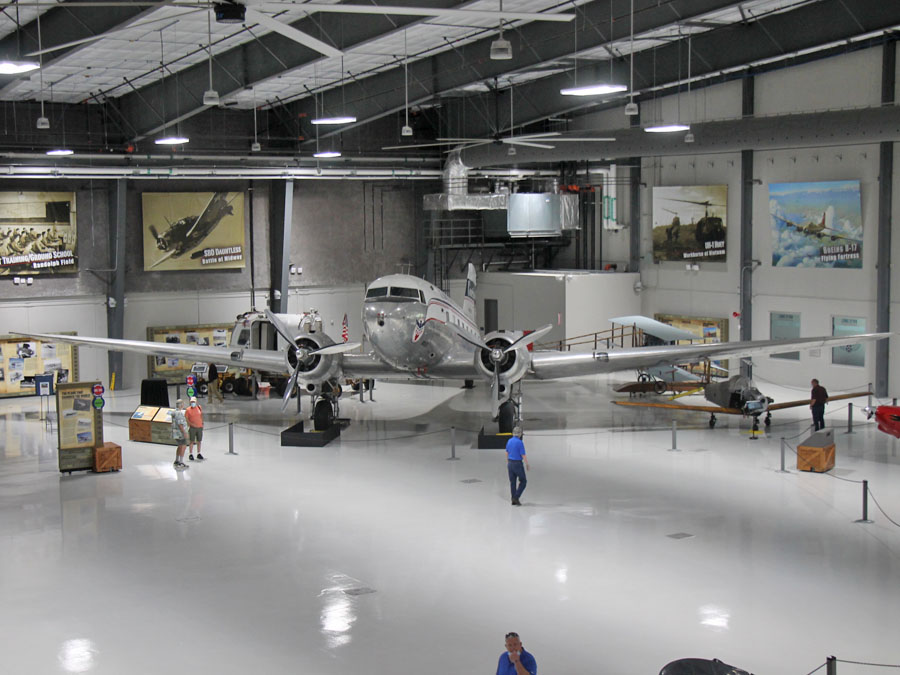
Douglas DC-3A with Mooney M-18 Mite and a 1911 Curtiss A-1 Triad under the right wing
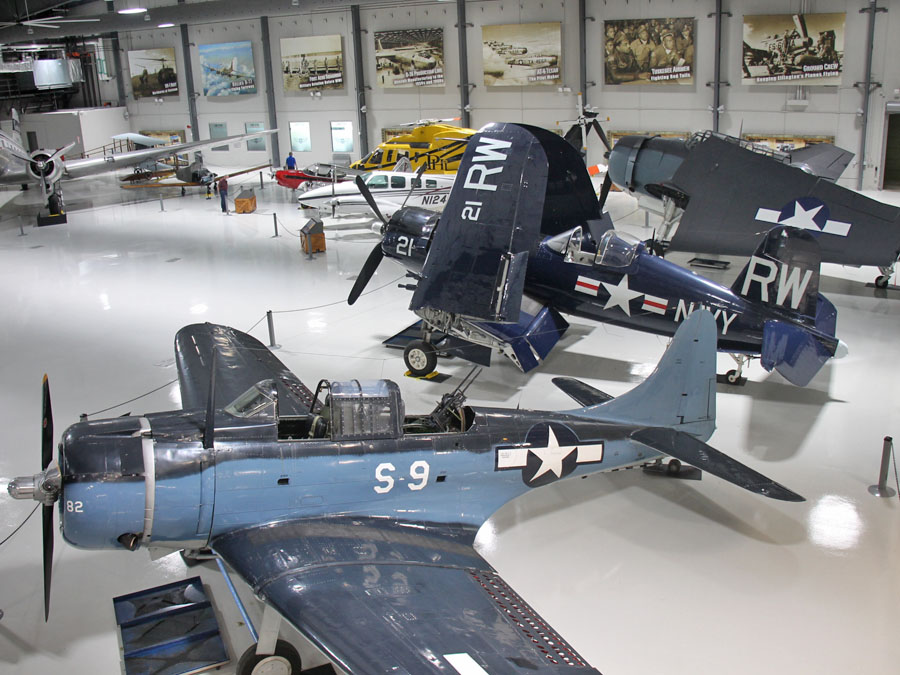
Dauntless, Corsair, Avenger, Beechcraft Baron B-58, Globe GC-1B Swift & Sikorsky S-76A
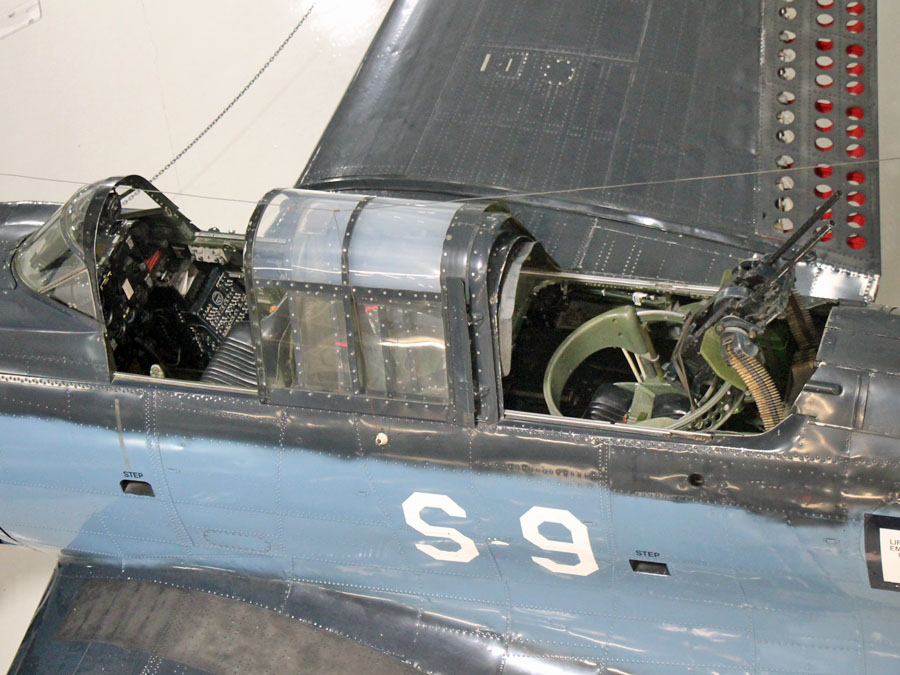
Look down into the cockpit & rear gunner position of the Douglas SBD Dauntless
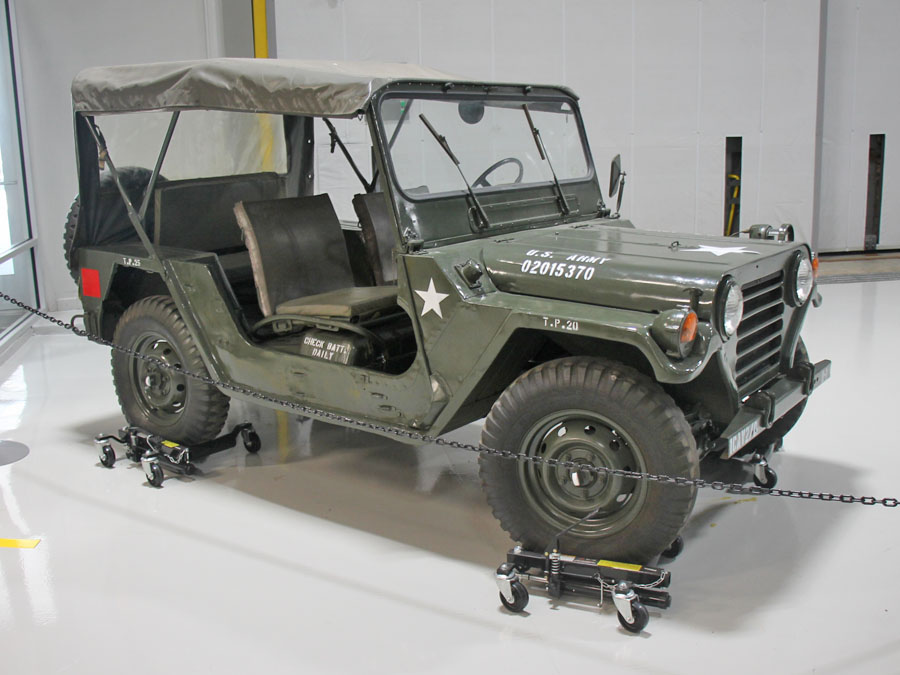
Ford M151A2 MUTT (Military Unit Tactical Truck) replaced the M38 Jeep in 1959
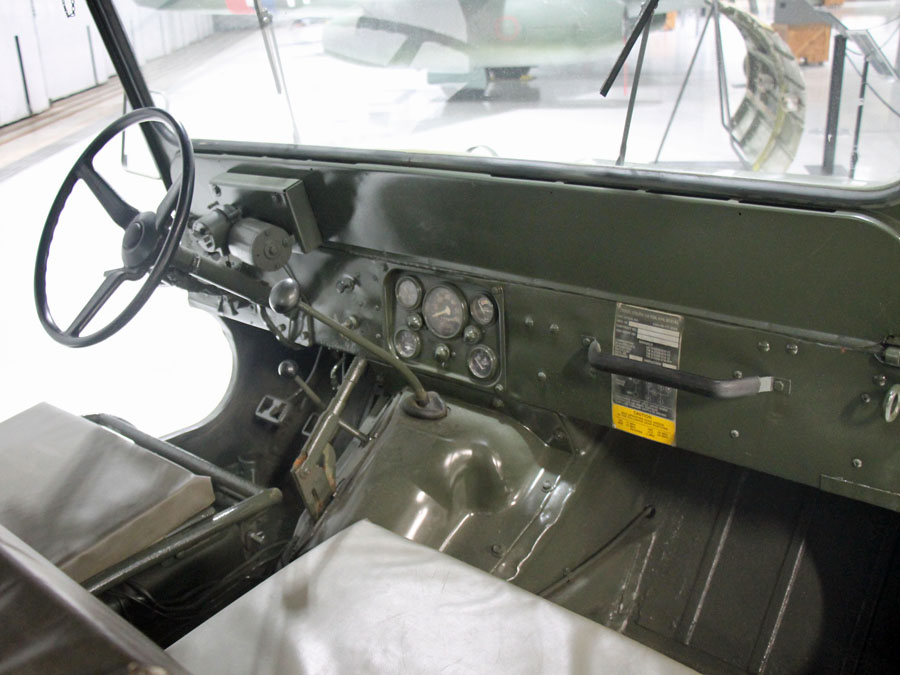
Also built by Kaiser & AM General, and were replaced by Hummers in the 1980s
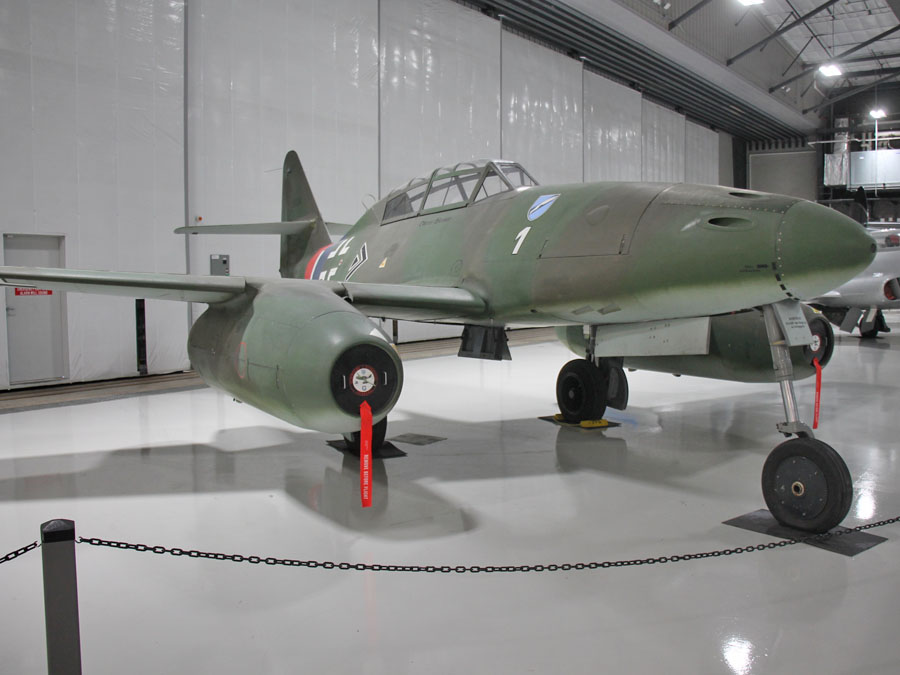
First aircraft encountered is a reproduction Messerschmitt Me-262 Schwalbe
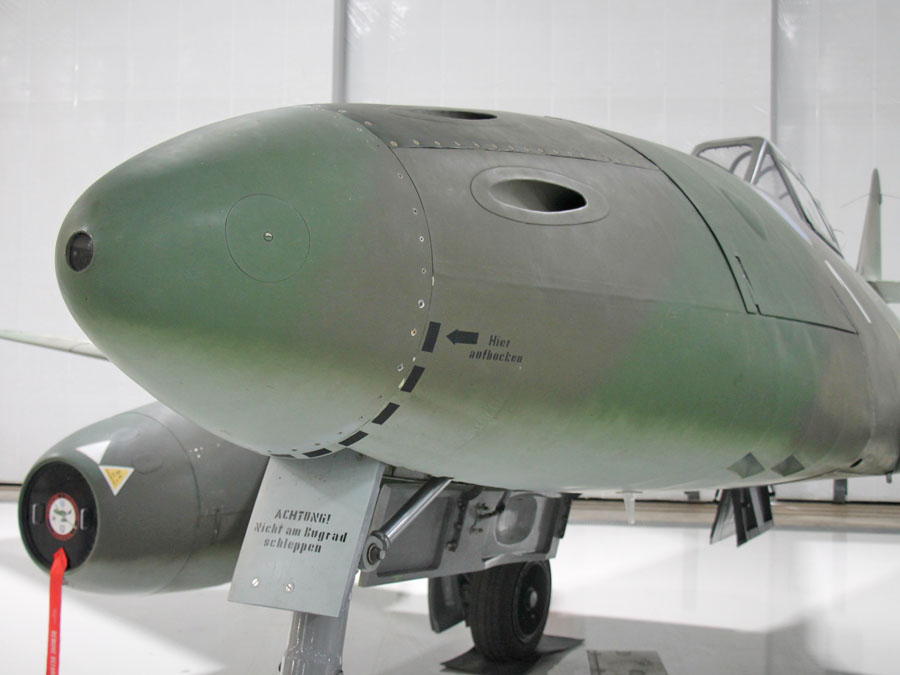
Auf Deutsch: "Jack up here" and "Warning, do not drag on the nose wheel"
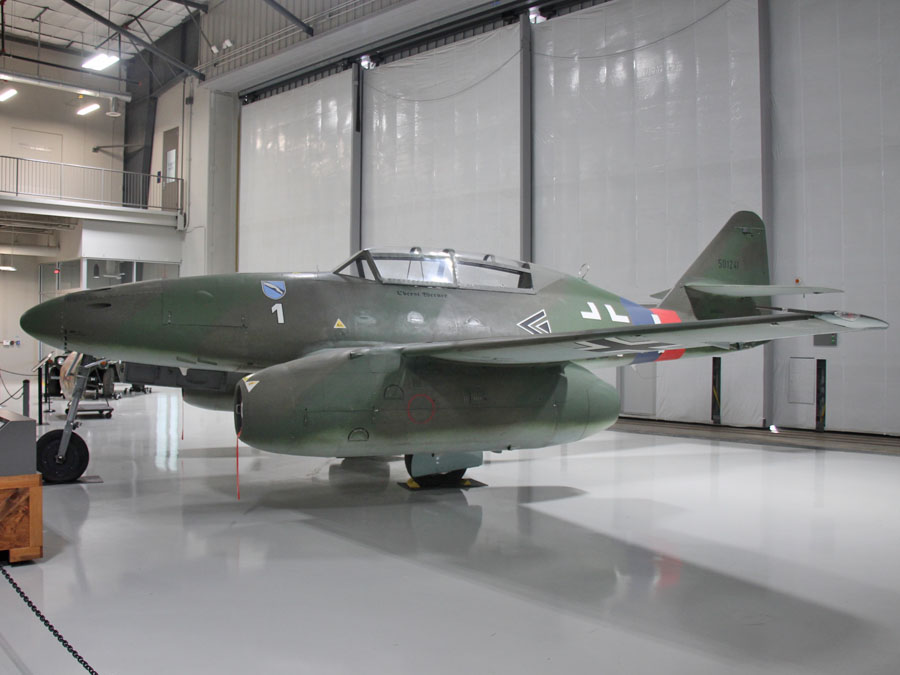
She uses two modern GE CJ-610 engines & is on loan to the LSFM by the Collings Foundation
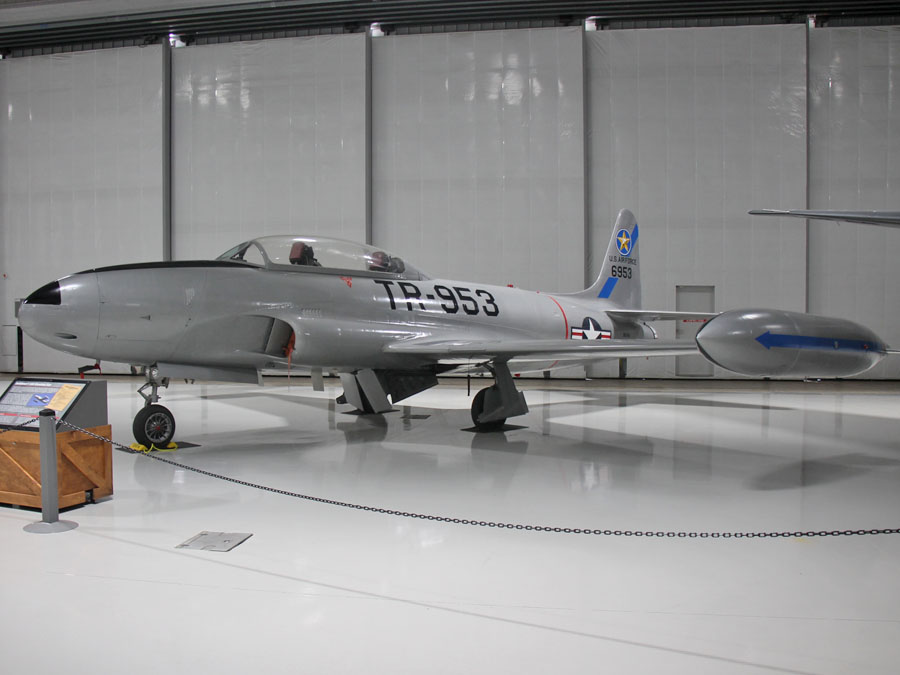
Lockheed T-33A Shooting Star built in 1951 as America's first jet trainer
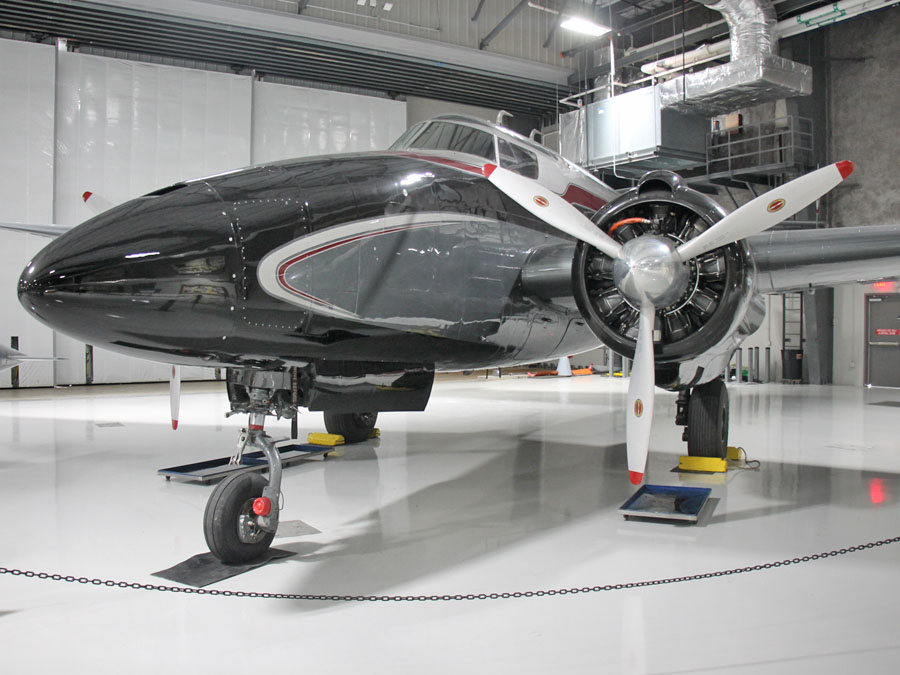
Howard 250 Tri-Gear is a Lockheed L-18 Loadstar built as an executive aircraft in the 1950's
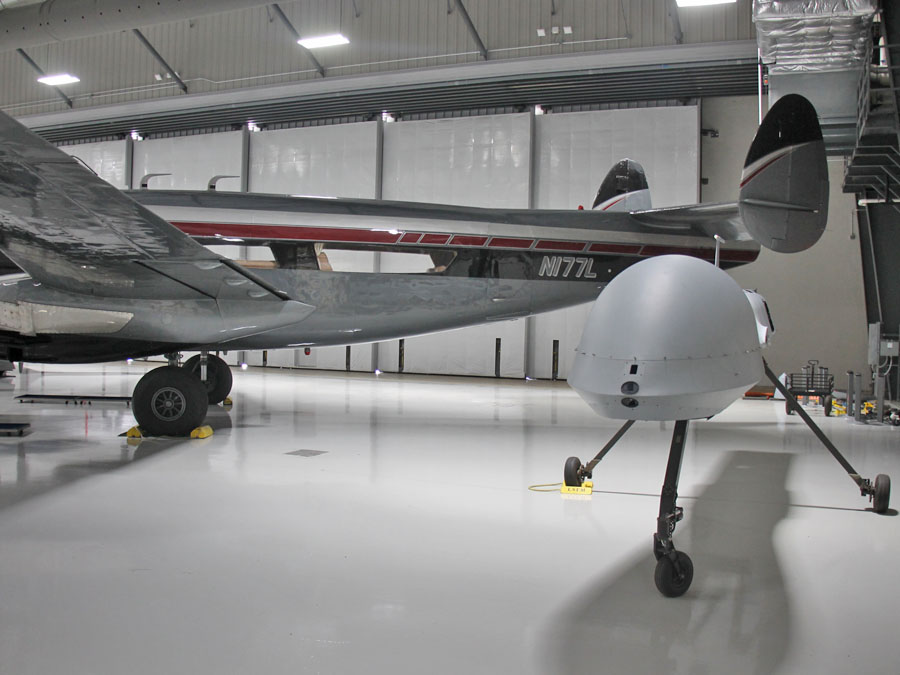
View the executive seating of the Howard 250 beyond the disassembled MQ-1 Predator UAV
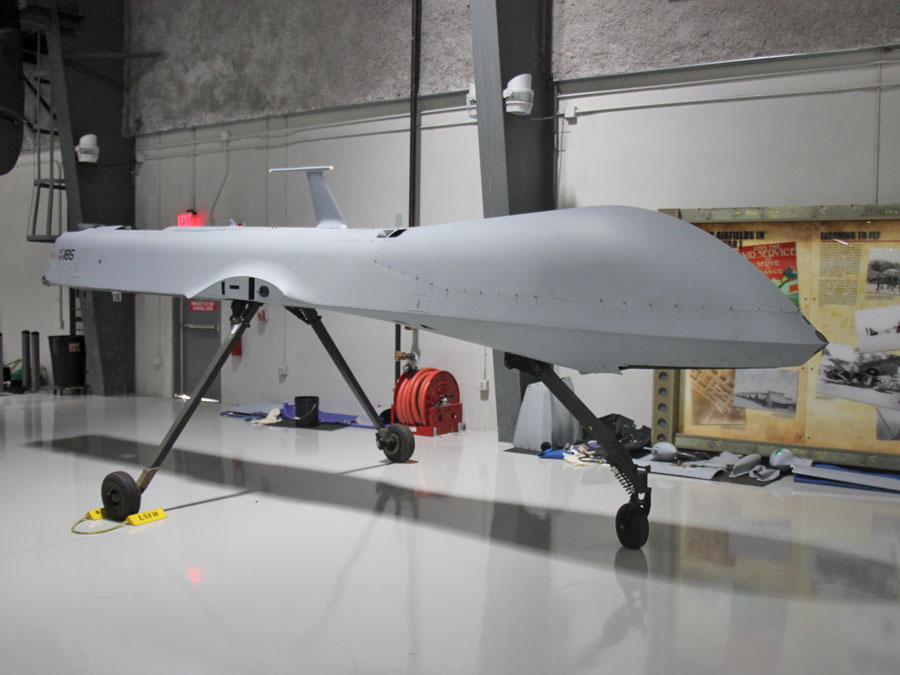
MQ-1 Predator UAV has wing and tail lying against the wall

NASA Centaur with R2 torso developed in 2010 for unmanned exploration
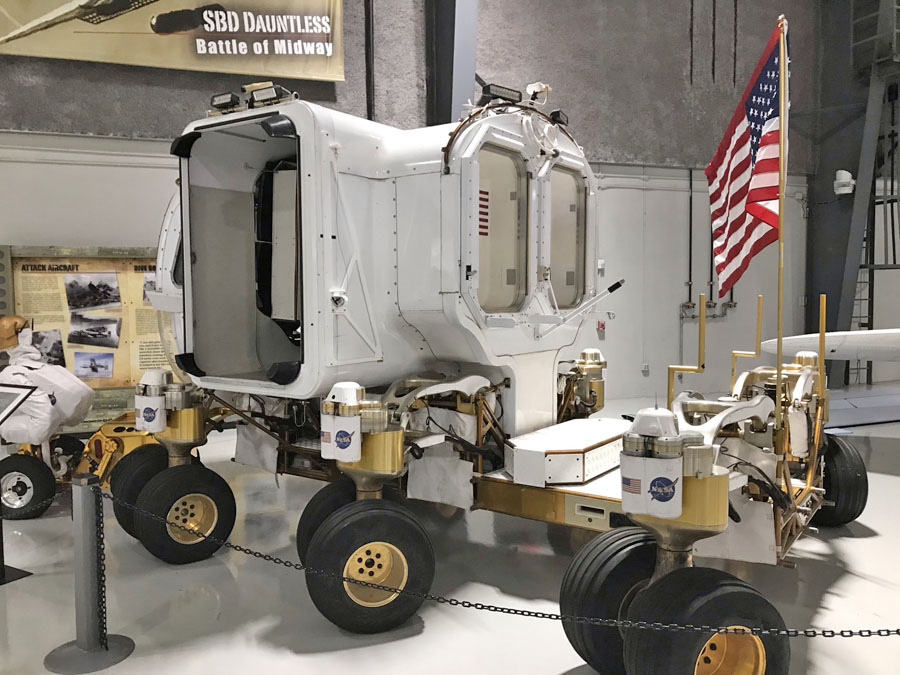
Space Exploration Vehicle (SEV) has a pressurized cabin designed for 2 astronauts
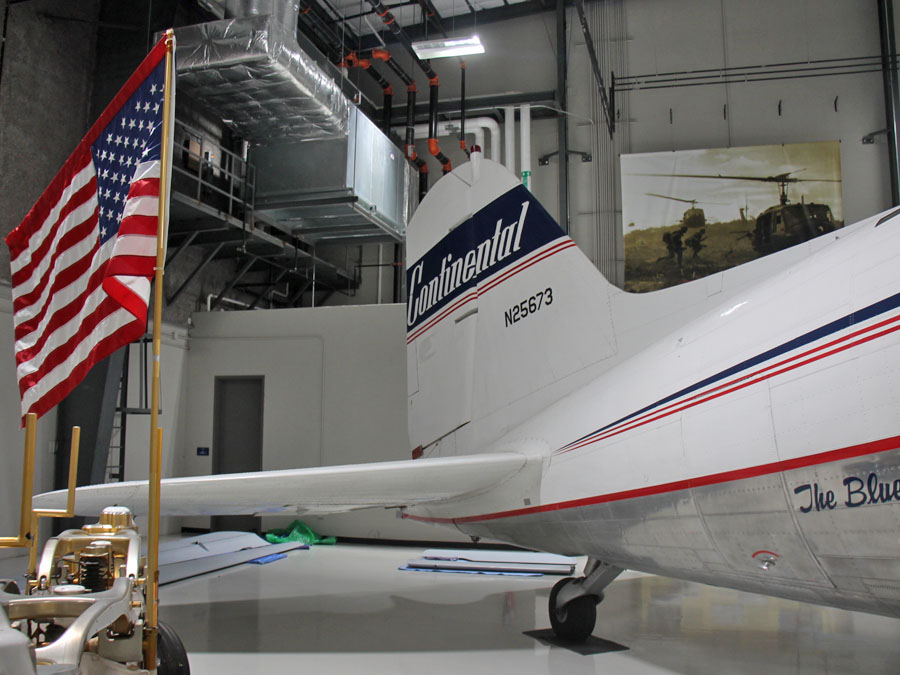
Just past the NASA equipment is a Continental DC-3, donated to LSFM in 2004
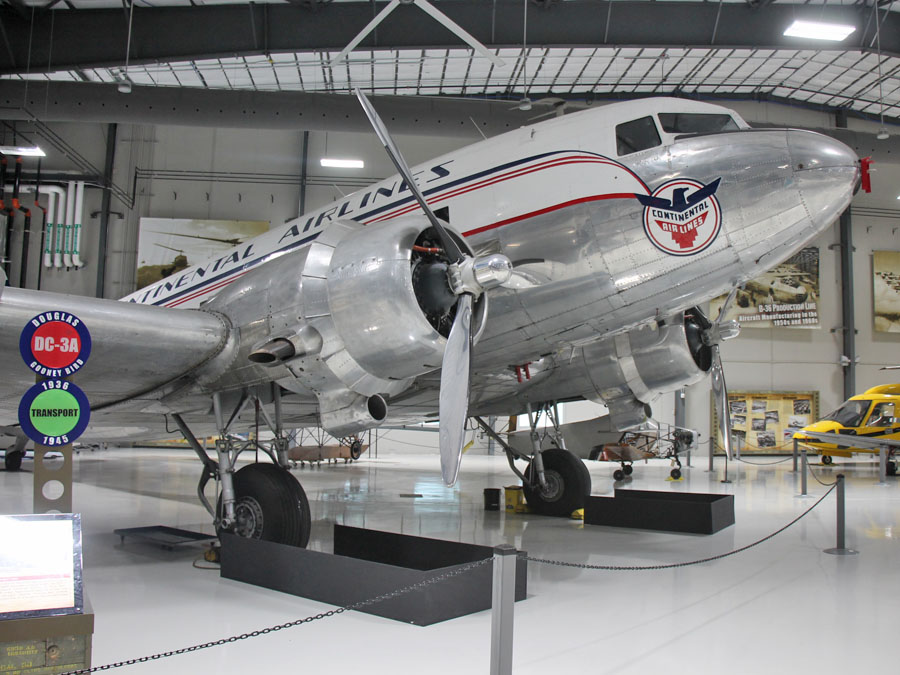
Douglas DC-3A built in 1940 for American Airlines
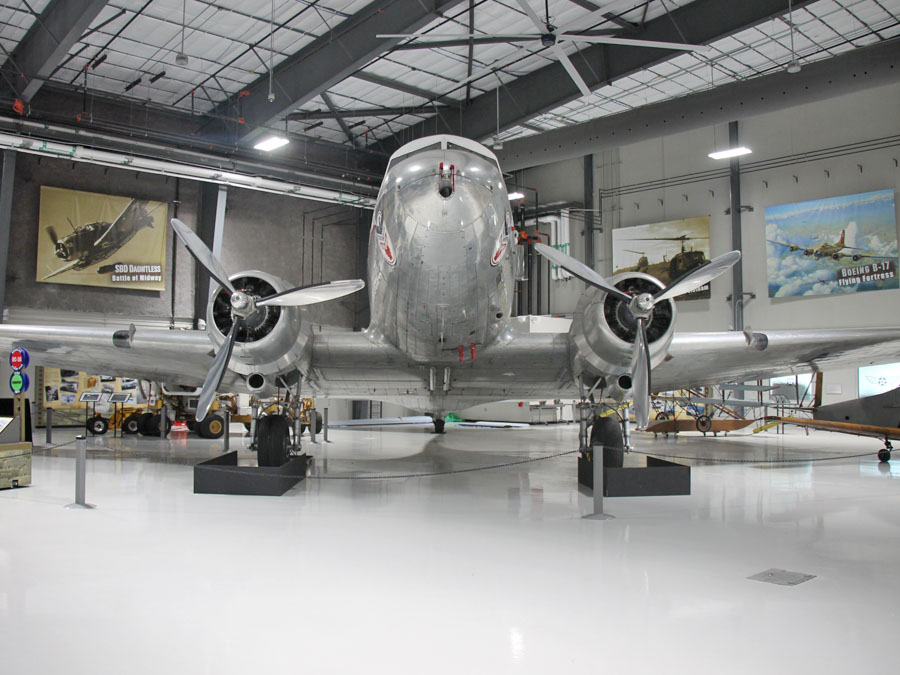
It was purchased by Trans-Texas Airways (predecessor to Continental Airlines) after WWII
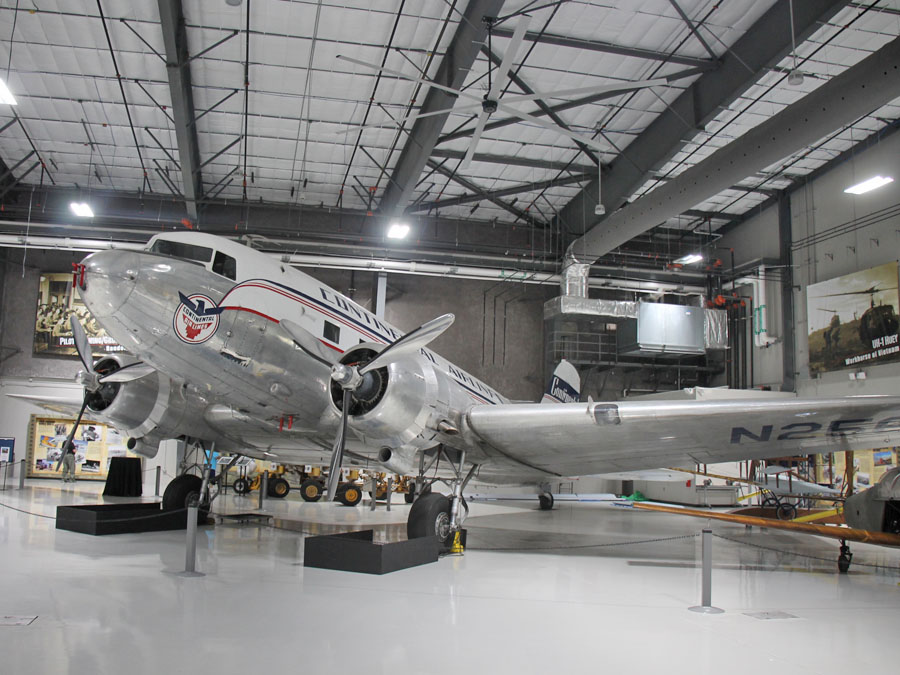
Continental Airlines bought it from another airline in 1980 and flew it as a public relations aircraft
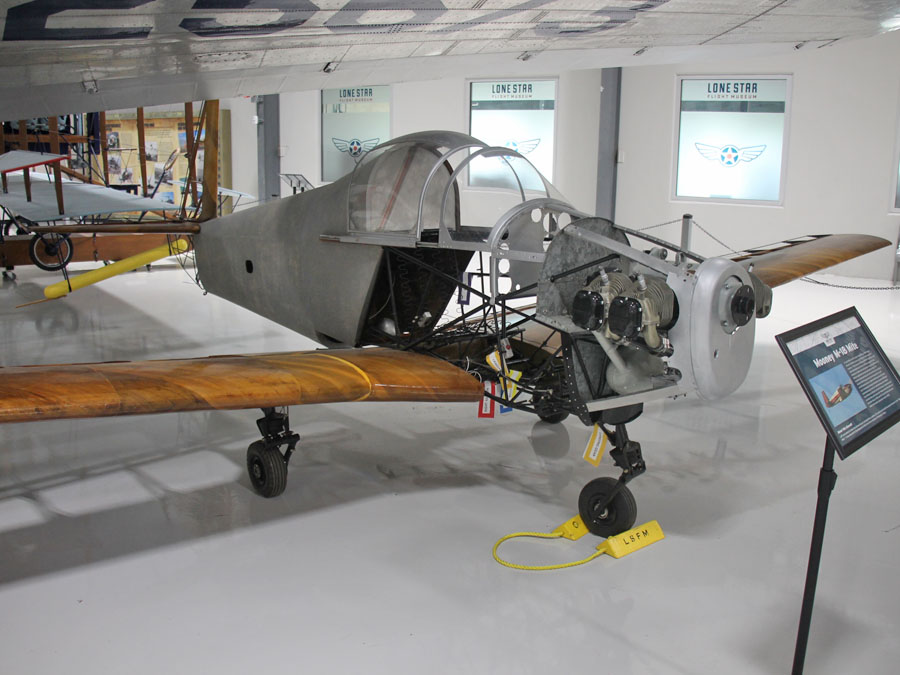
Mooney M-18 Mite, built before 1955, had extremely low operating costs
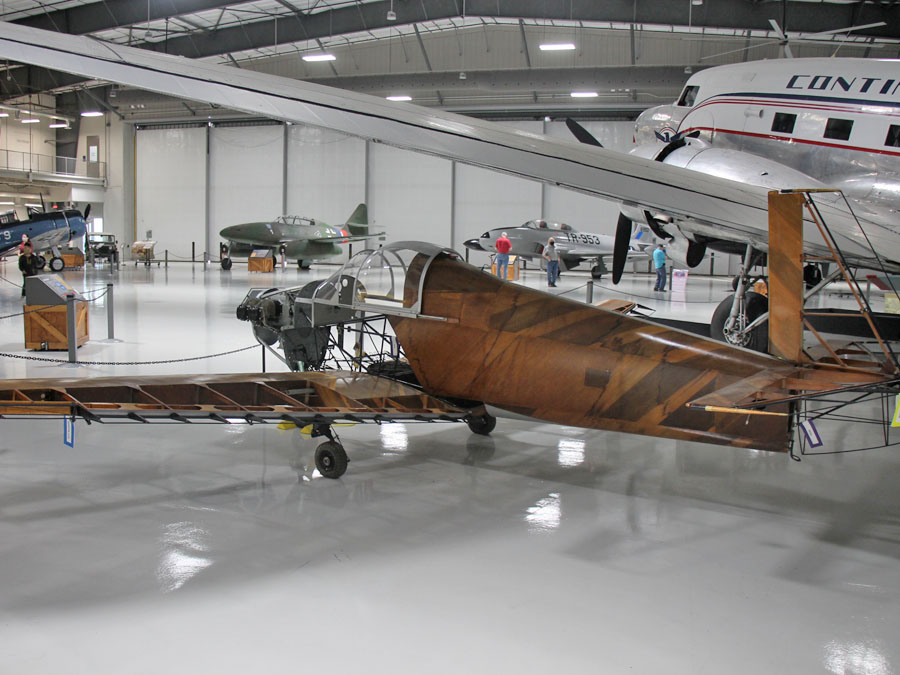
The "Naked Mite" was left uncovered to show internal layout and operating systems
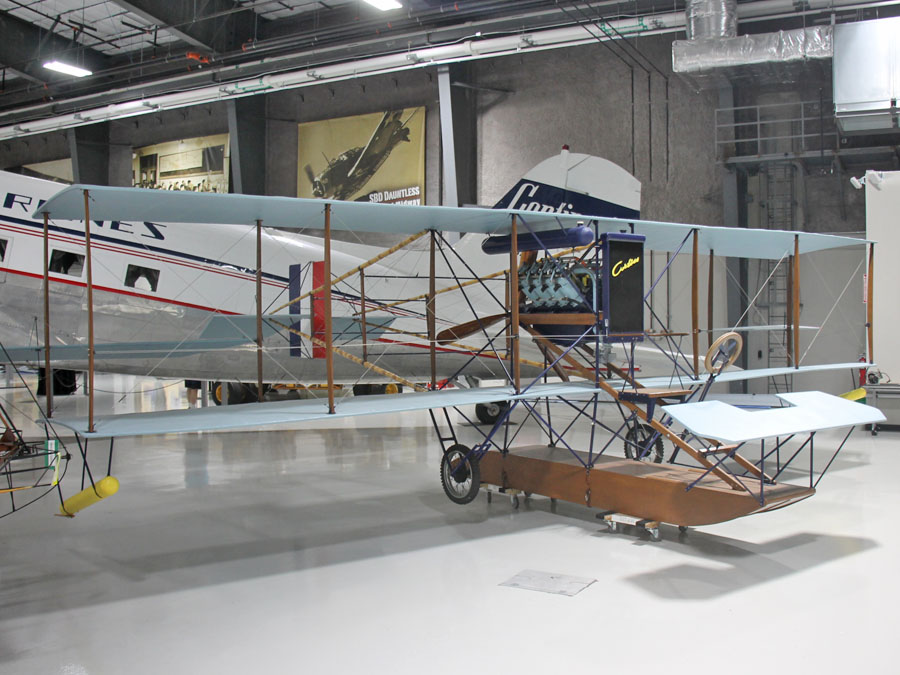
Replica 1911 Curtiss A-1 Triad, first aircraft purchased by the US Navy & could land on water or land
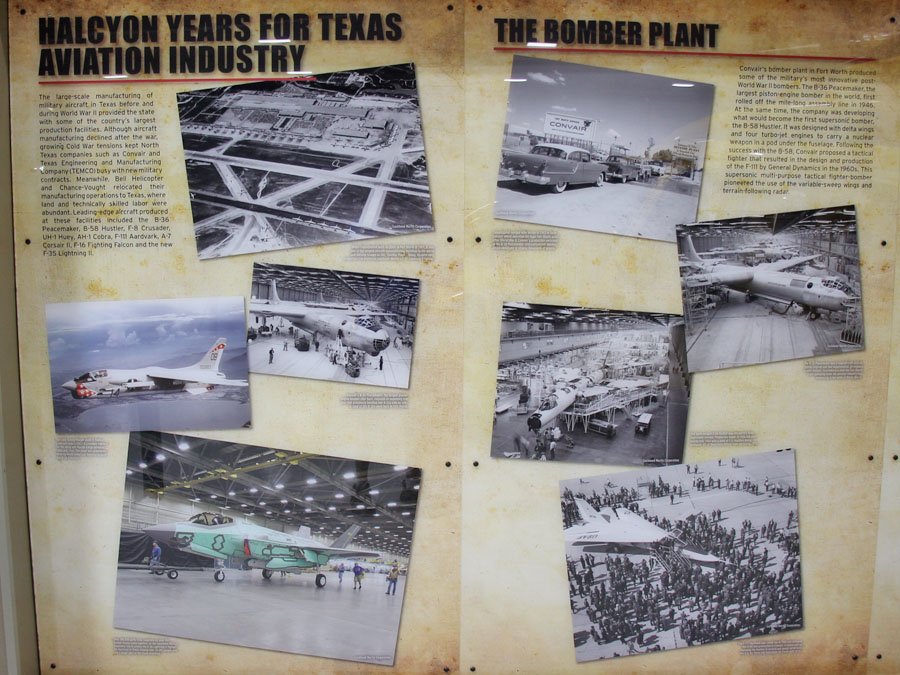
Consolidated's 1941 Plant in Ft. Worth would build the B-36, B-58, F-8, F-111, F-16 & F-35
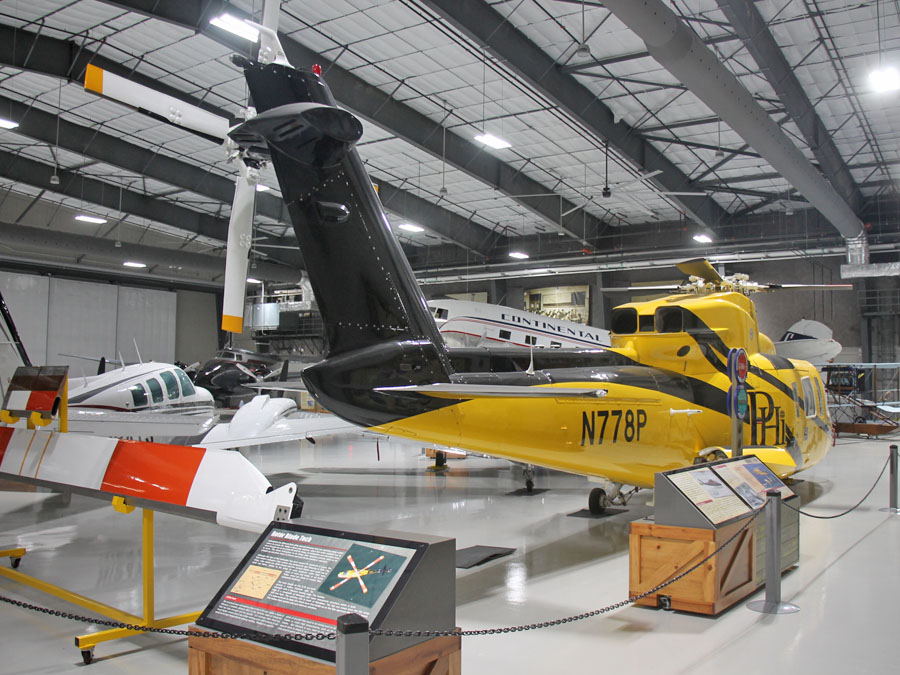
Sikorsky S-76A built in 1979, used for oil exploration transport and retired in 2016
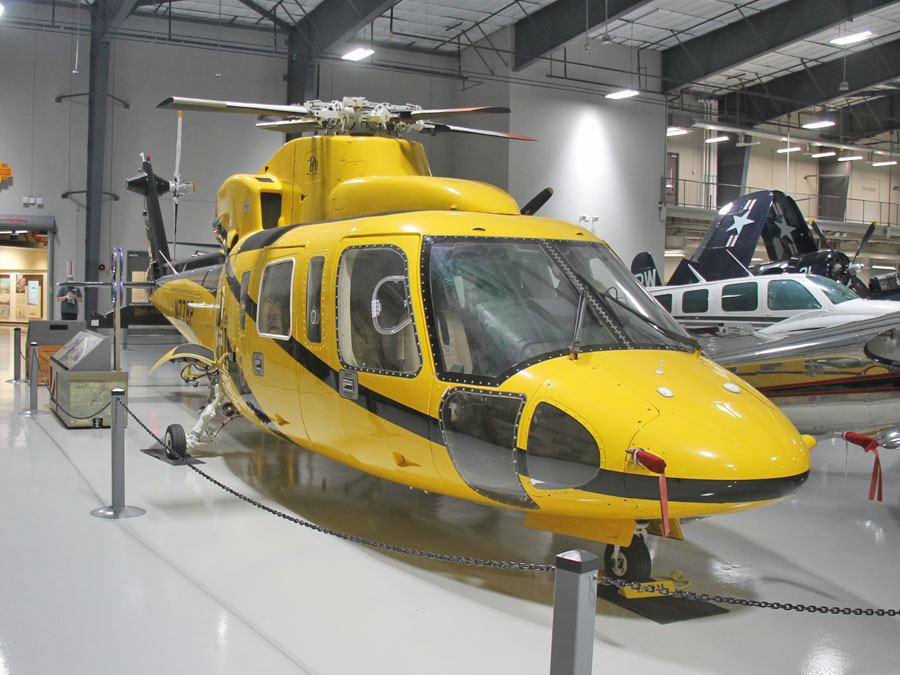
The S-76 was Sikorsky's first civilian market helicopter based on the UH-60 Blackhawk
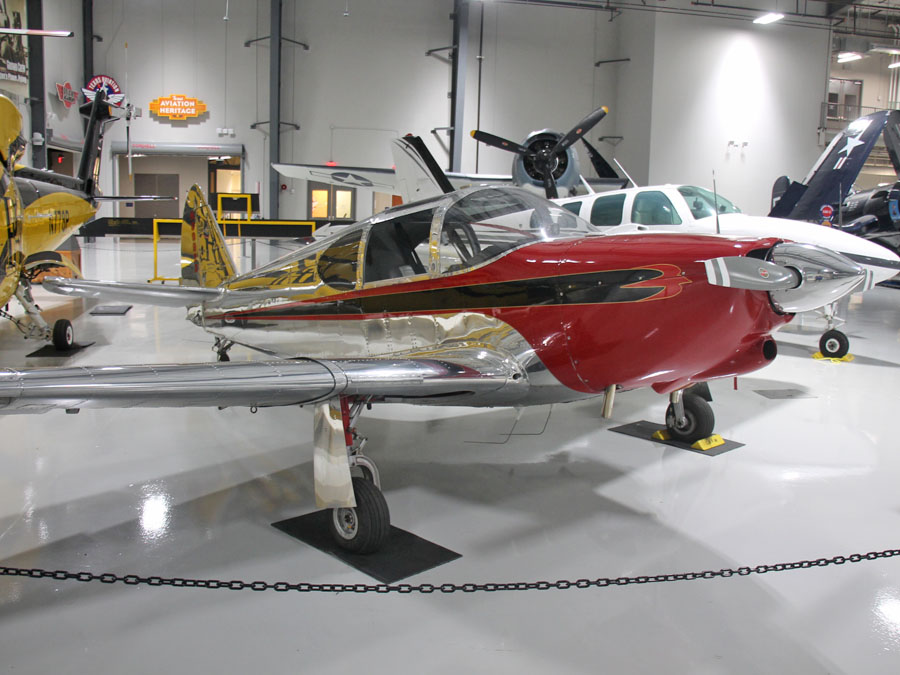
Globe GC-1B Swift built in 1946, completely rebuilt and modernized in 2011
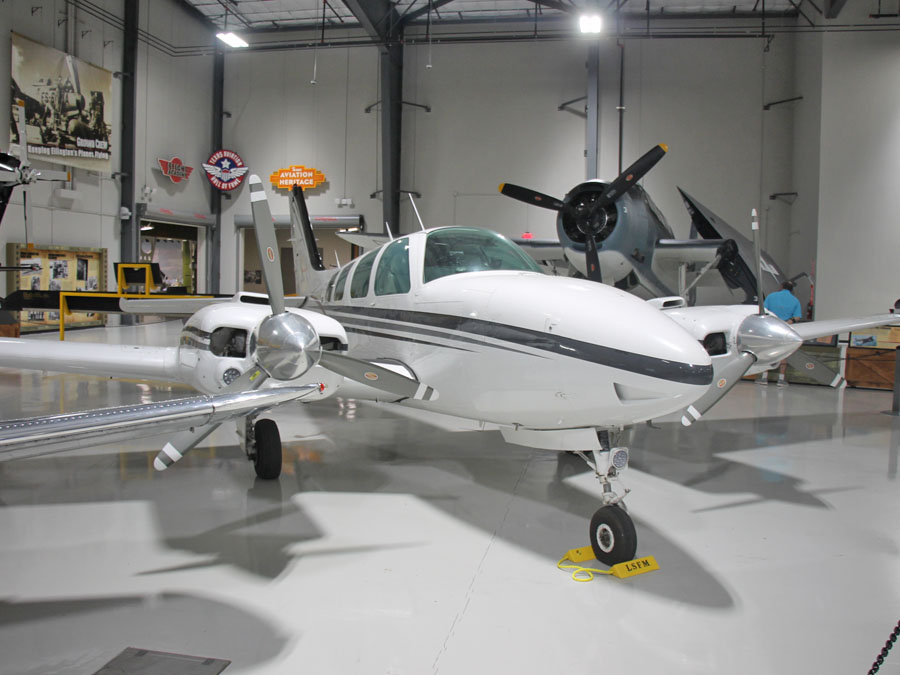
Beechcraft Baron B-58 built in 1978 in Wichita, Kansas
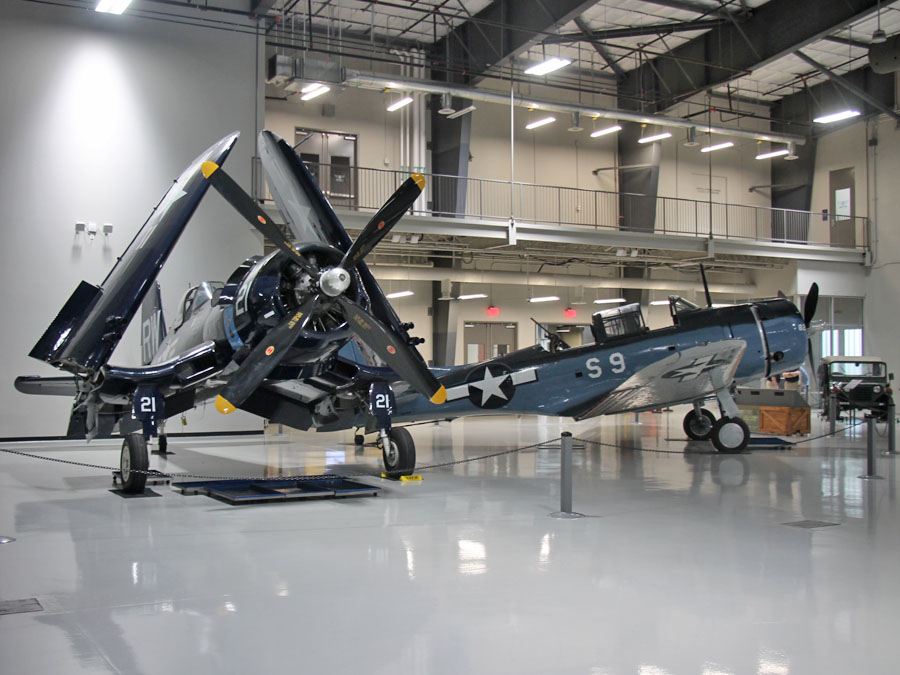
Move on to the WWII carrier based aircraft
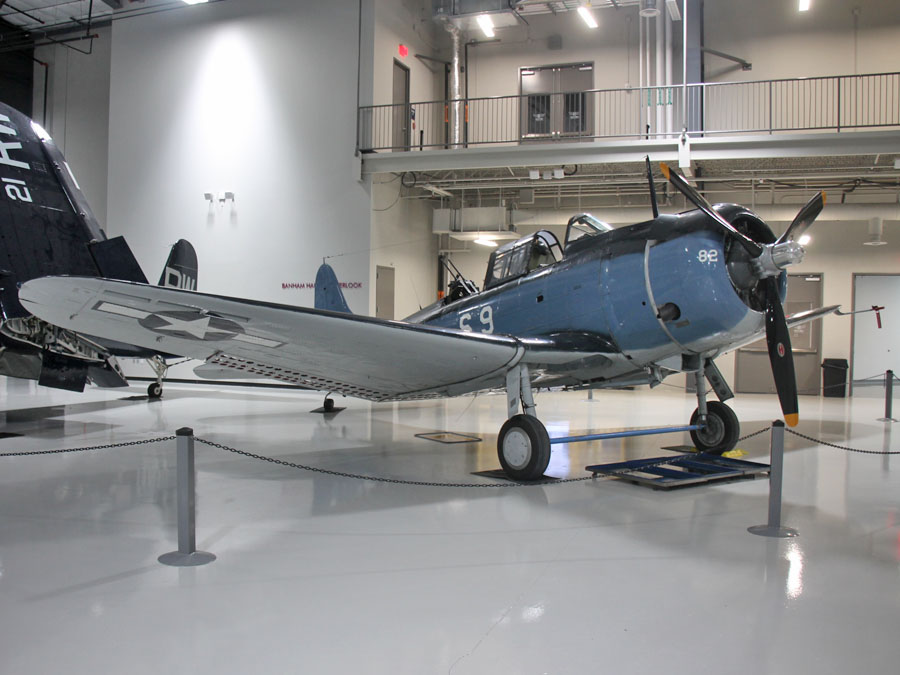
Douglas SBD Dauntless built as a A-24B in 1942 was made air worthy again in 1997
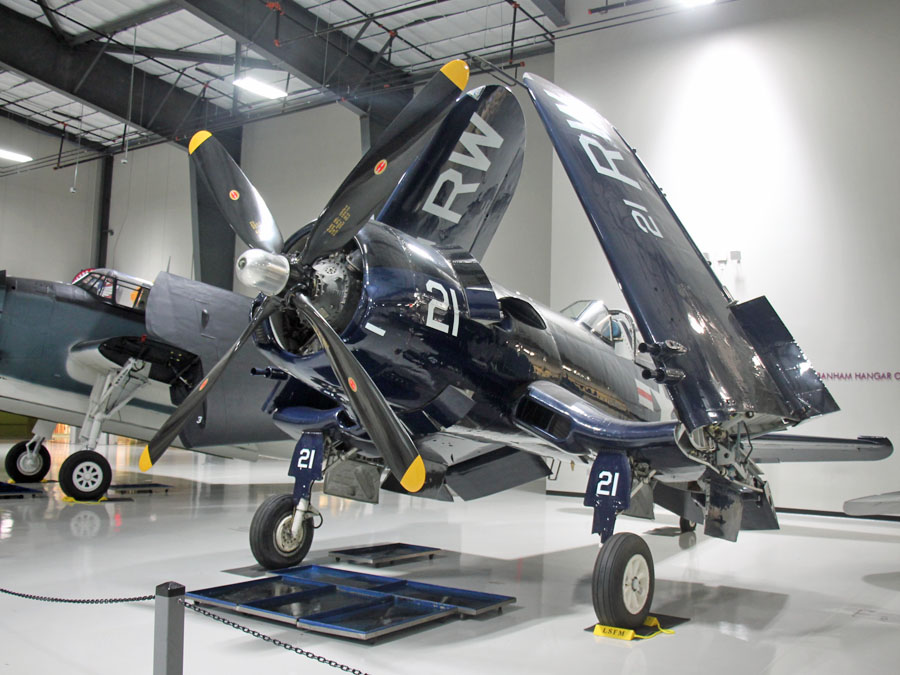
Chance Vought F4U-5N Corsair was an Argentina night fighter & later an outdoor display for 30 years
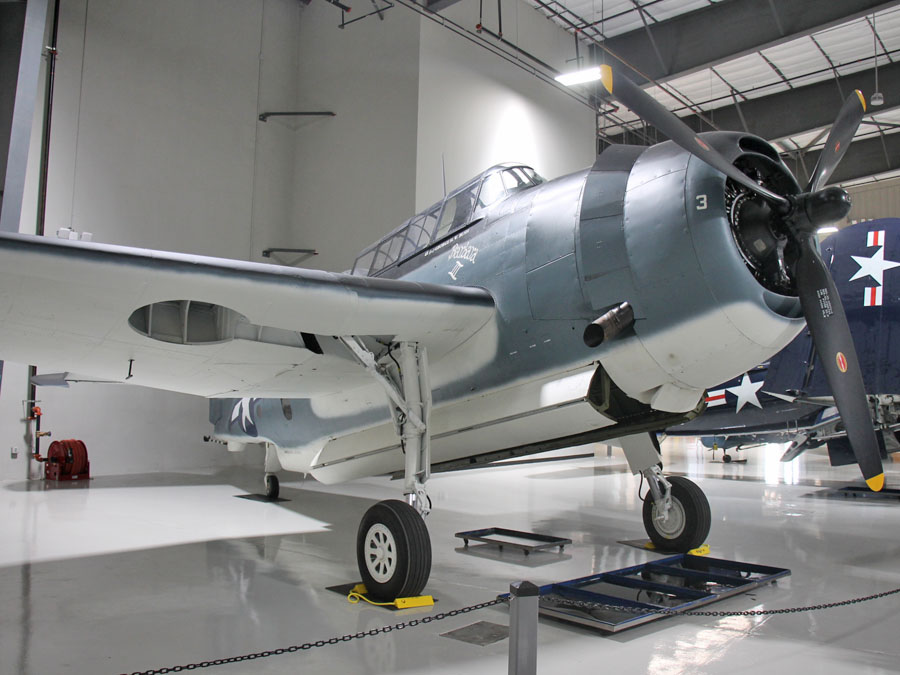
General Motors TBM-3E Avenger built in June 1945 and retired in 1953
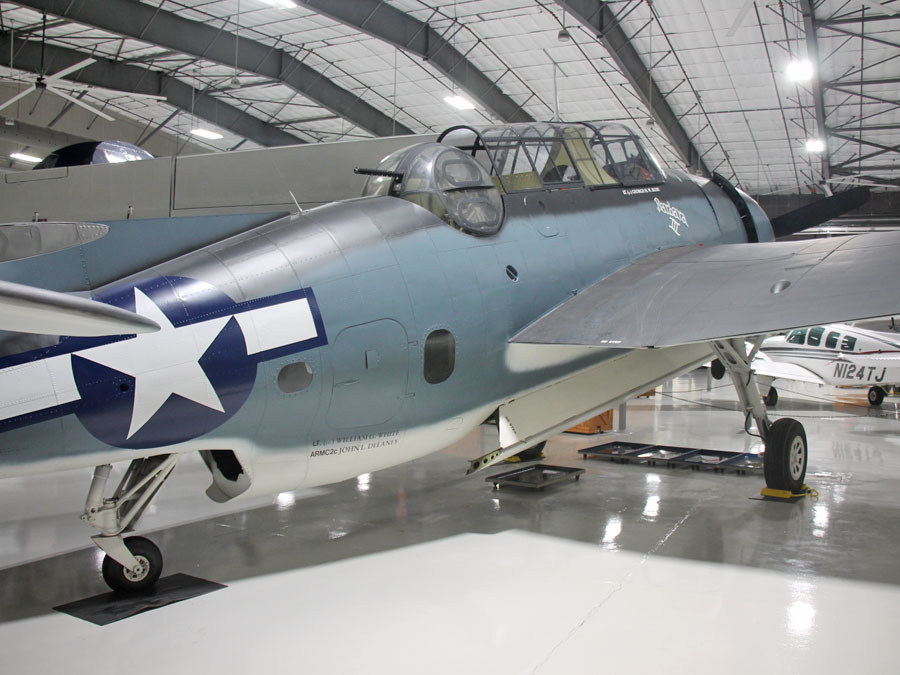
Type of aircraft future President George H.W. Bush was shot down by the Japanese in 1944
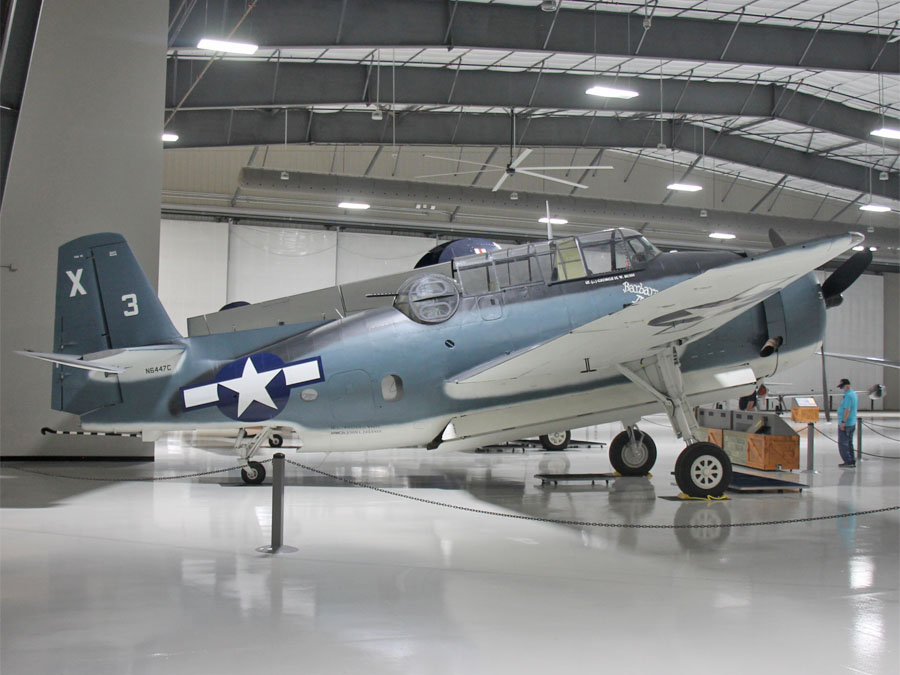
This enormous torpedo bomber was used as a crop duster from 1965 to 1988
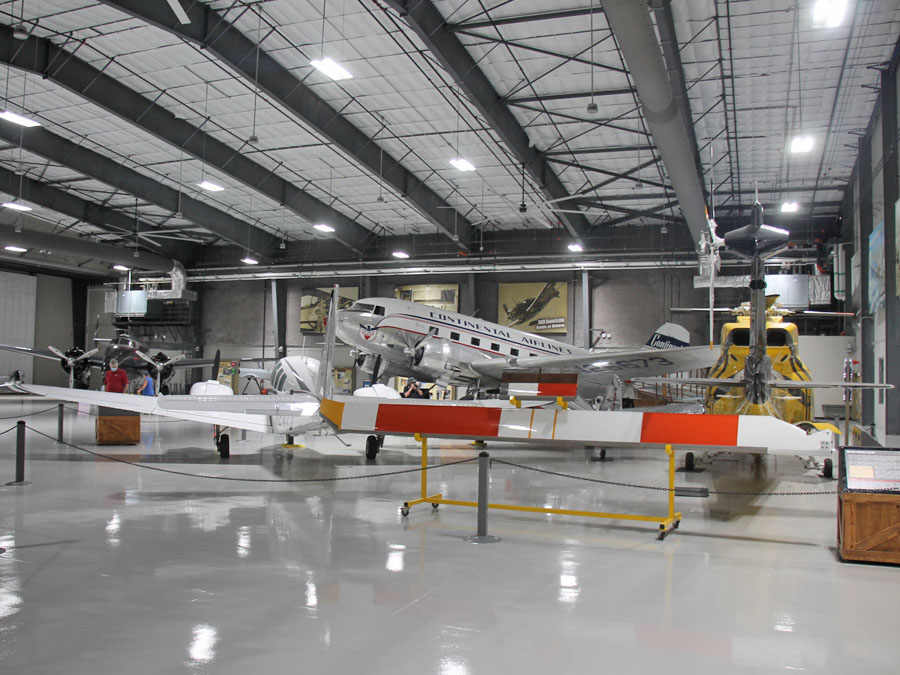
Final view of the DC-3 hangar with removed Sikorsky S-76A rotor blade
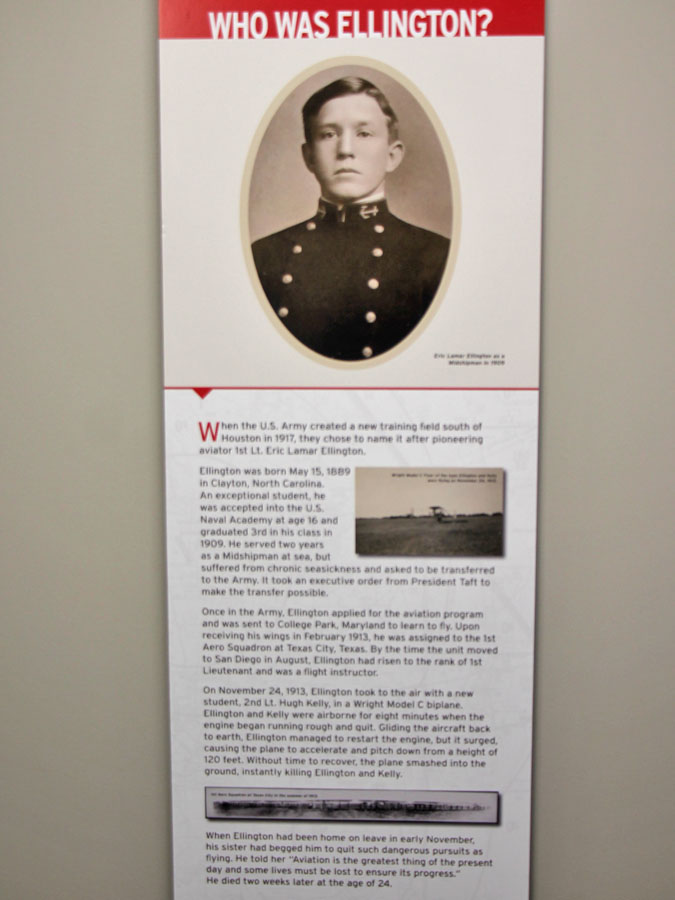
Ellington's namesake pilot crashed on November 24, 1913 and died 2 weeks later
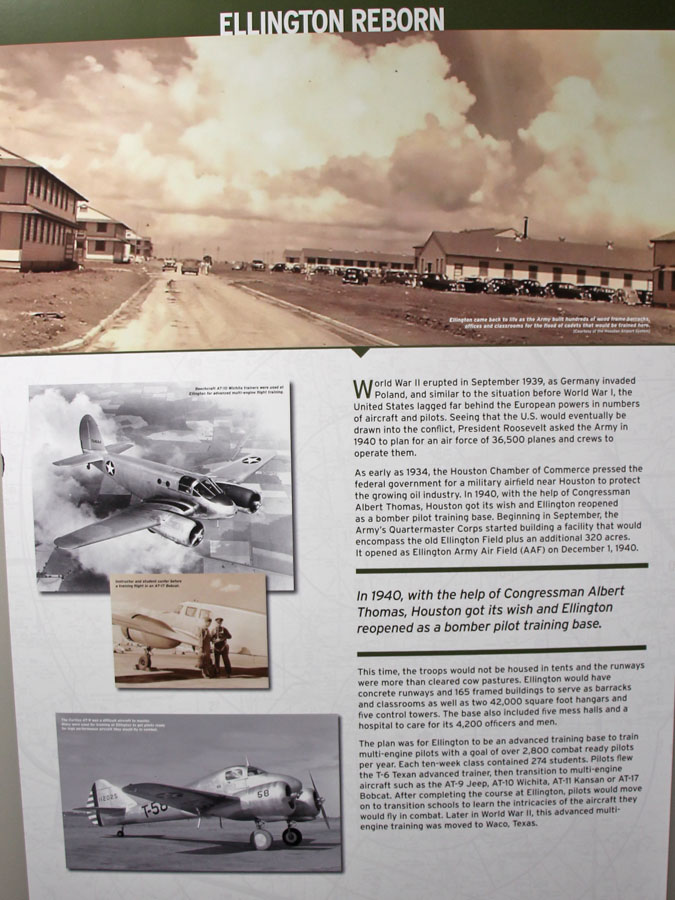
Ellington was a bomber training base in WWI & was reopened as an advanced training base in 1940
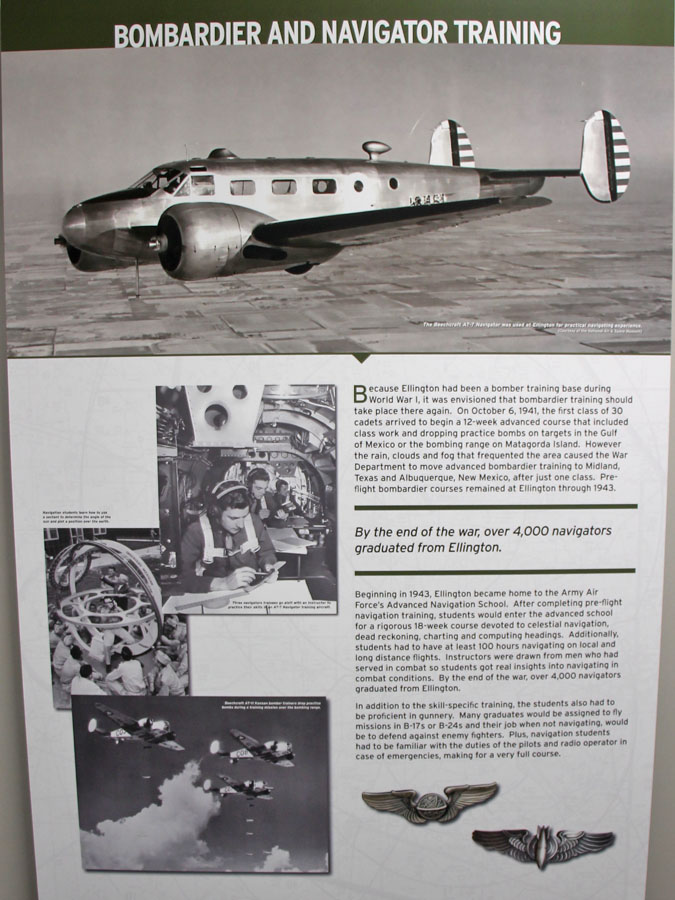
Ellington was made the Air Force's Advanced Navigation School in 1943
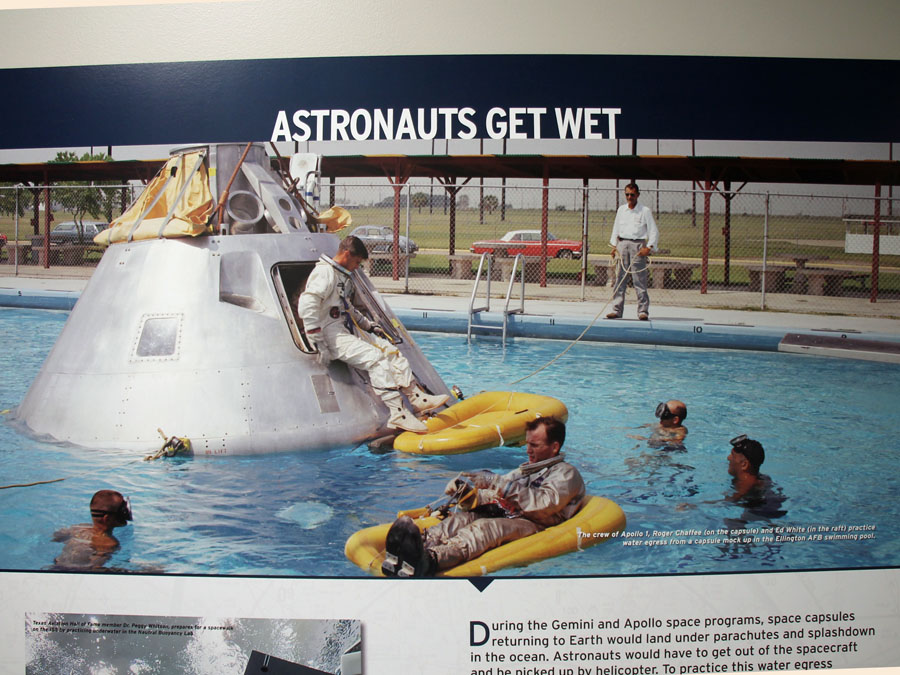
Astronauts trained in Ellington's swimming pool before JSC's B29 WET-F was built

The museum recognizes Texas heroes of aviation including trailblazers & wartime aviators
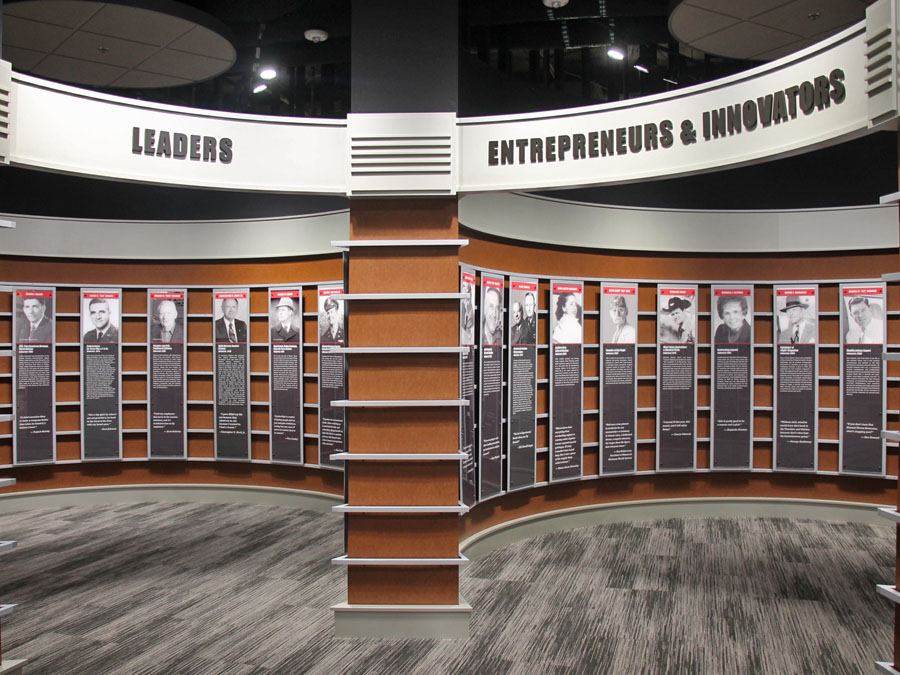
Two more wings showcase aviation leaders and entrepreneurs/innovators
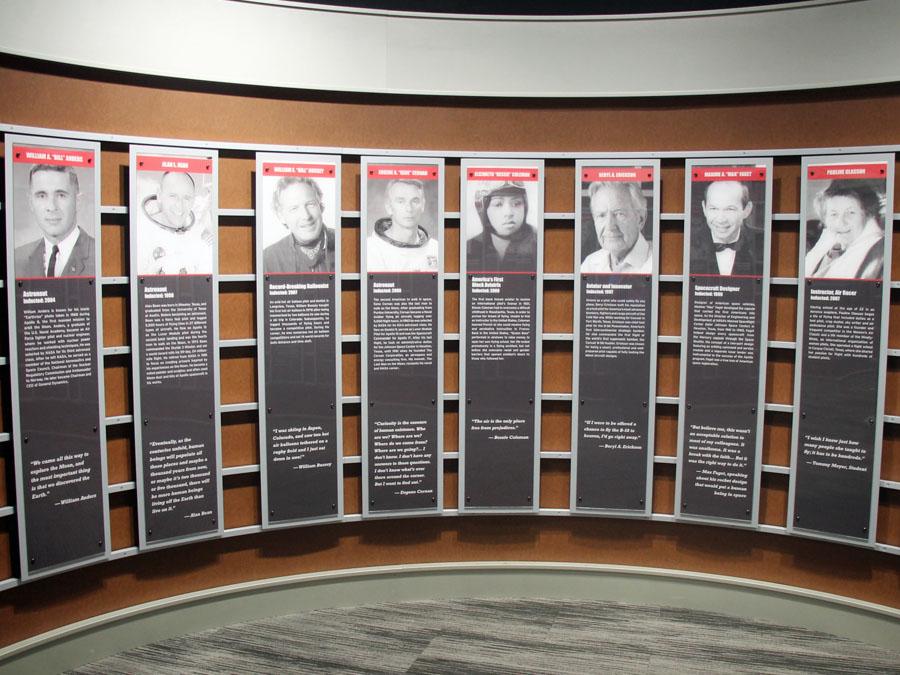
Trailblazers include many astronauts and several firsts in aviation
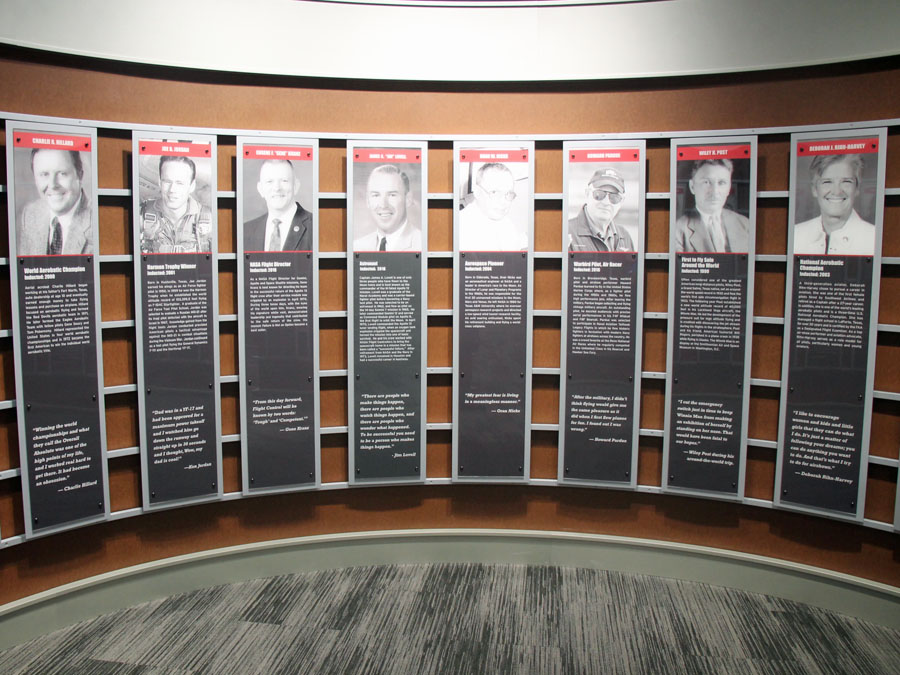
More trailblazing air racers, acrobatic champions, and first to solo fly the world
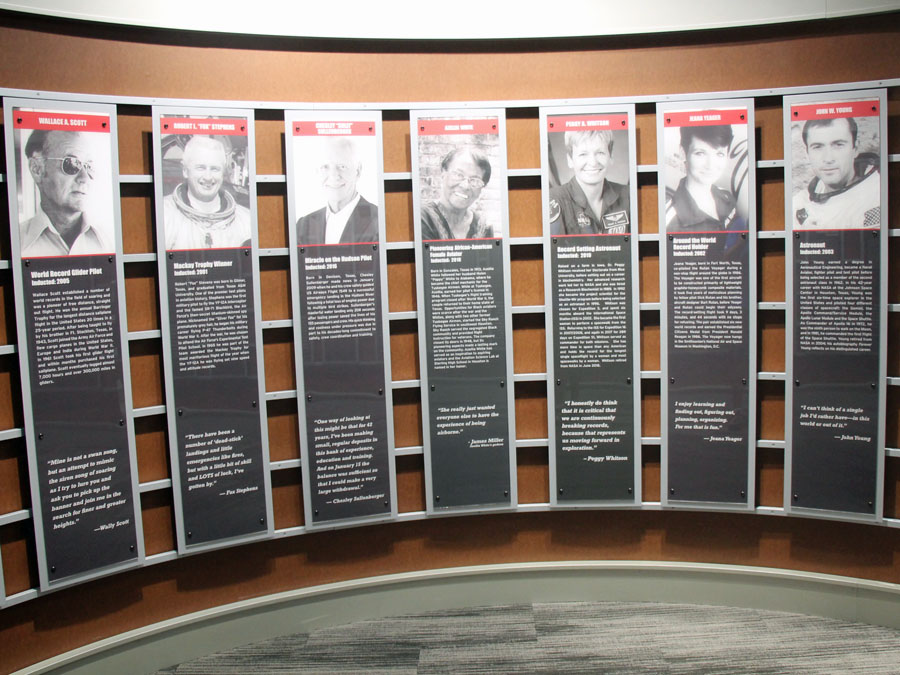
Trailblazing glider pilot, astronauts, Sully Sullenberger and Azellia White complete the hall
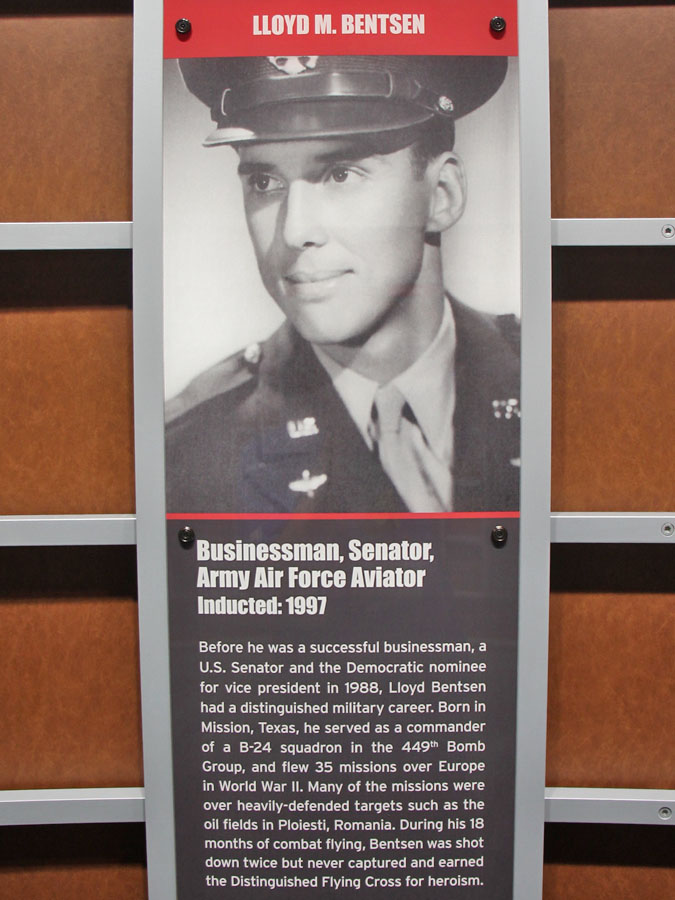
Future Senator Lloyd Bentsen II flew 35 B-24 missions over Europe in WWII
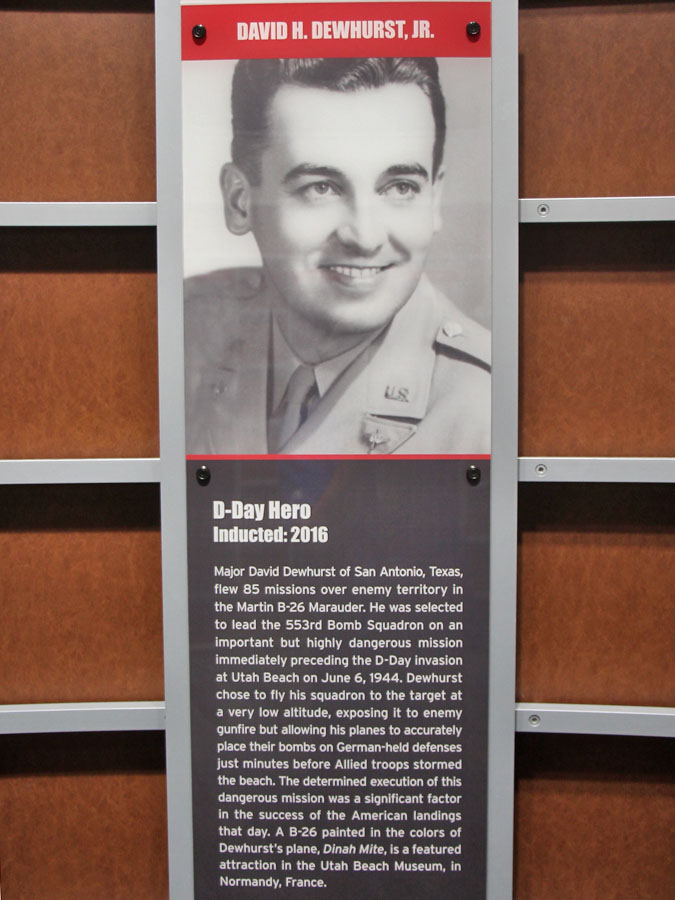
David Dewhurst flew B-26 missions over Utah beach leading to a successful landing
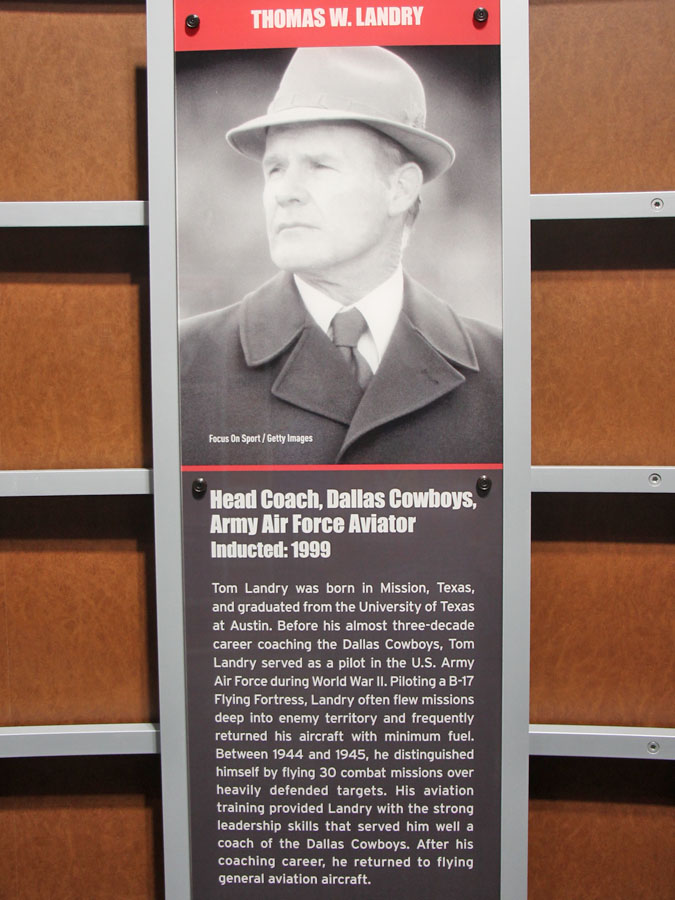
Tom Landry flew 30 B-17 combat missions in WWII before playing DB & FB for the Texas Longhorns
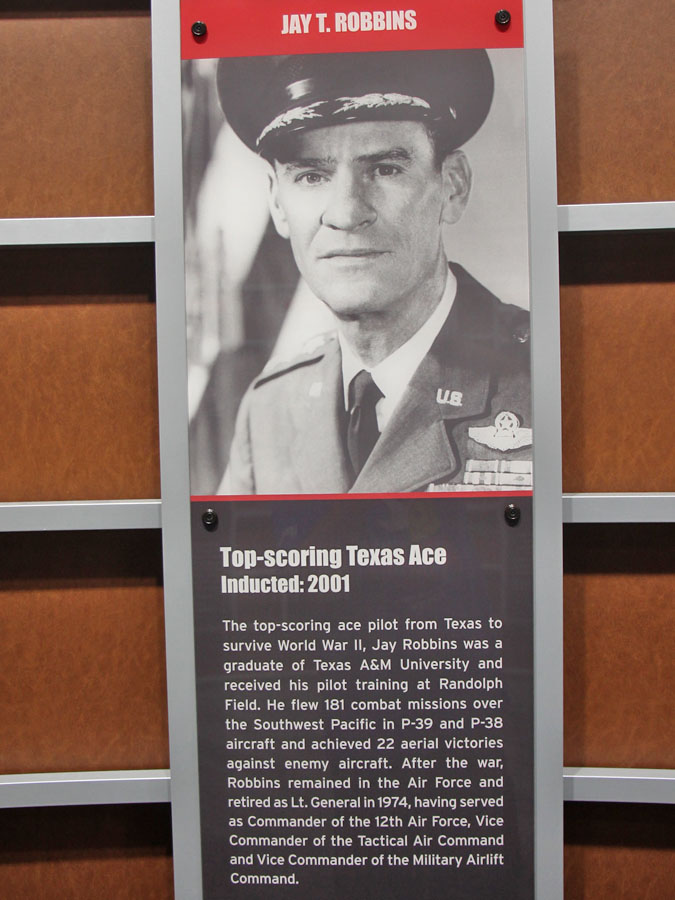
The top scoring (22 victories) surviving Texas pilot ace was aggie Jay Robbins
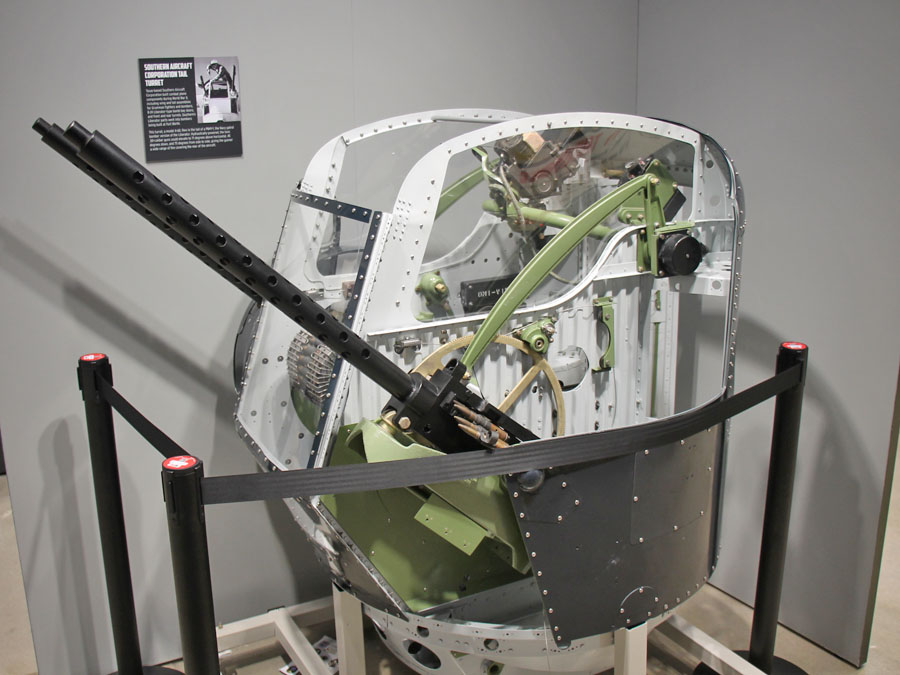
Texas based Southern Aircraft Corp. provided B-24 tail turrents to Ft. Worth

Early photos of San Antonio's Randolph Field, built in 1931
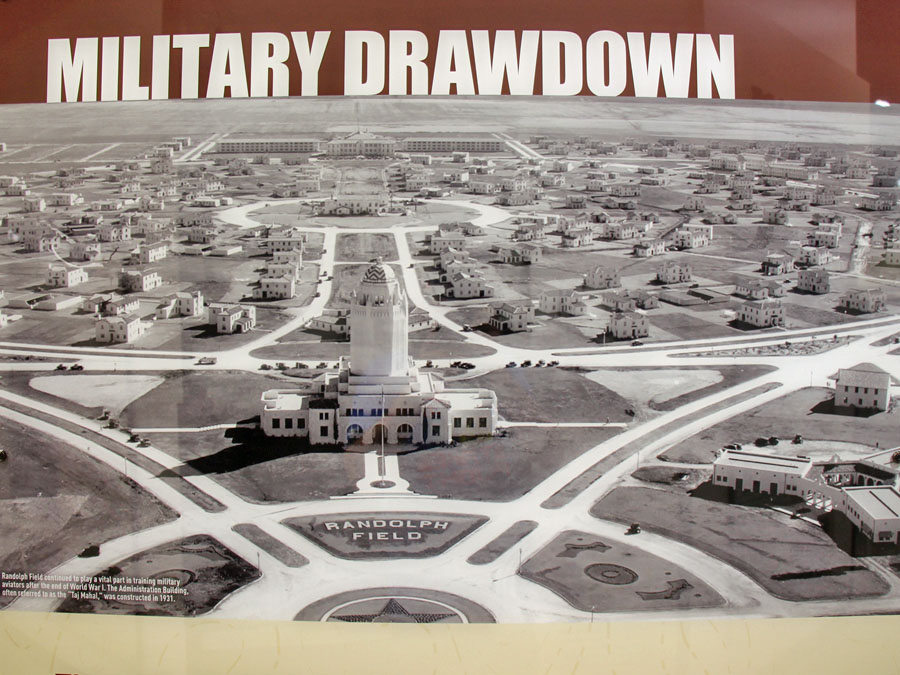
Randolf Field's administration building was known as the "Taj Mahal"
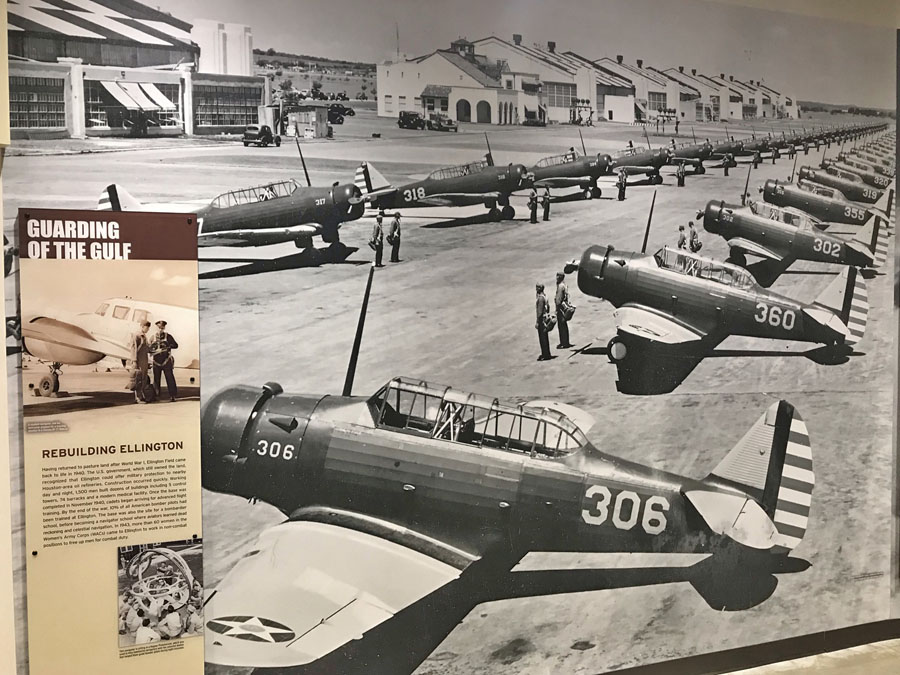
Same aircraft training pilots at Ellington Field starting in November 1940
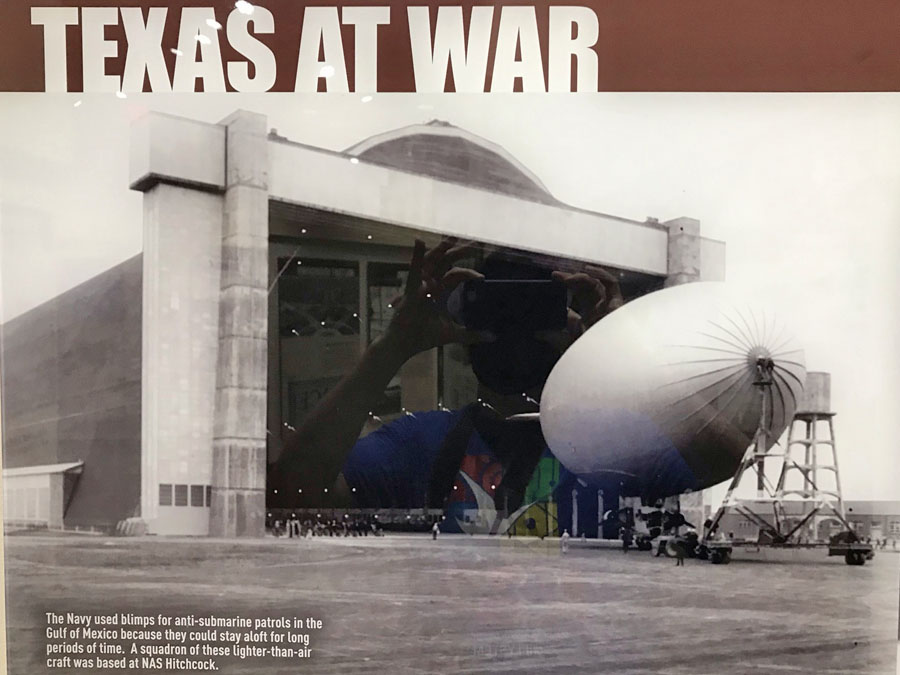
Anti-Submarine hangar in Hitchcock Texas where the columns still remain
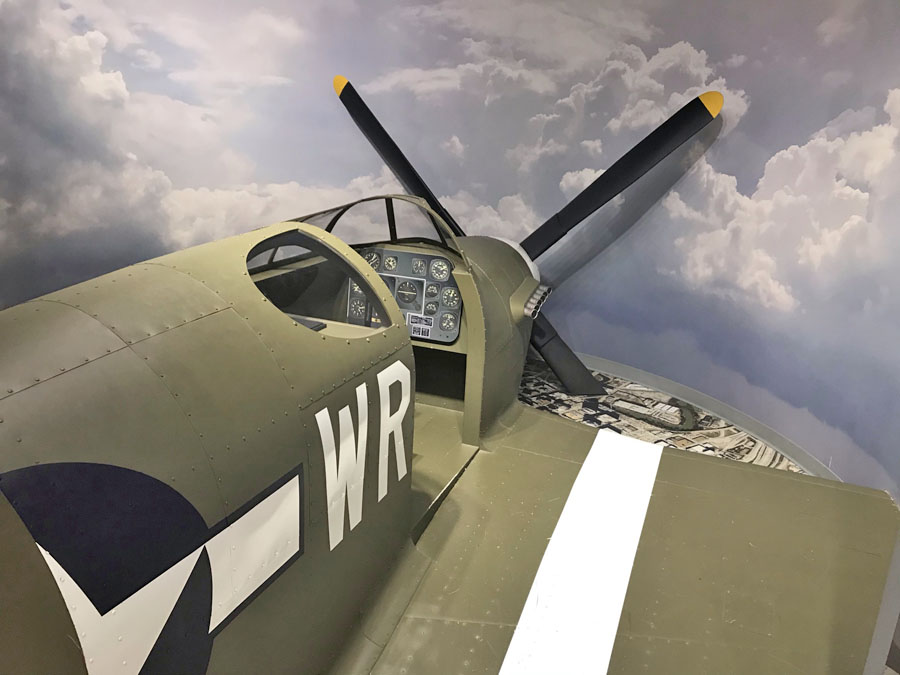
Visit the P-47 mockup in the kids hands on Flight Academy area
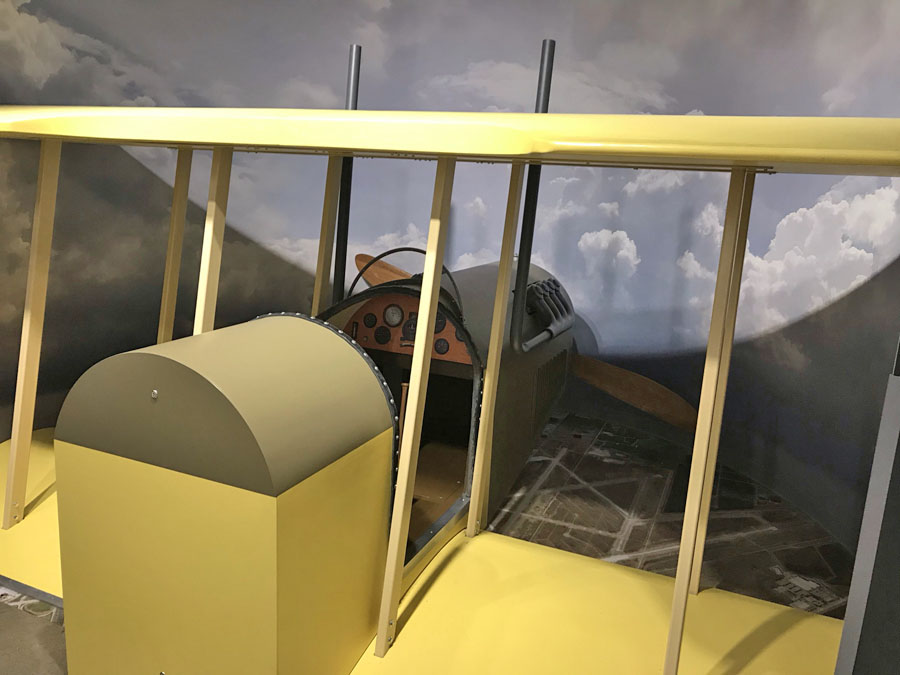
Also visit the Stearman biplane cockpit mockup
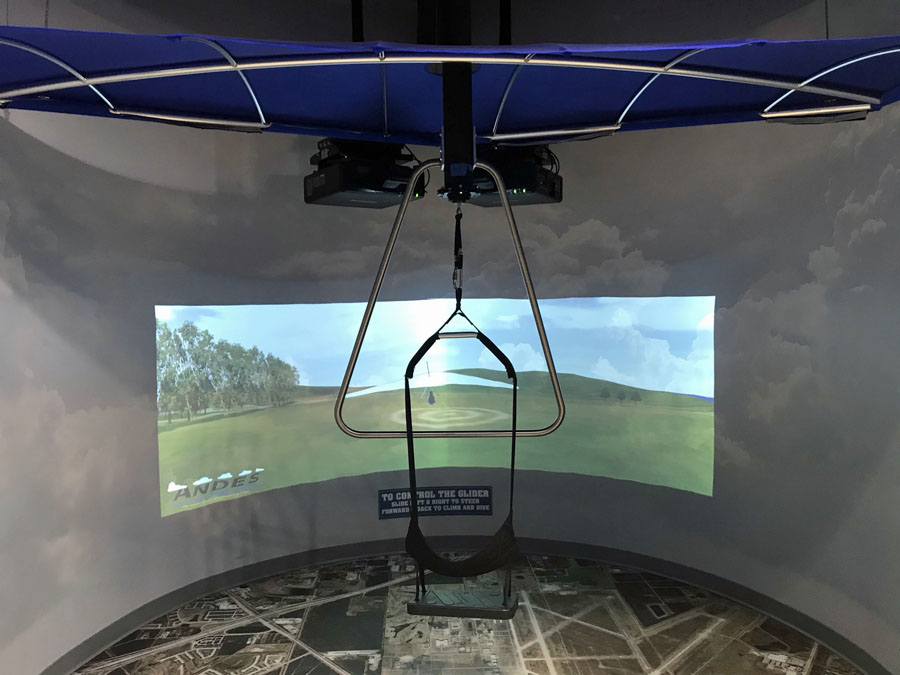
No waiting at the penquin's hang glider simulator
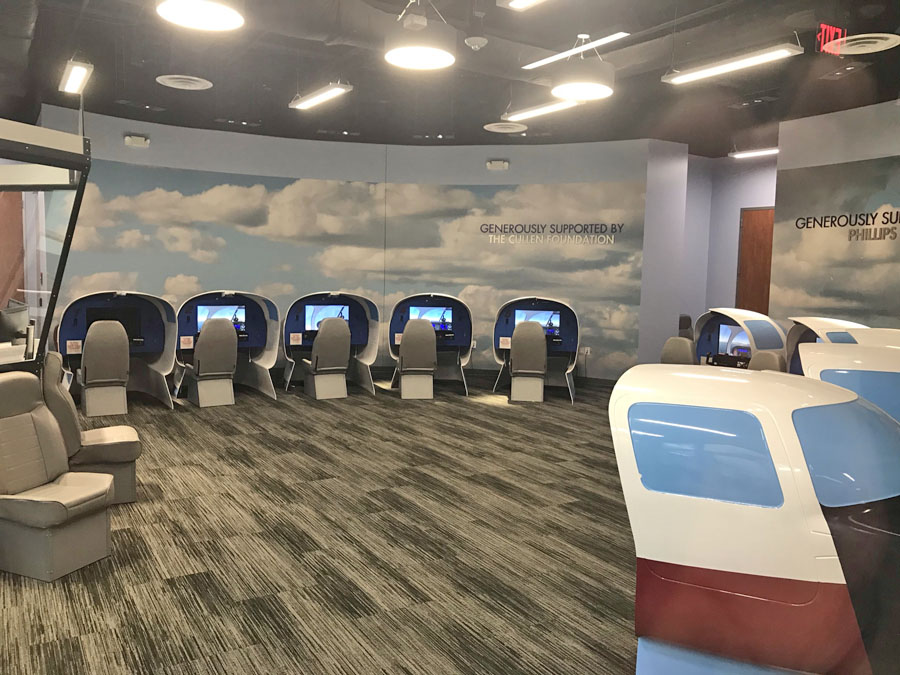
The B-29 is a bigger draw than all flight simulators in the Aviation Learning Center
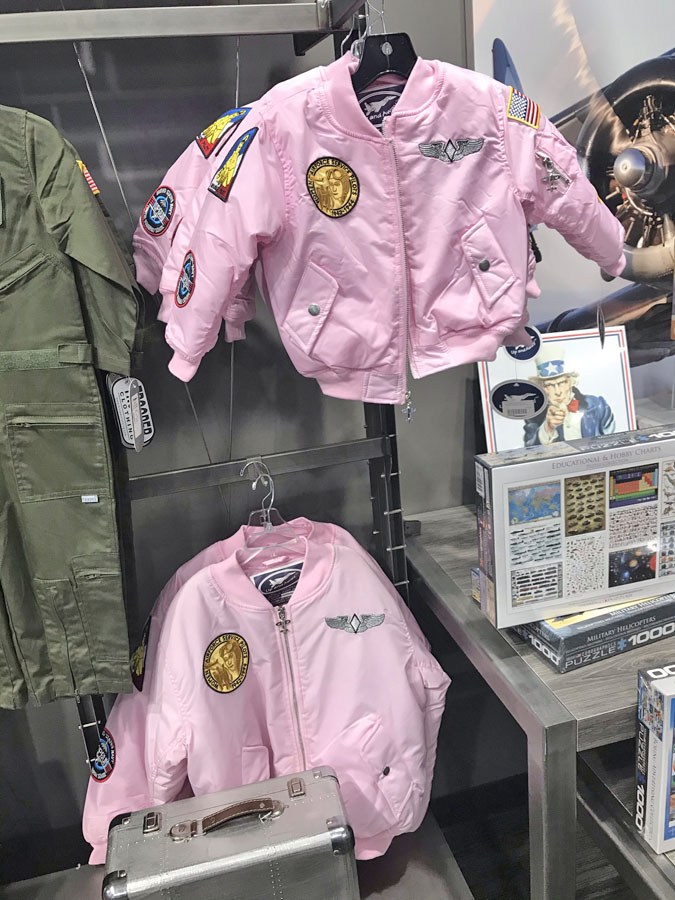
Inside the gift shop are pink bomber jackets for the girls

And brown bomber jackets for the boys
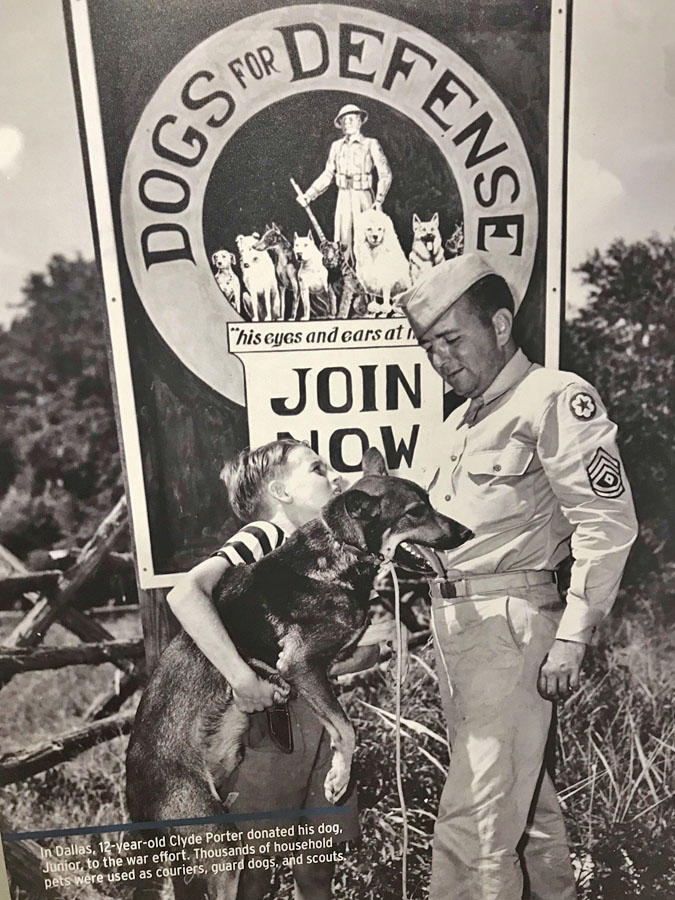
Departing thought, kids also donated their pets to the WWII war effort
National Museum of the USAF at Wright-Patterson Cockpit360 Images rotate & view the entire cockpit.
Direct links to the B-29's Pilot Station, Bombardier Station and Radio Operator Station.
Larger Resolution Photos